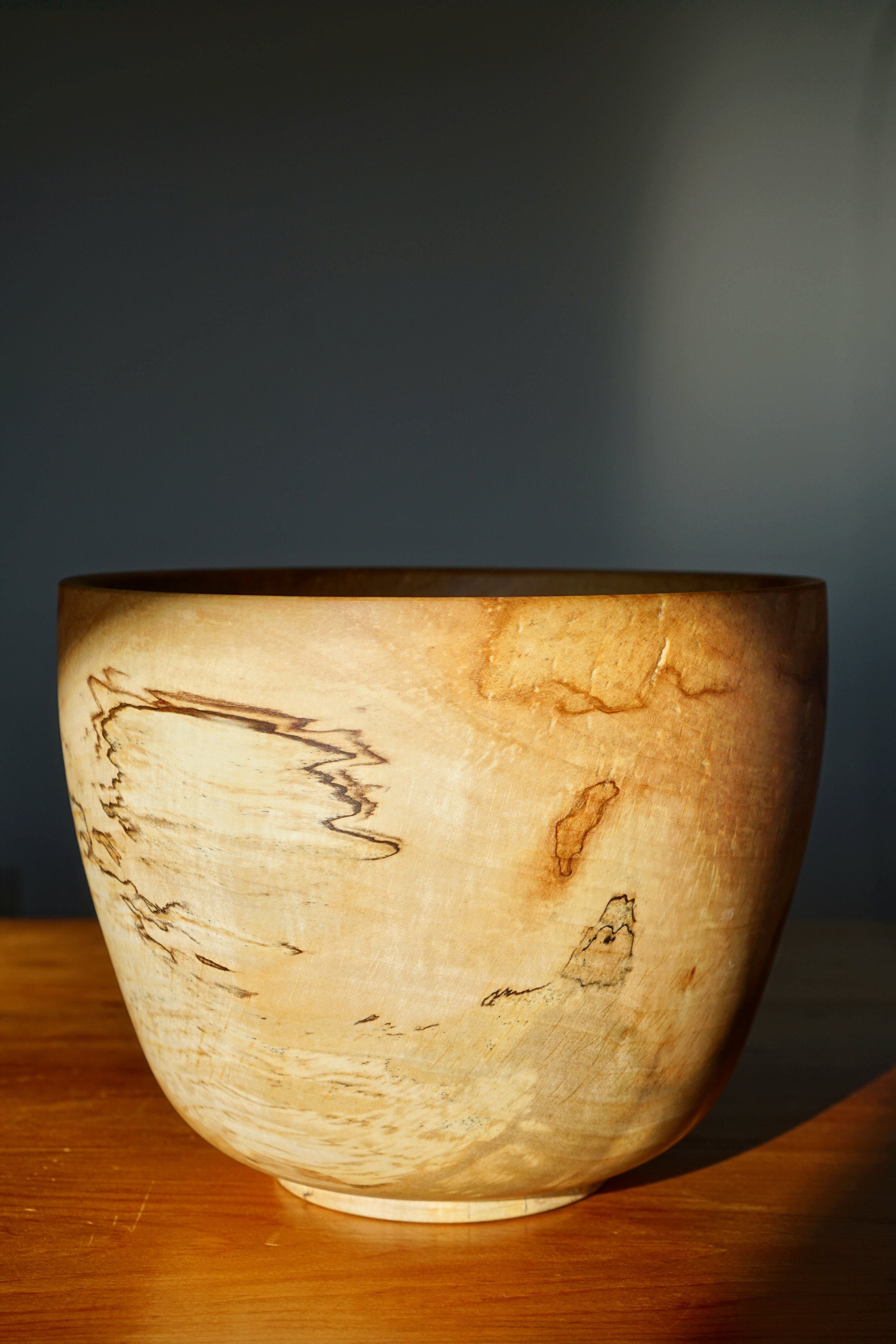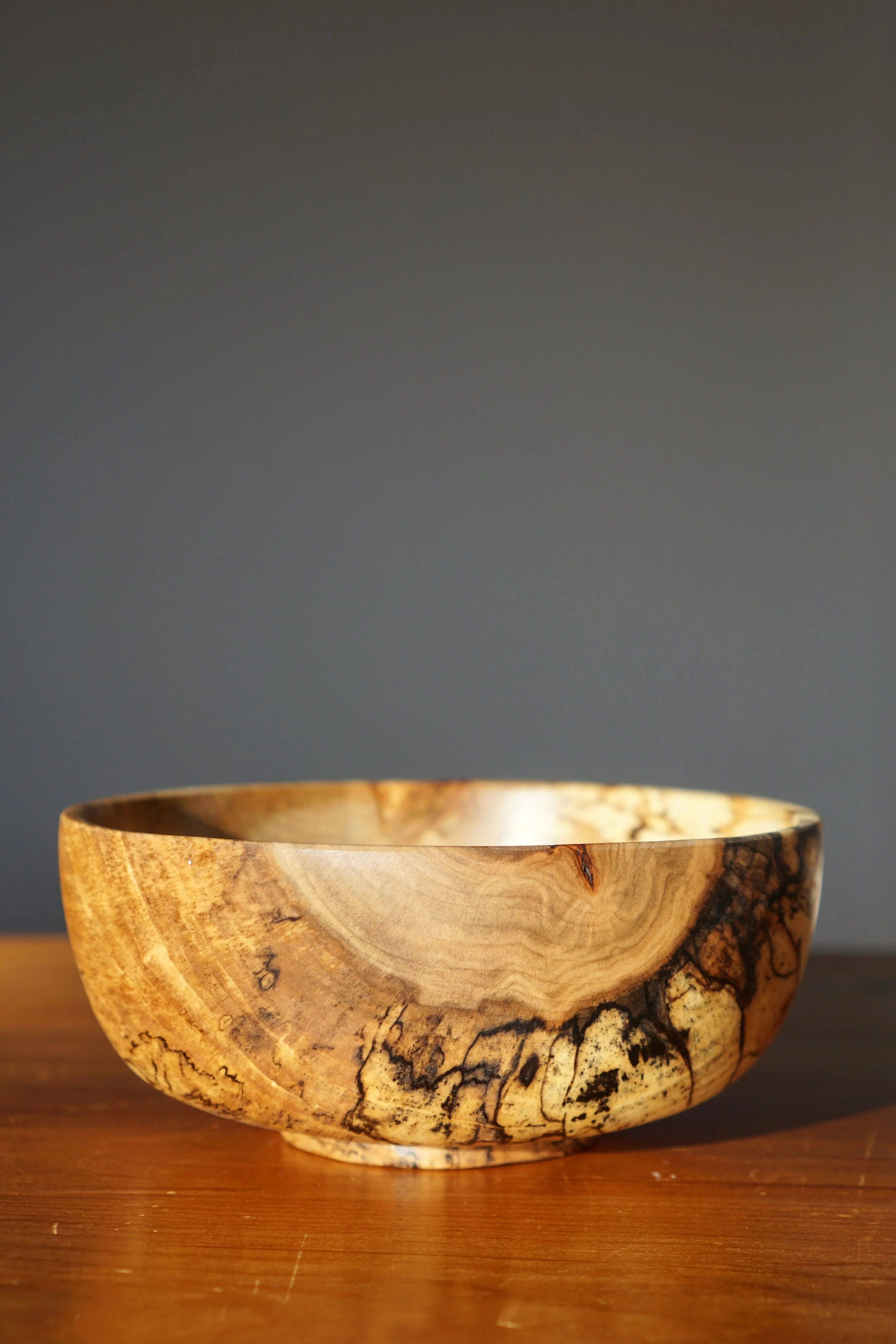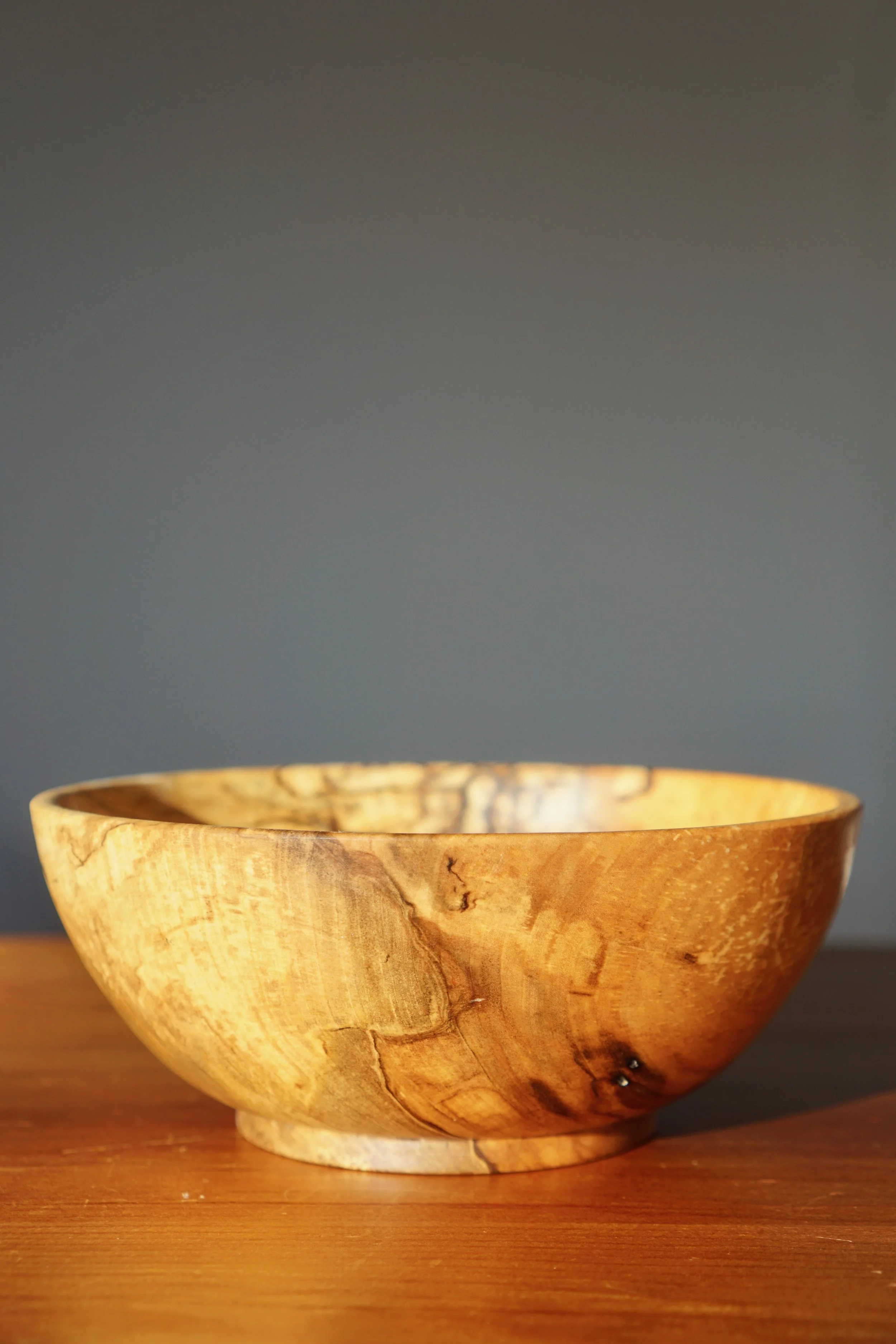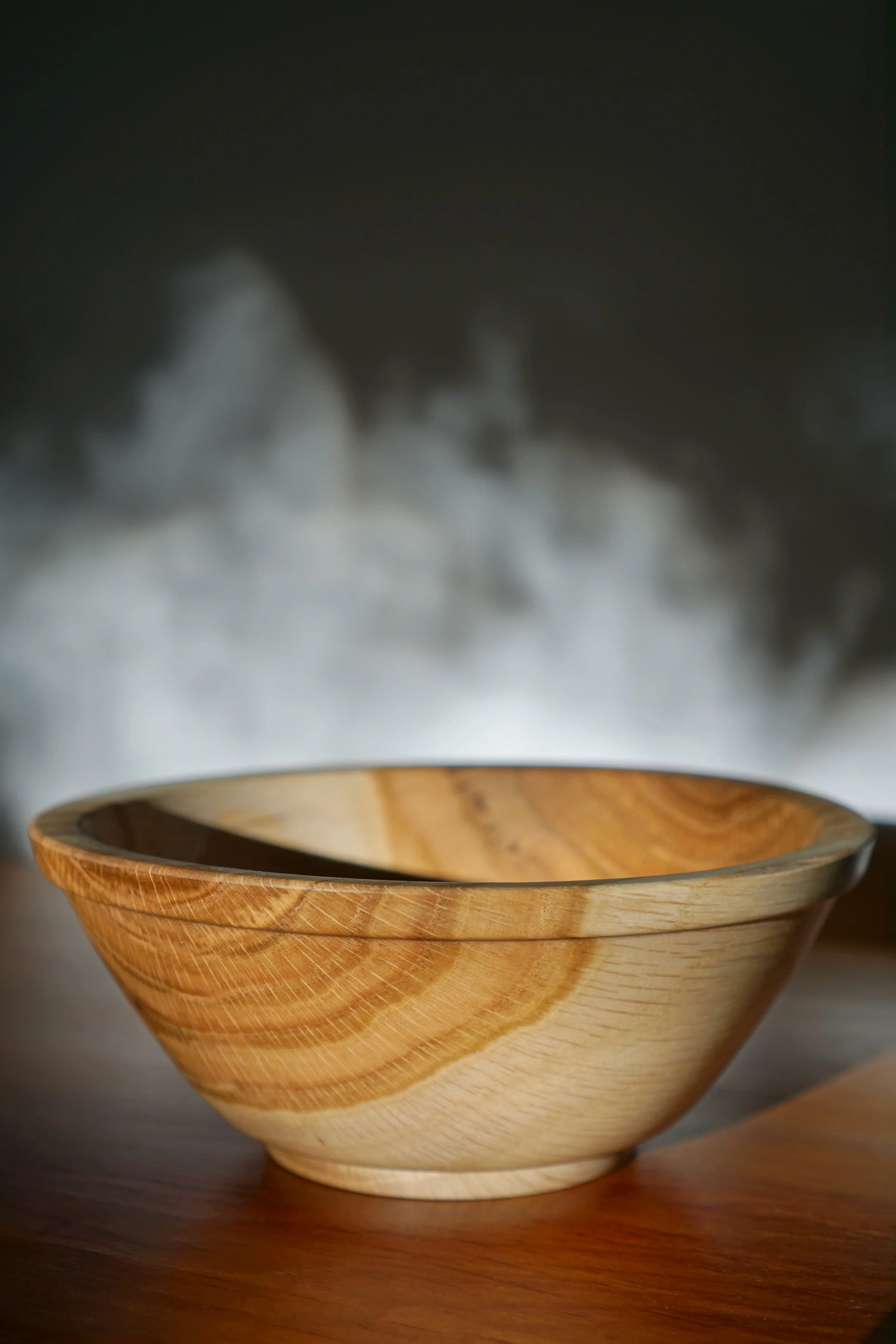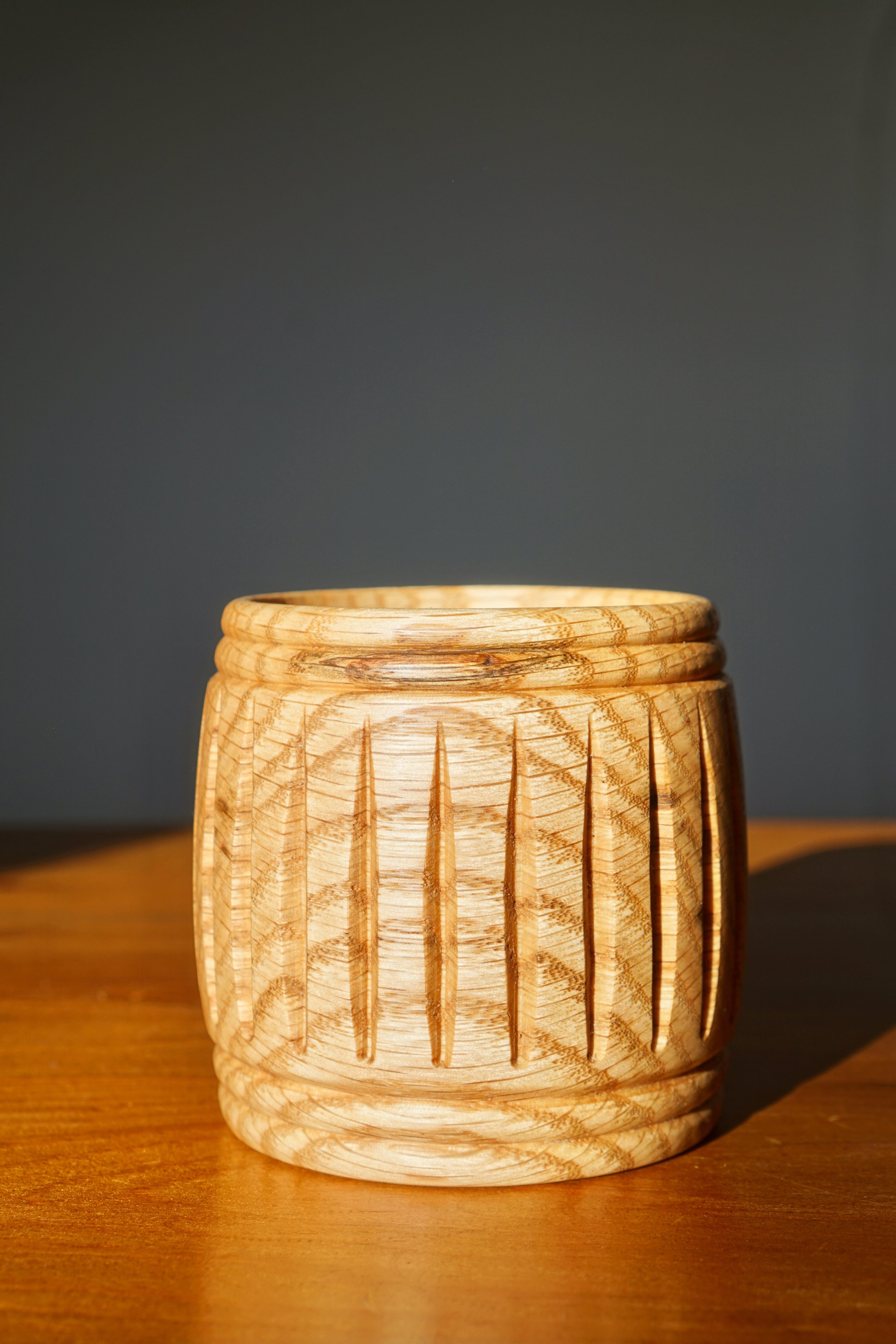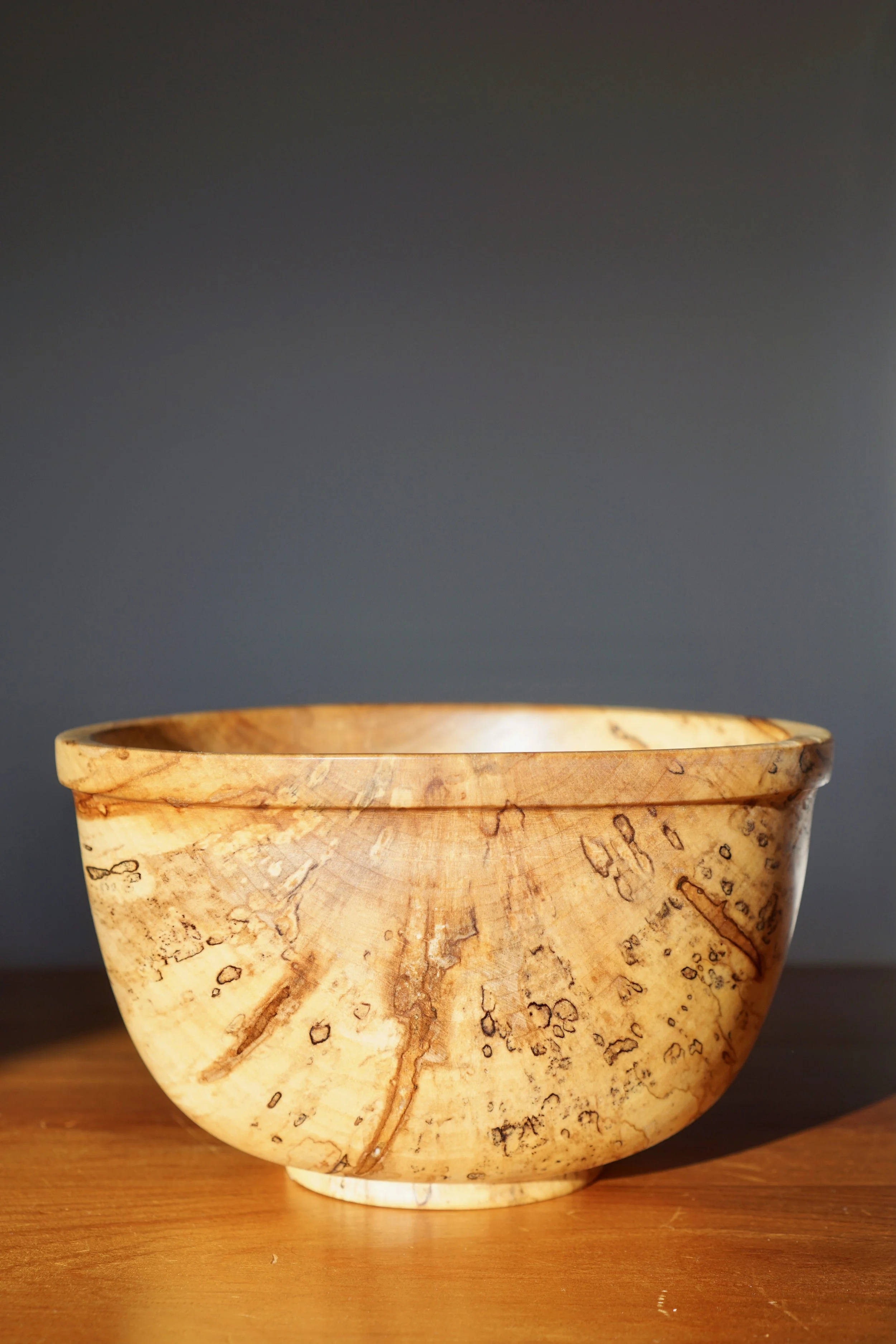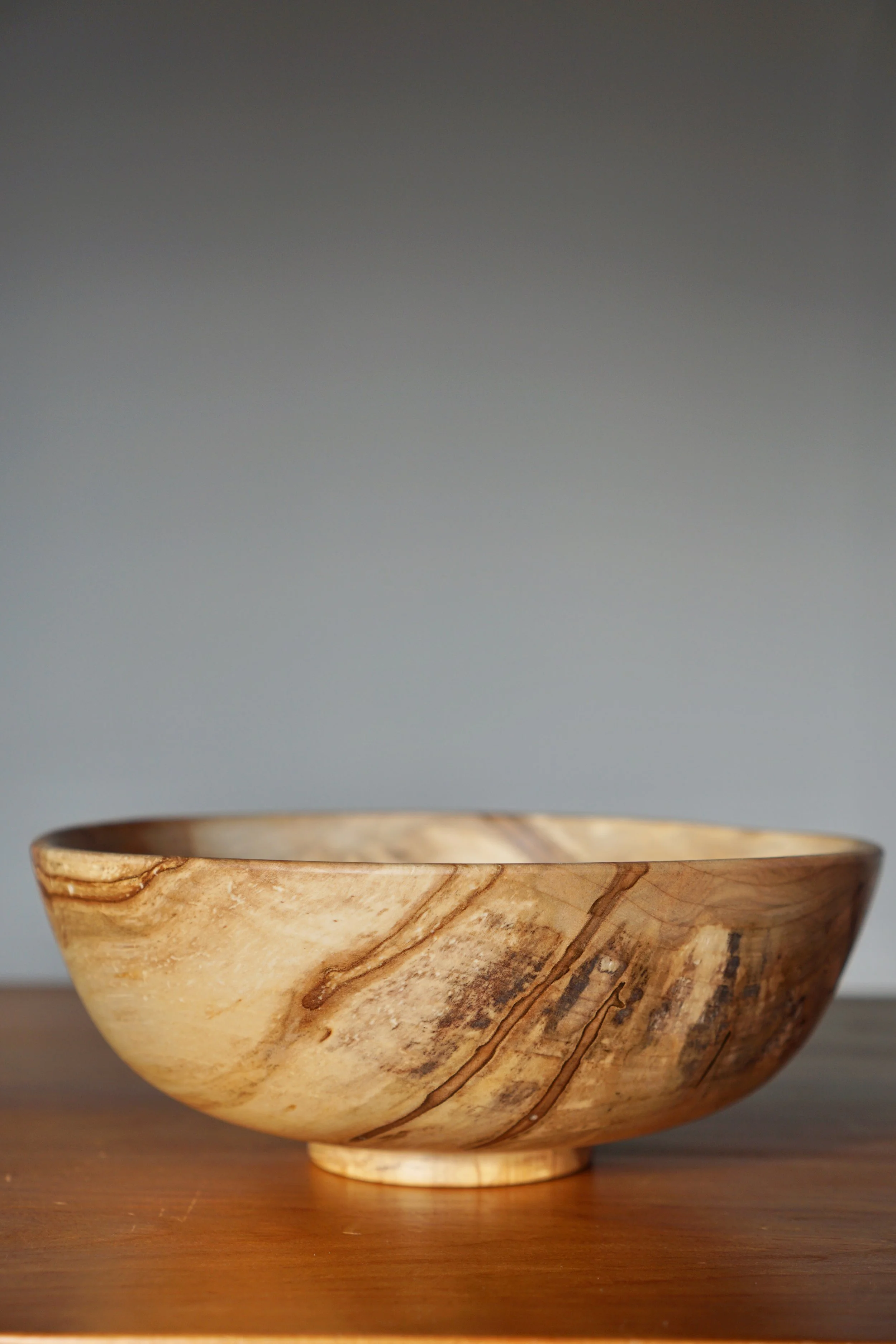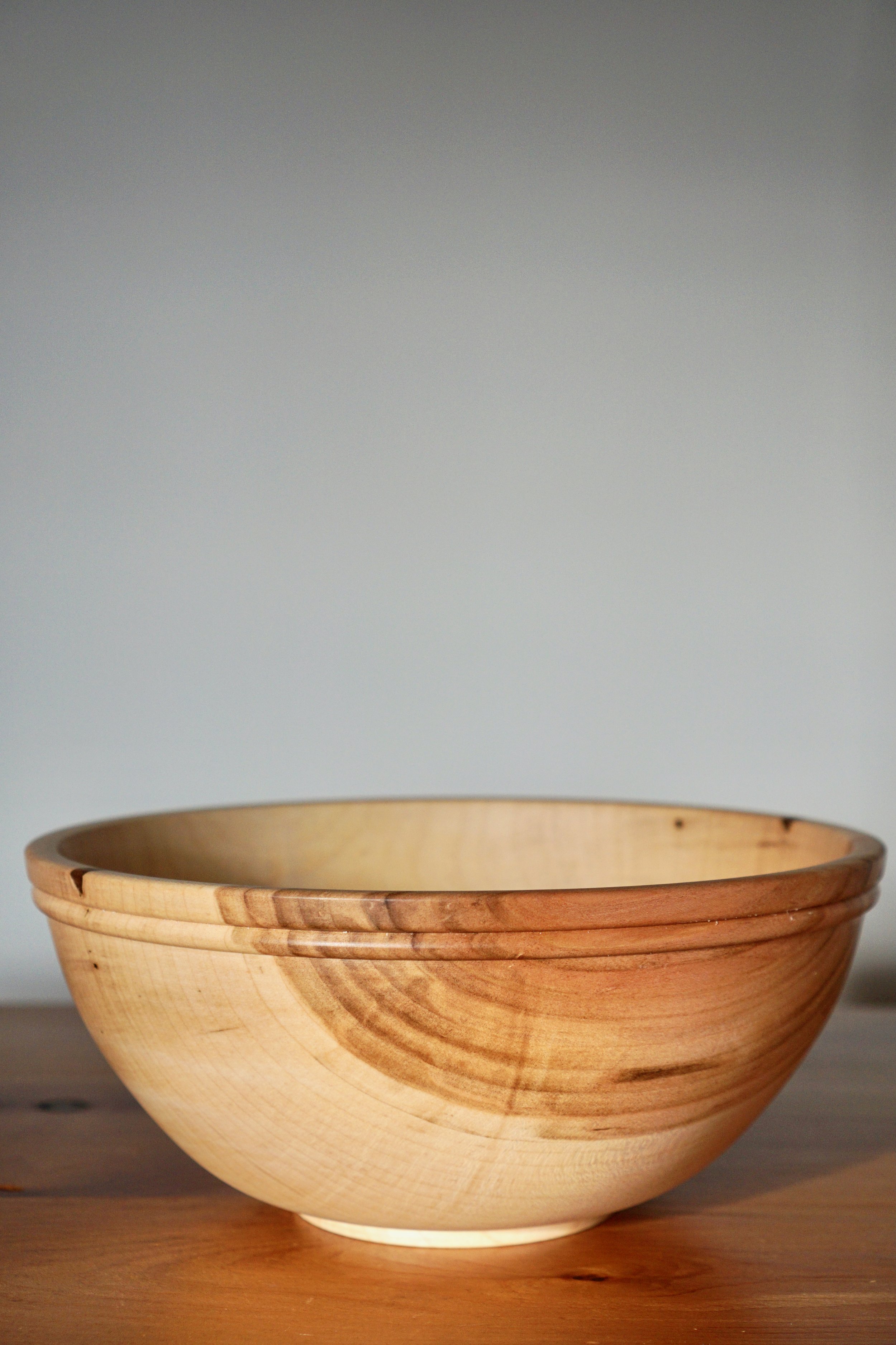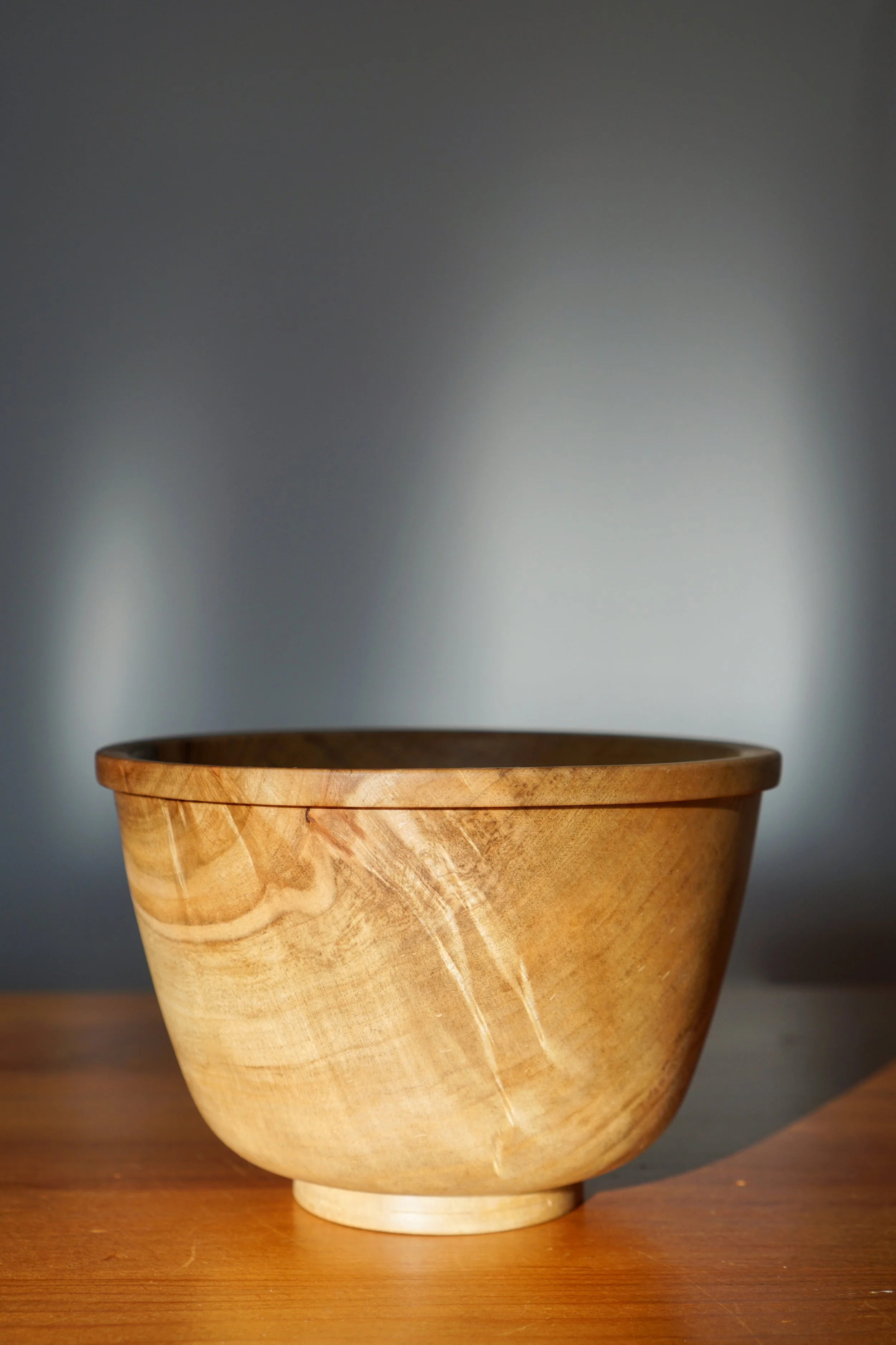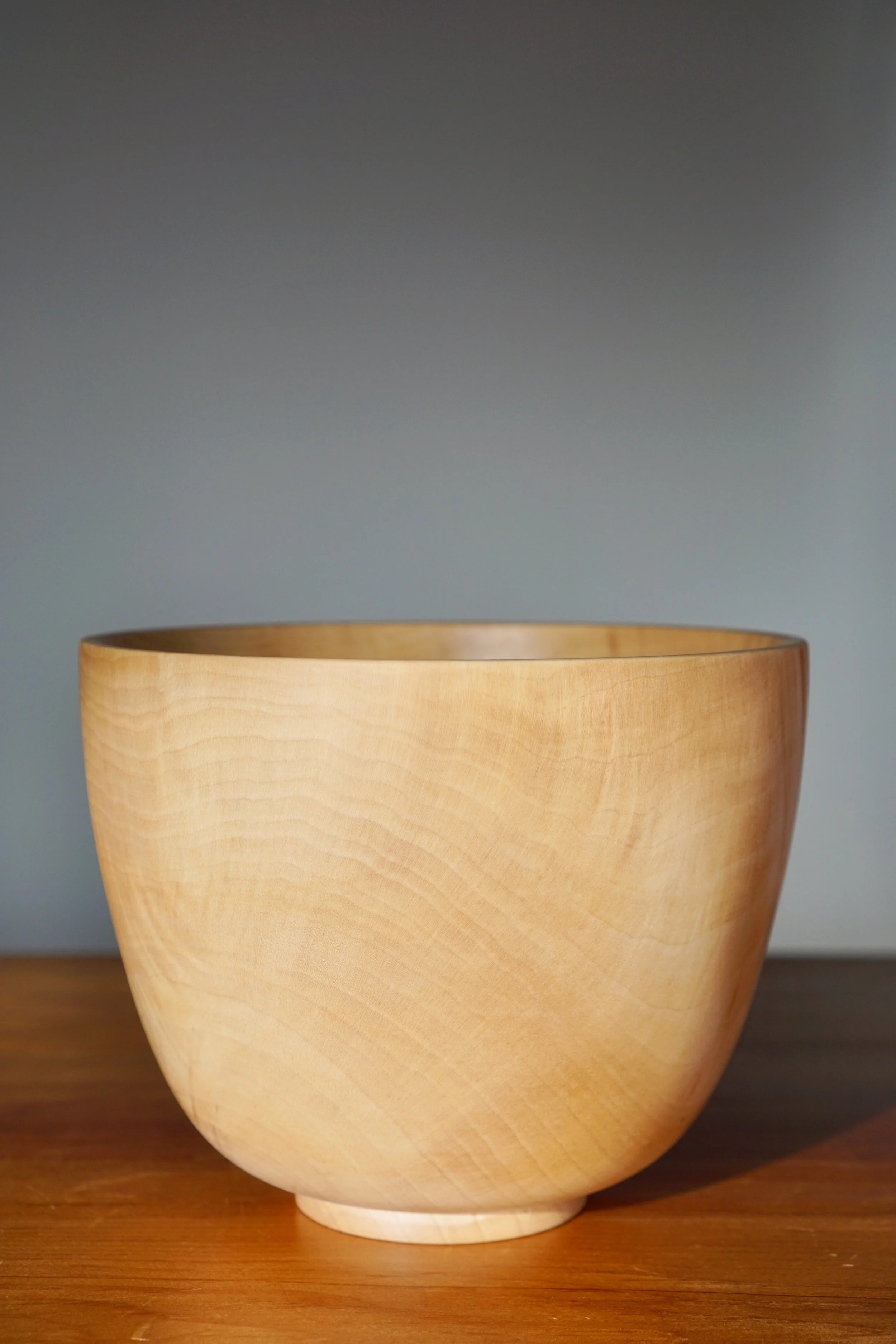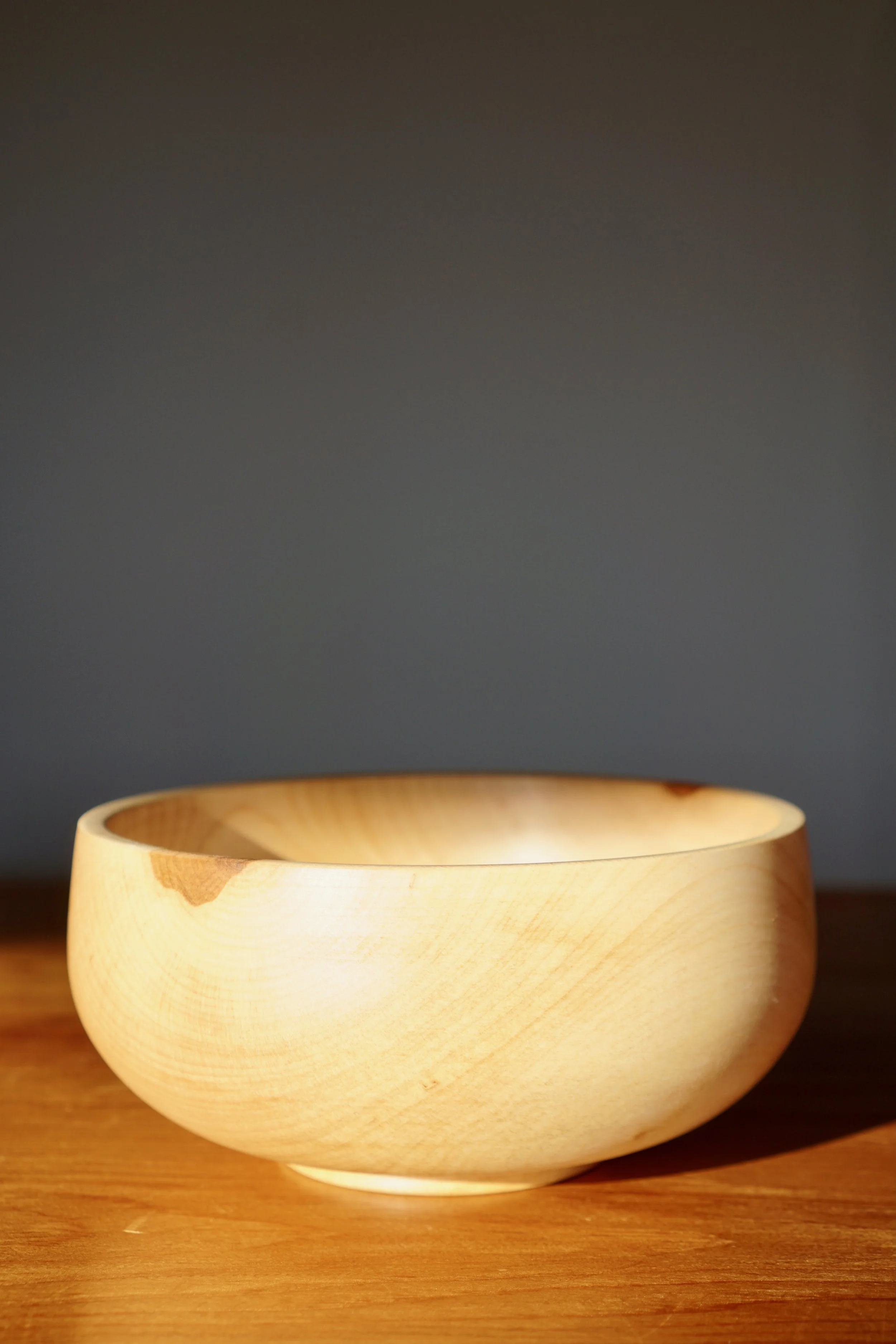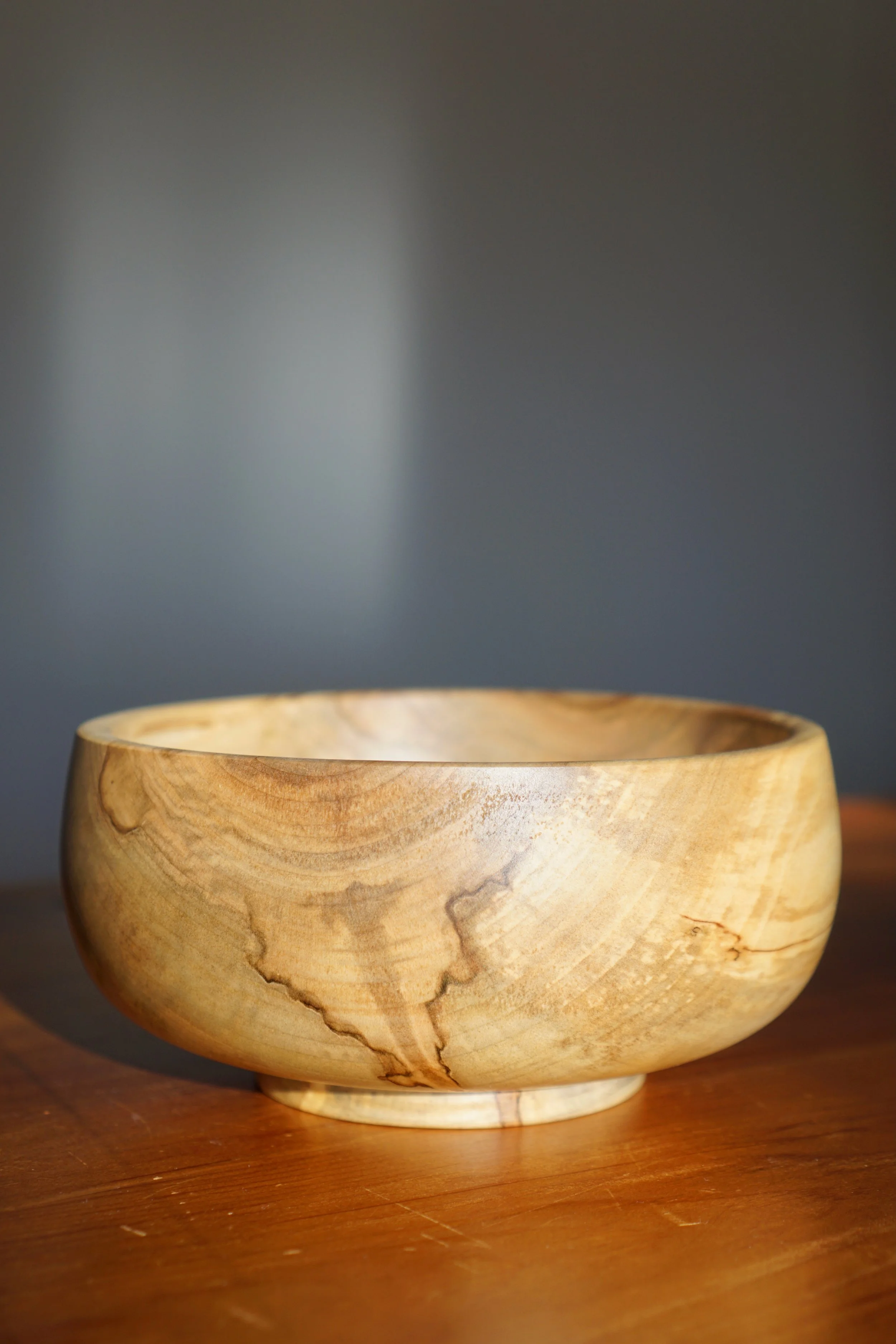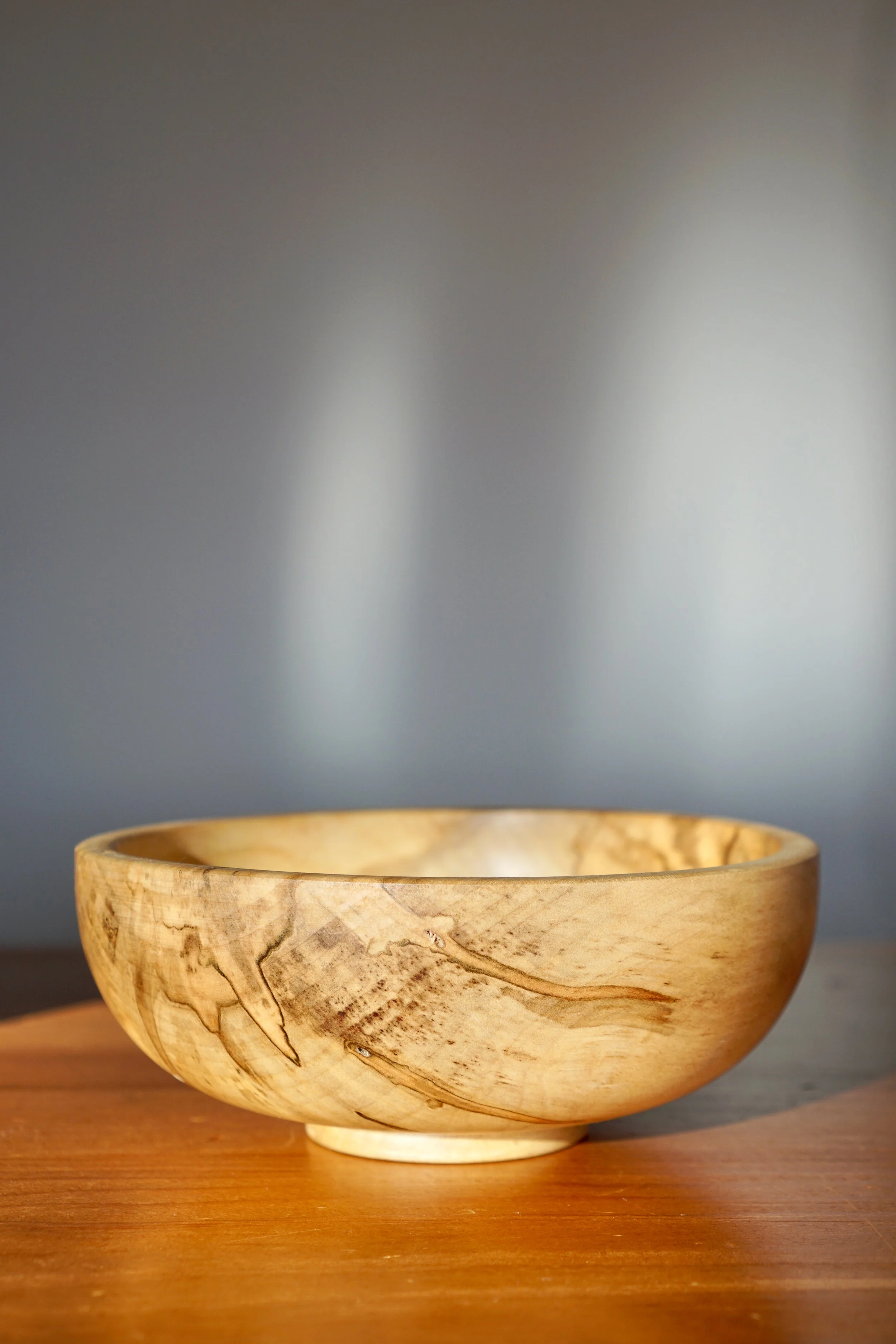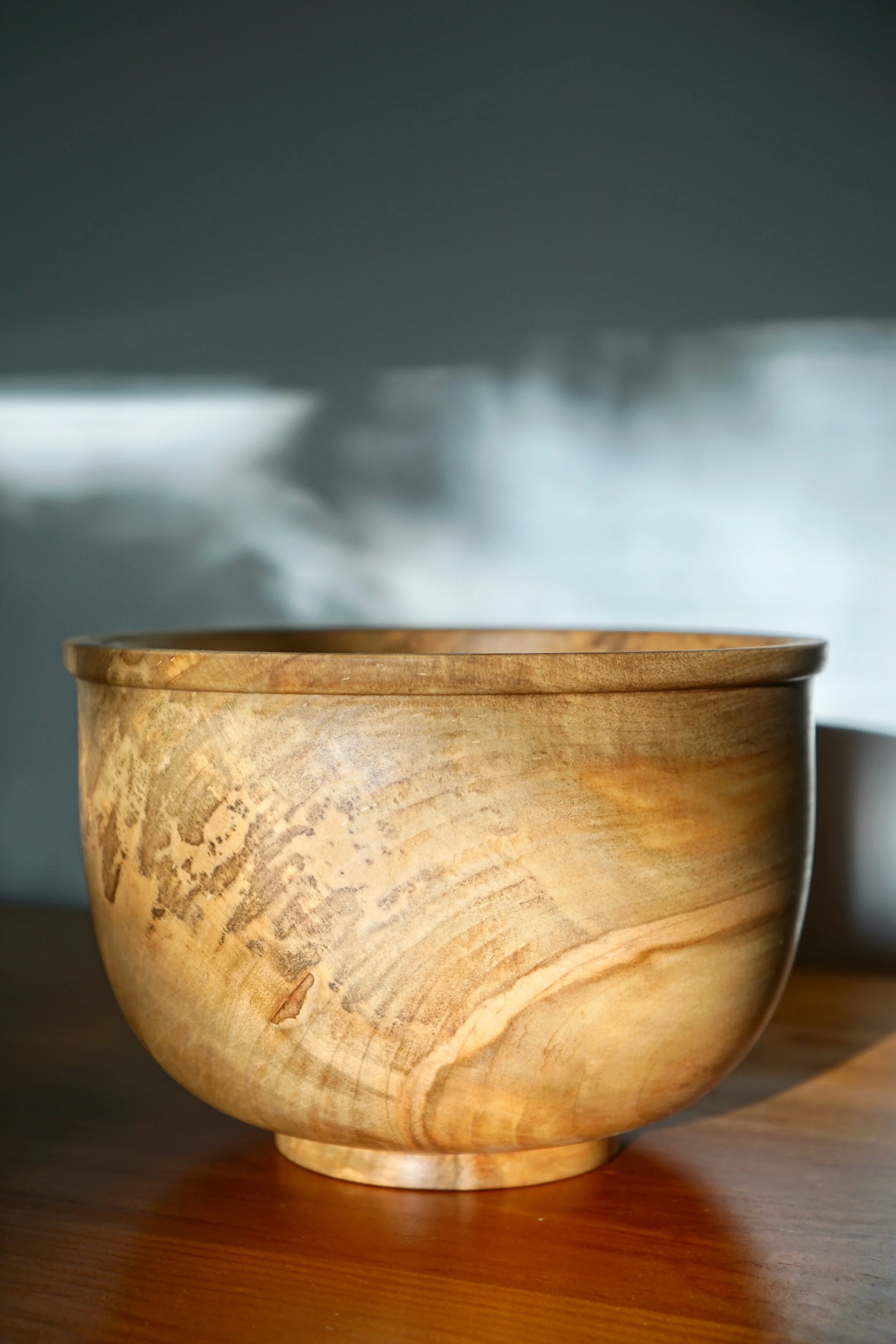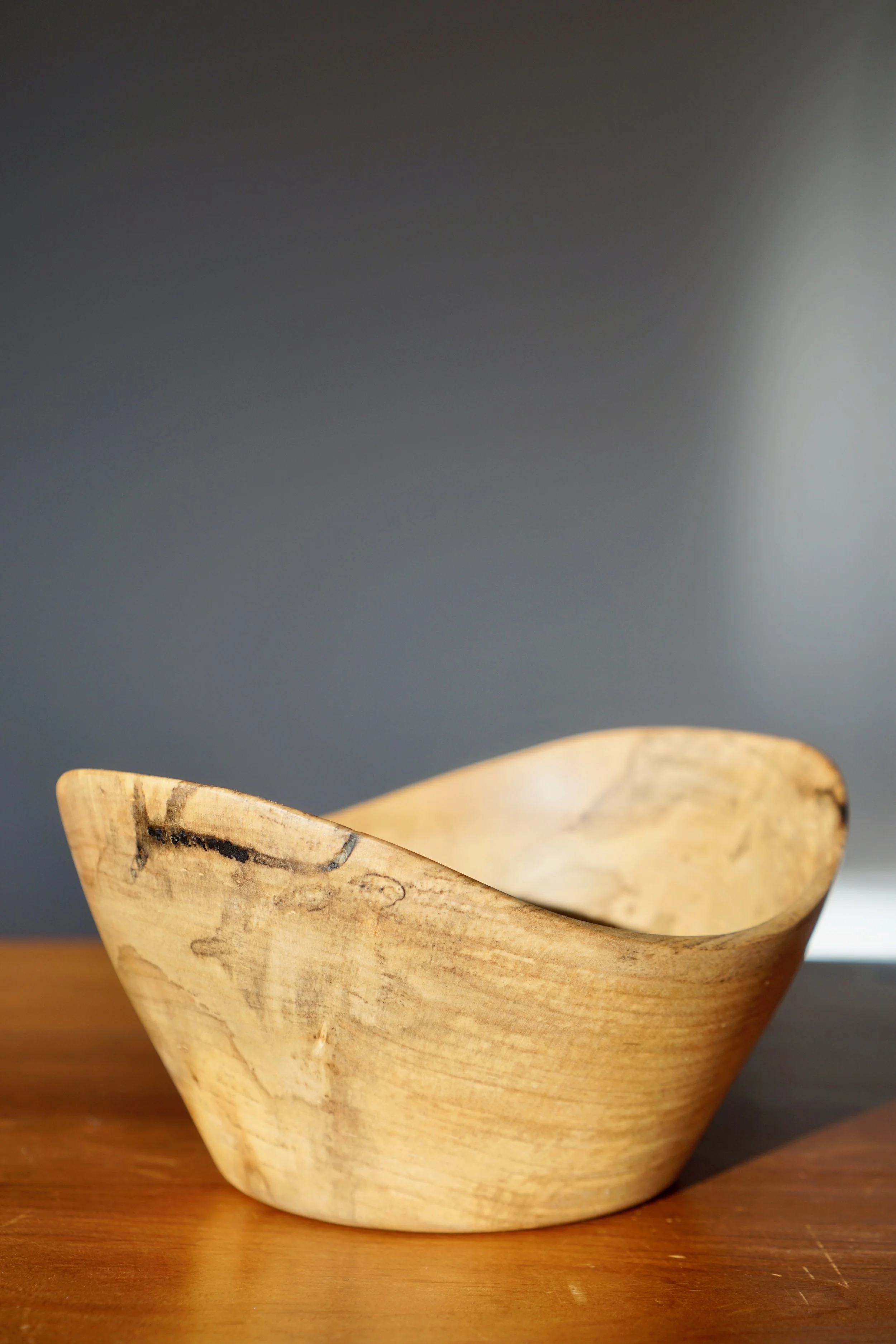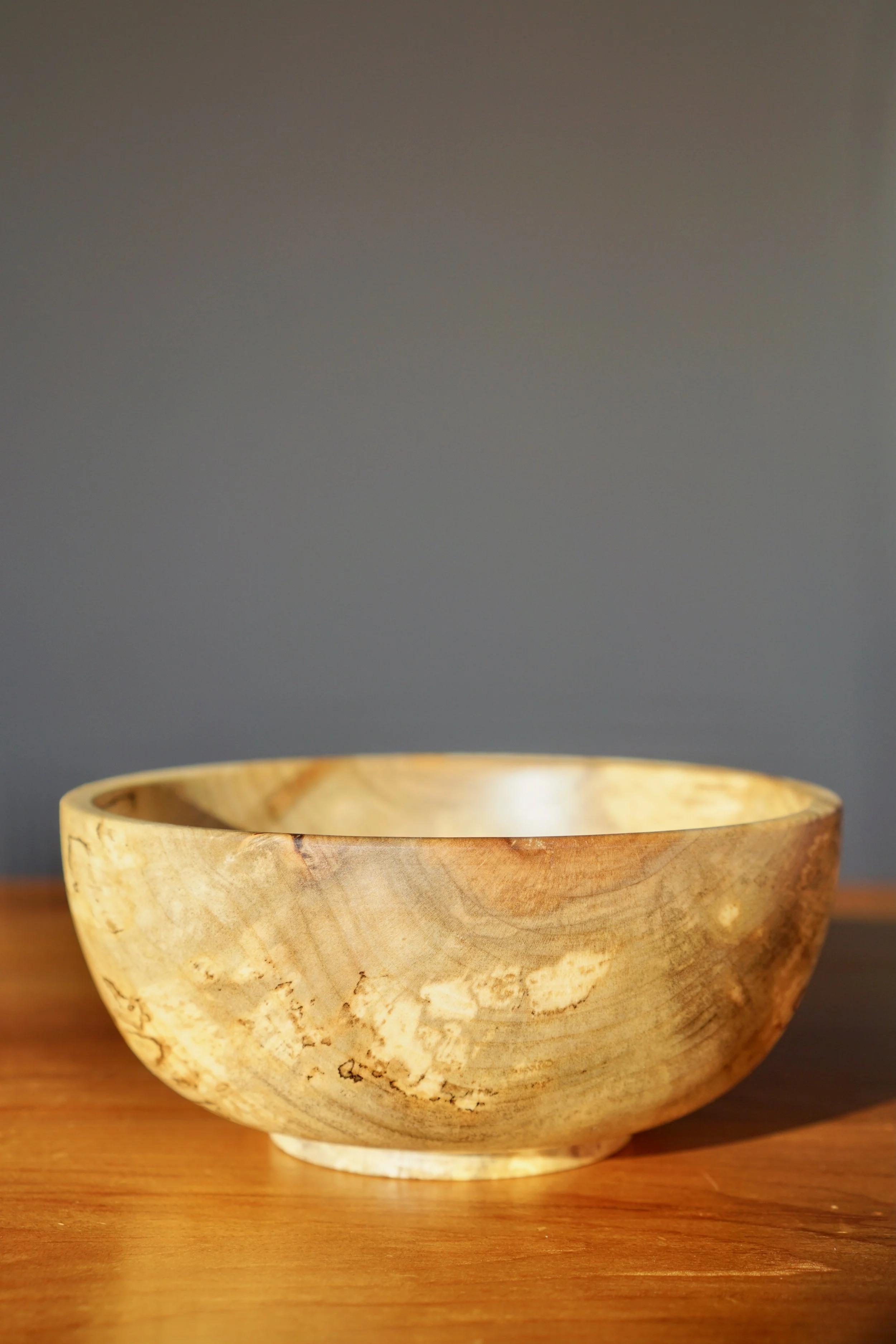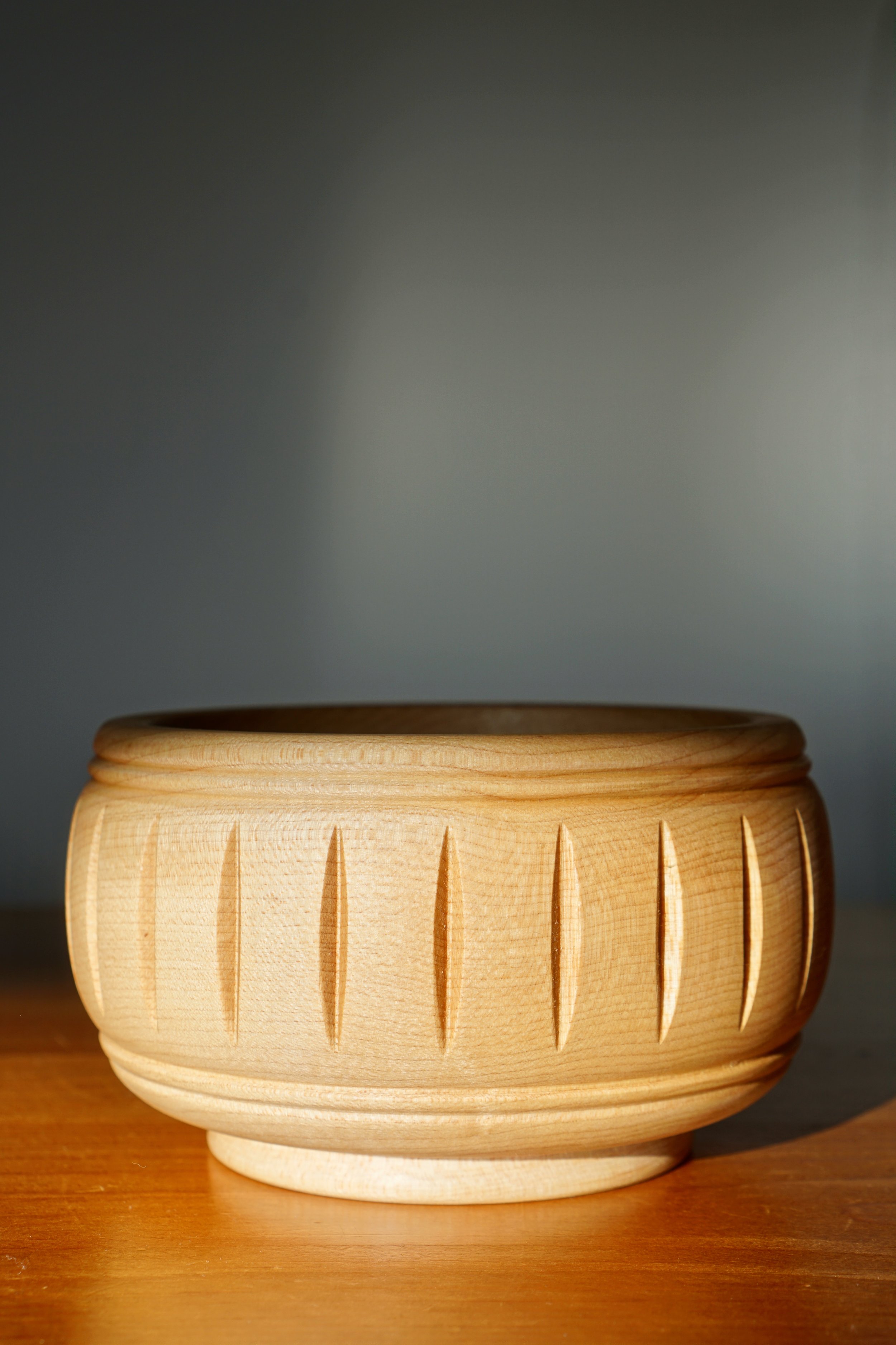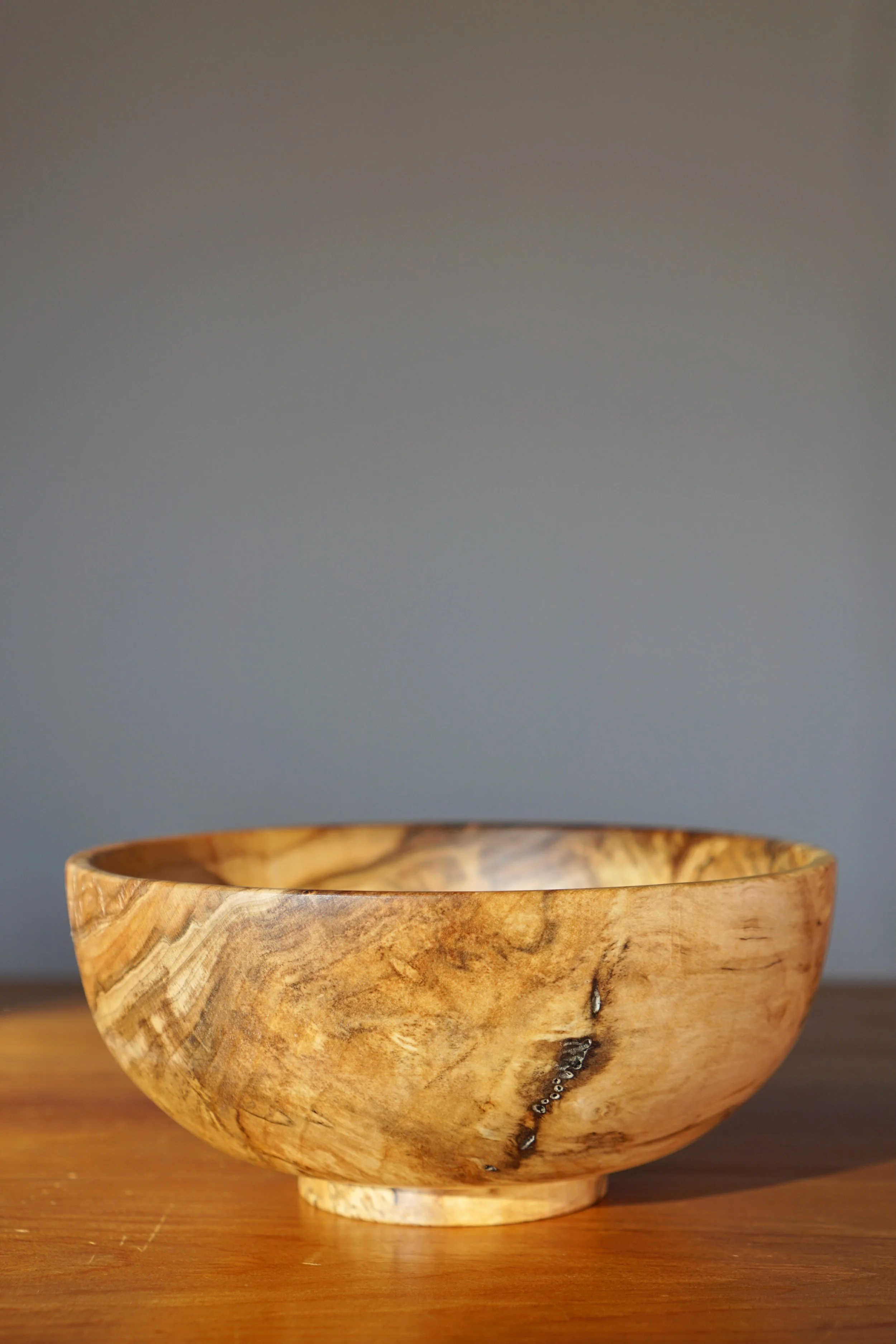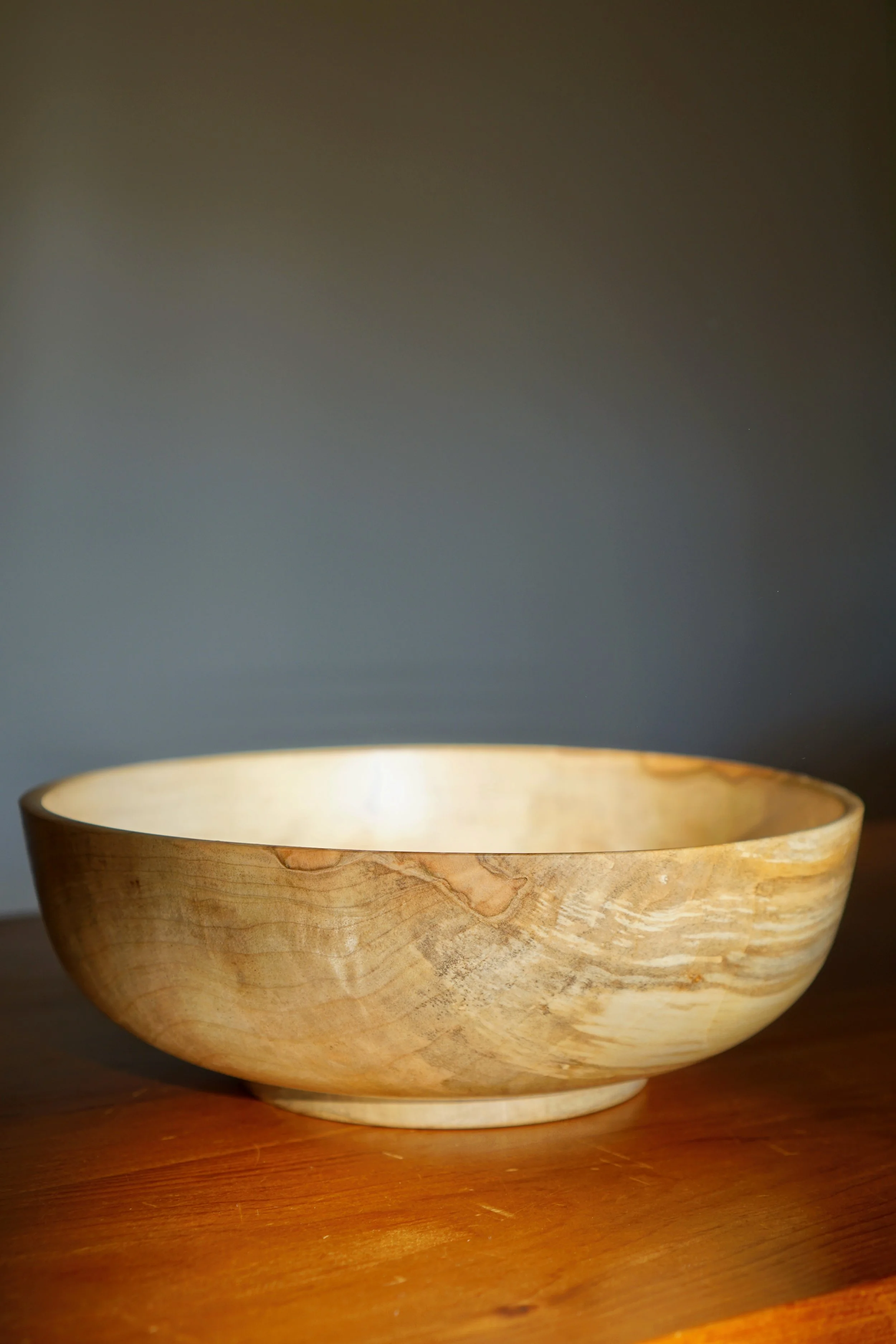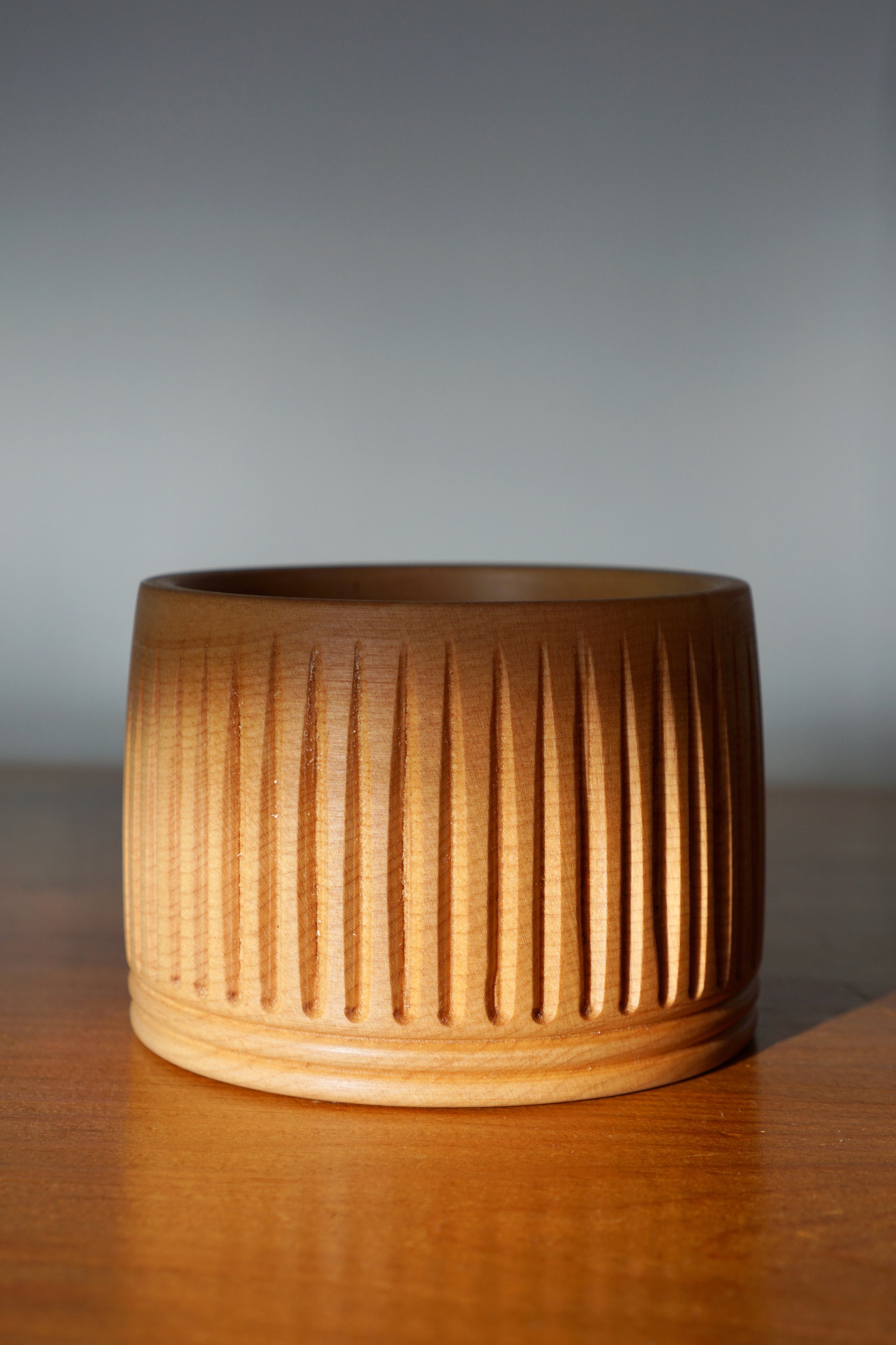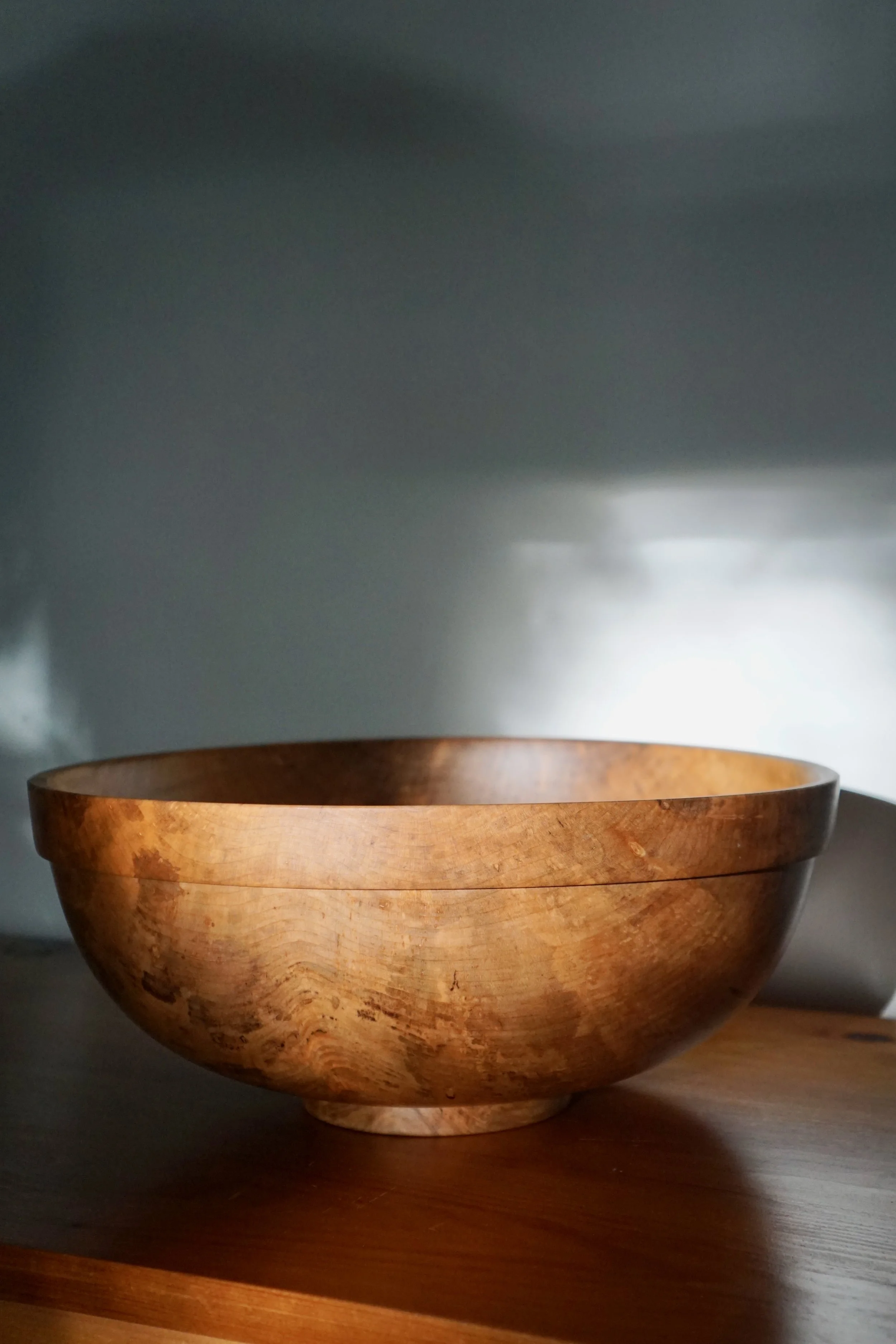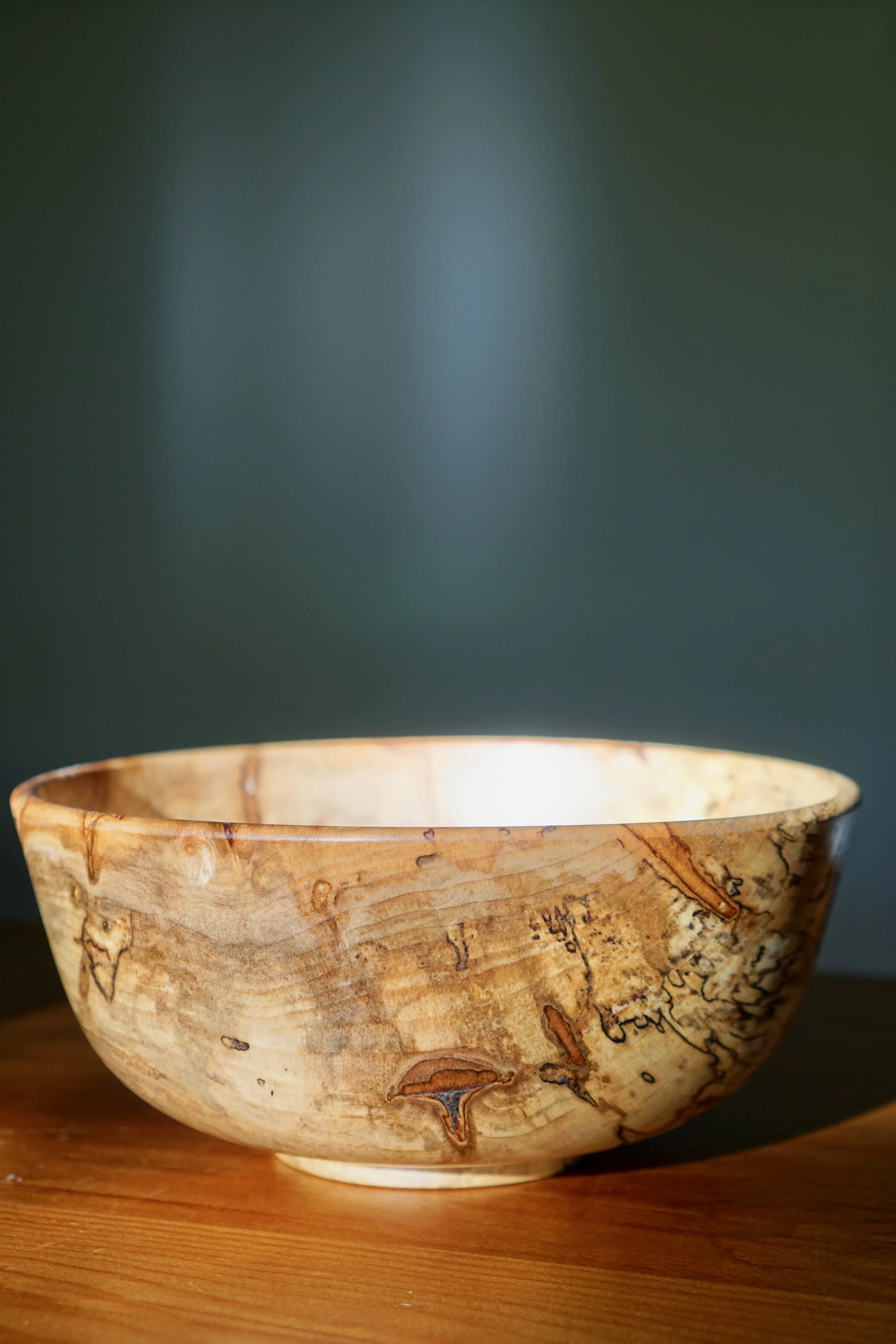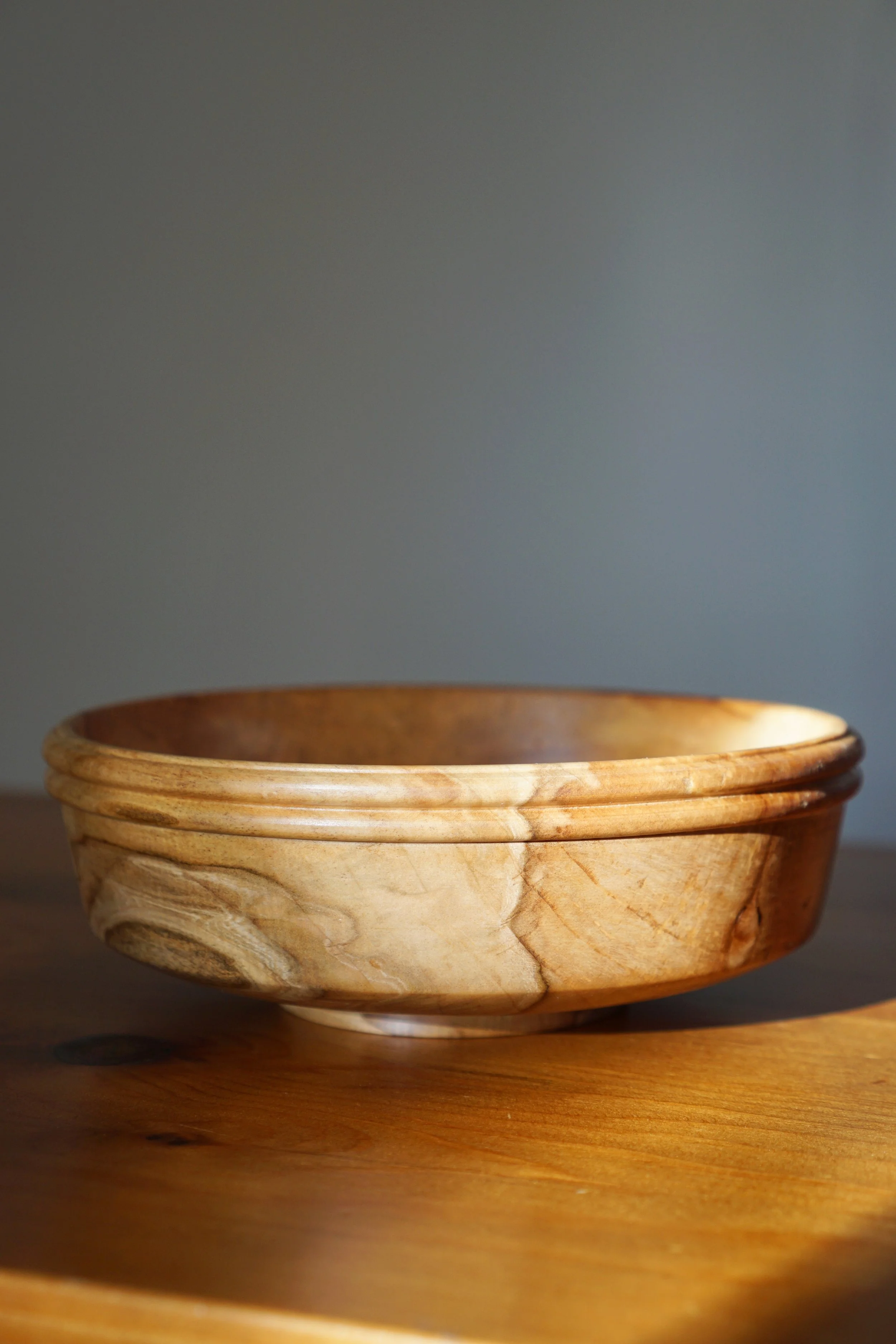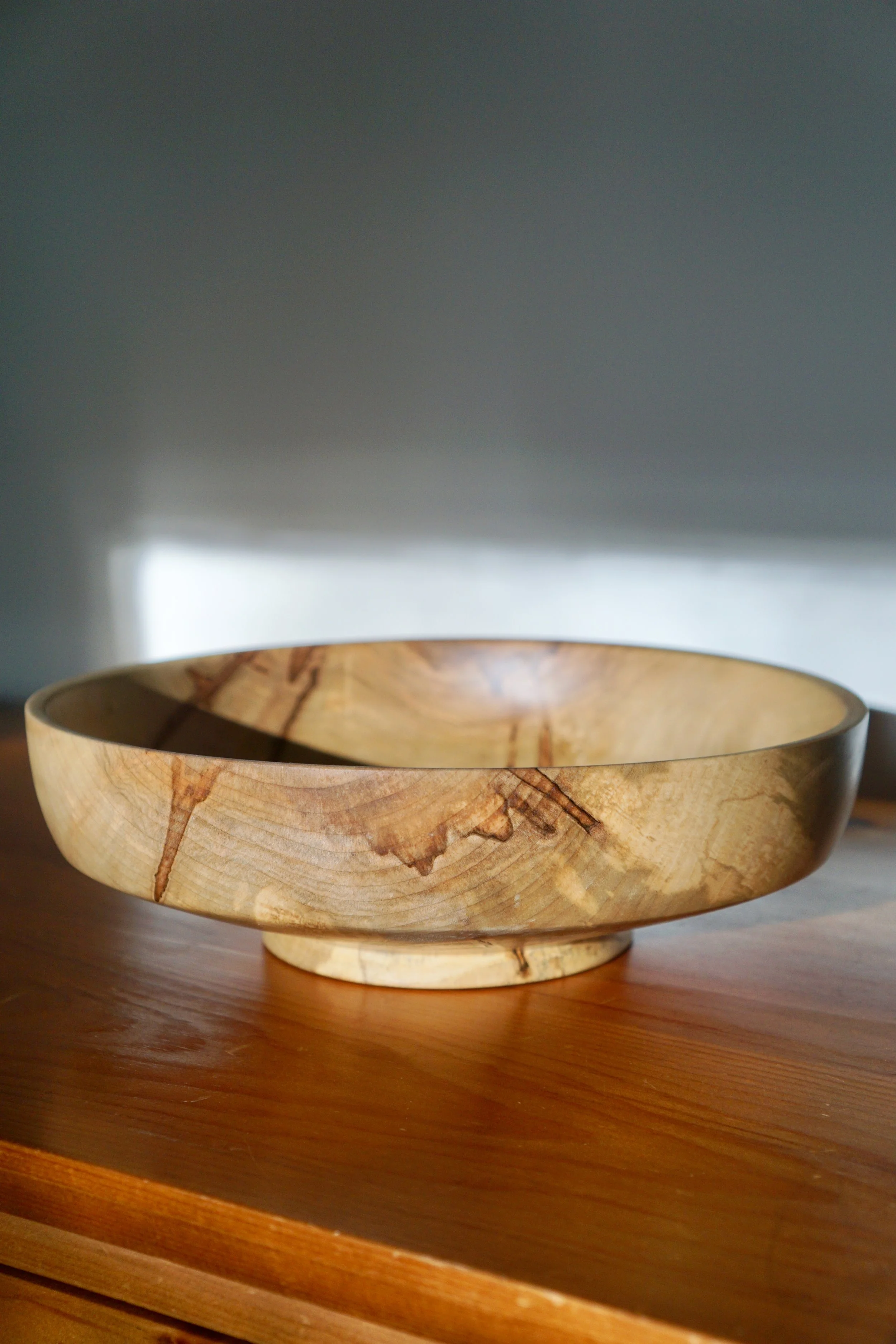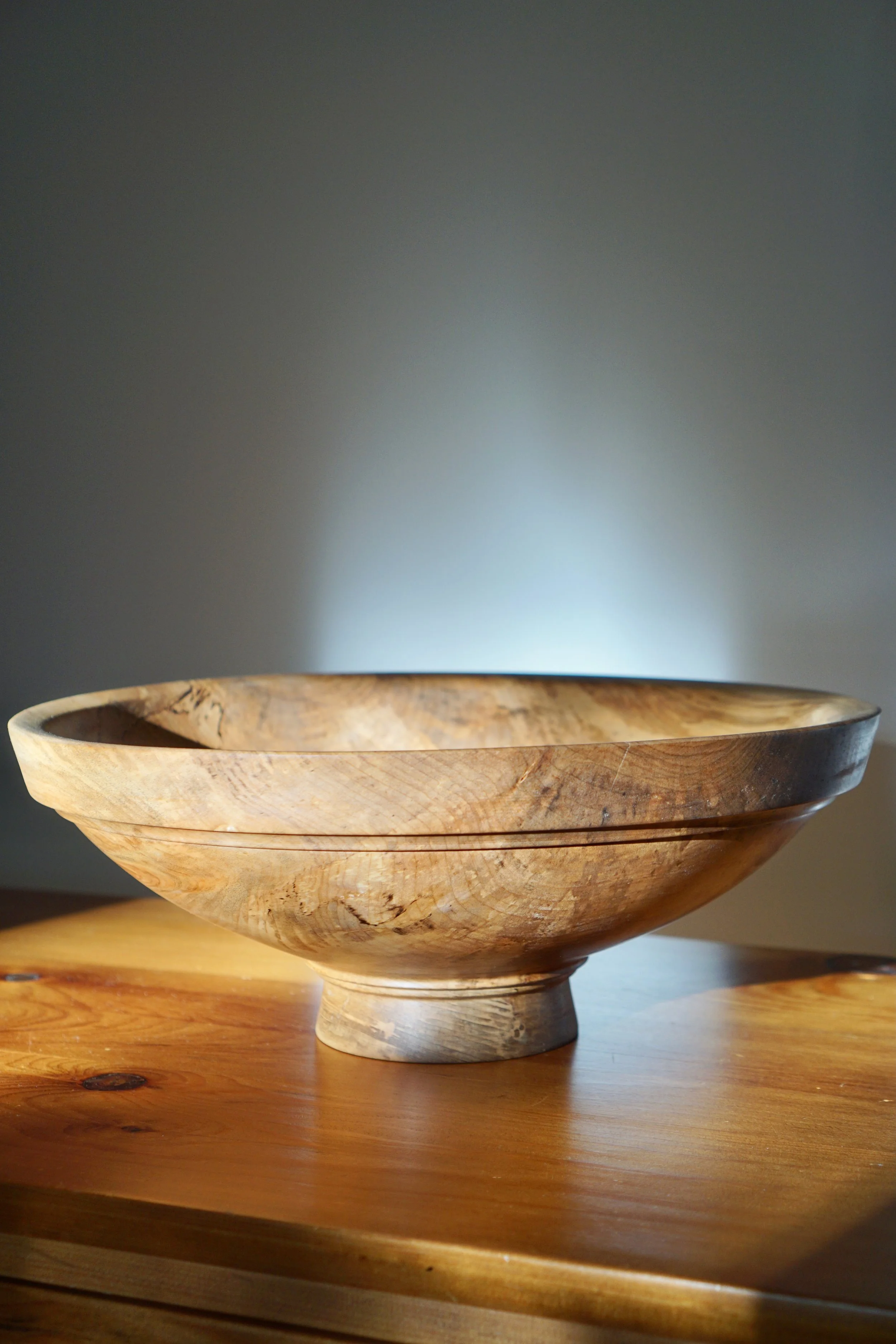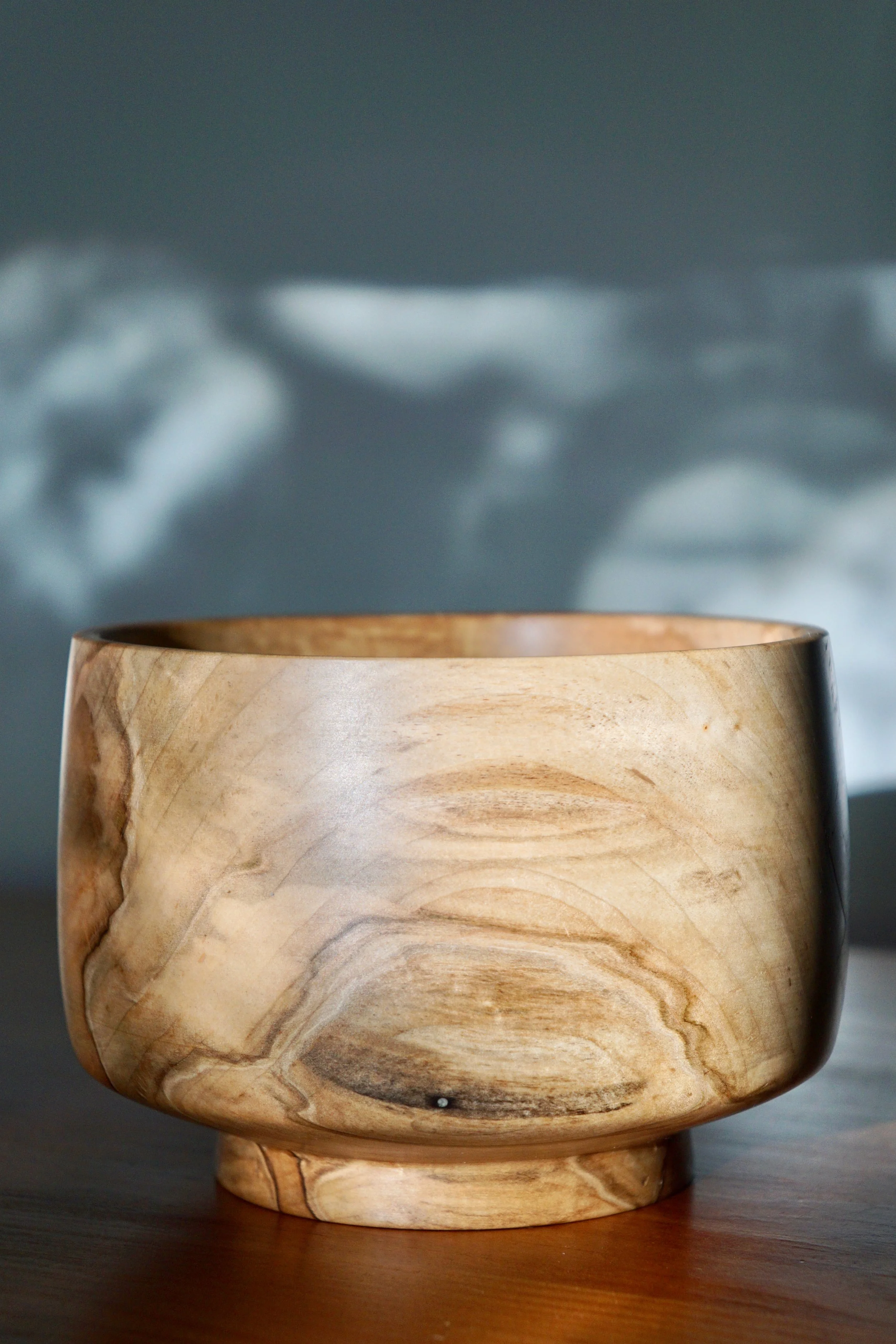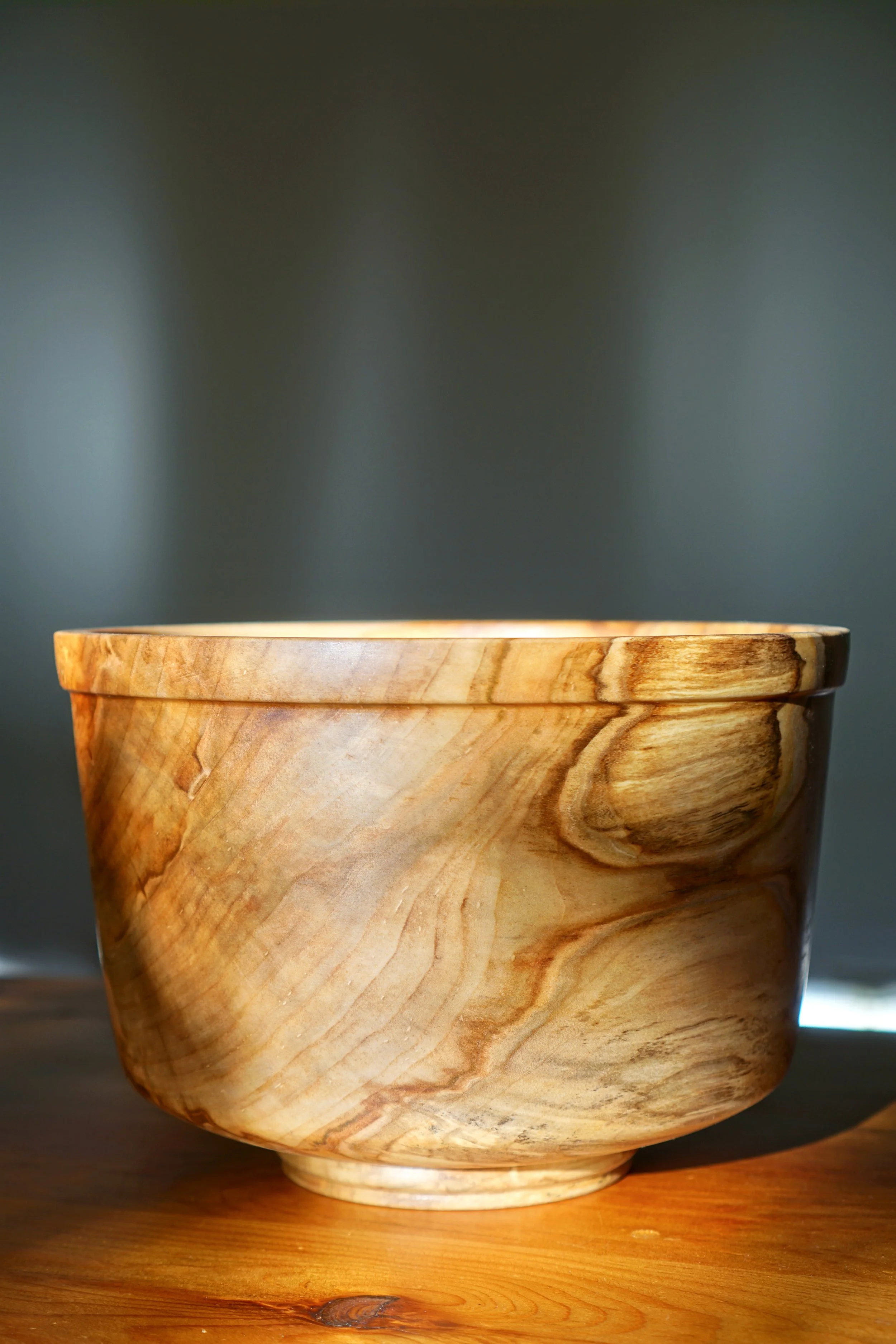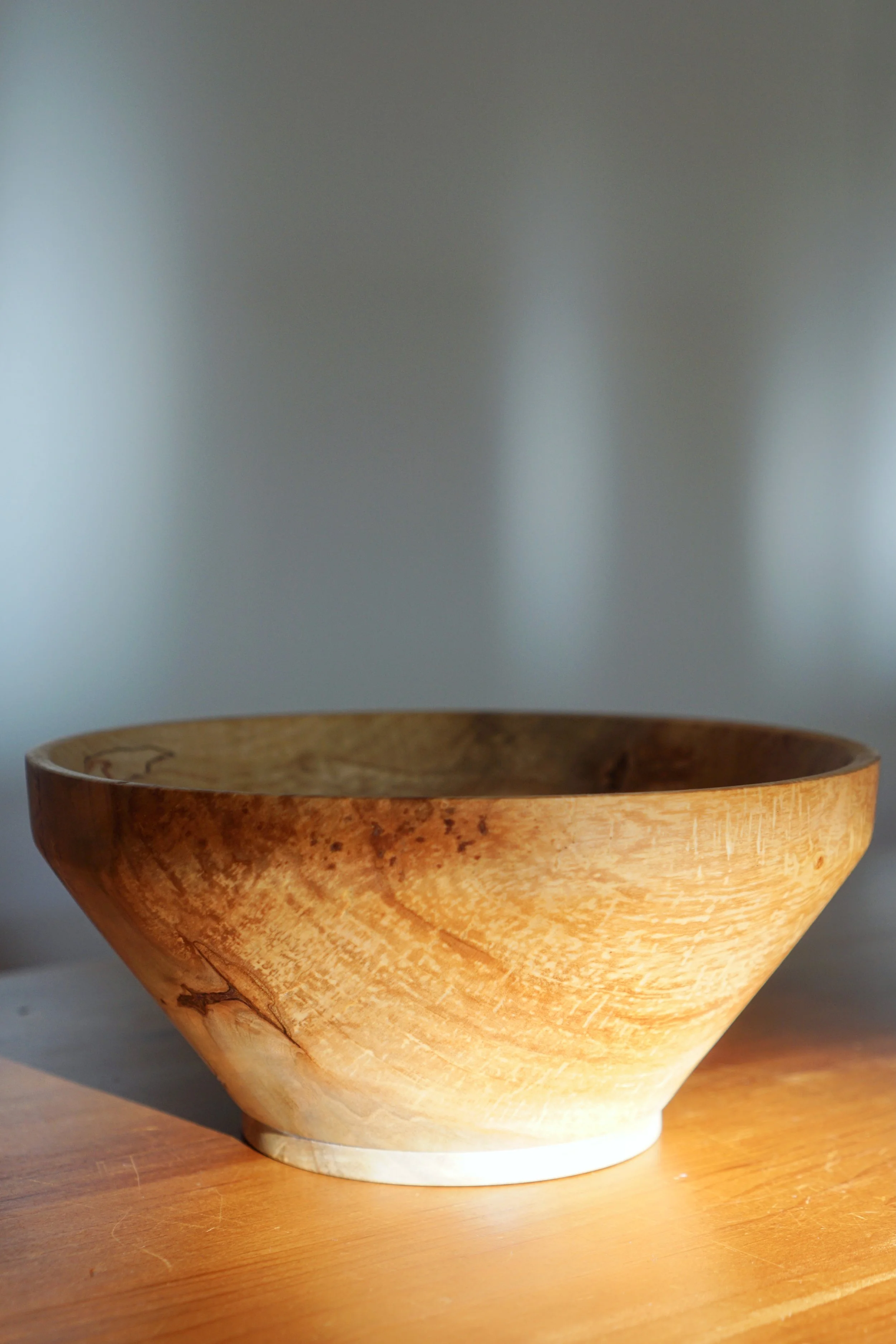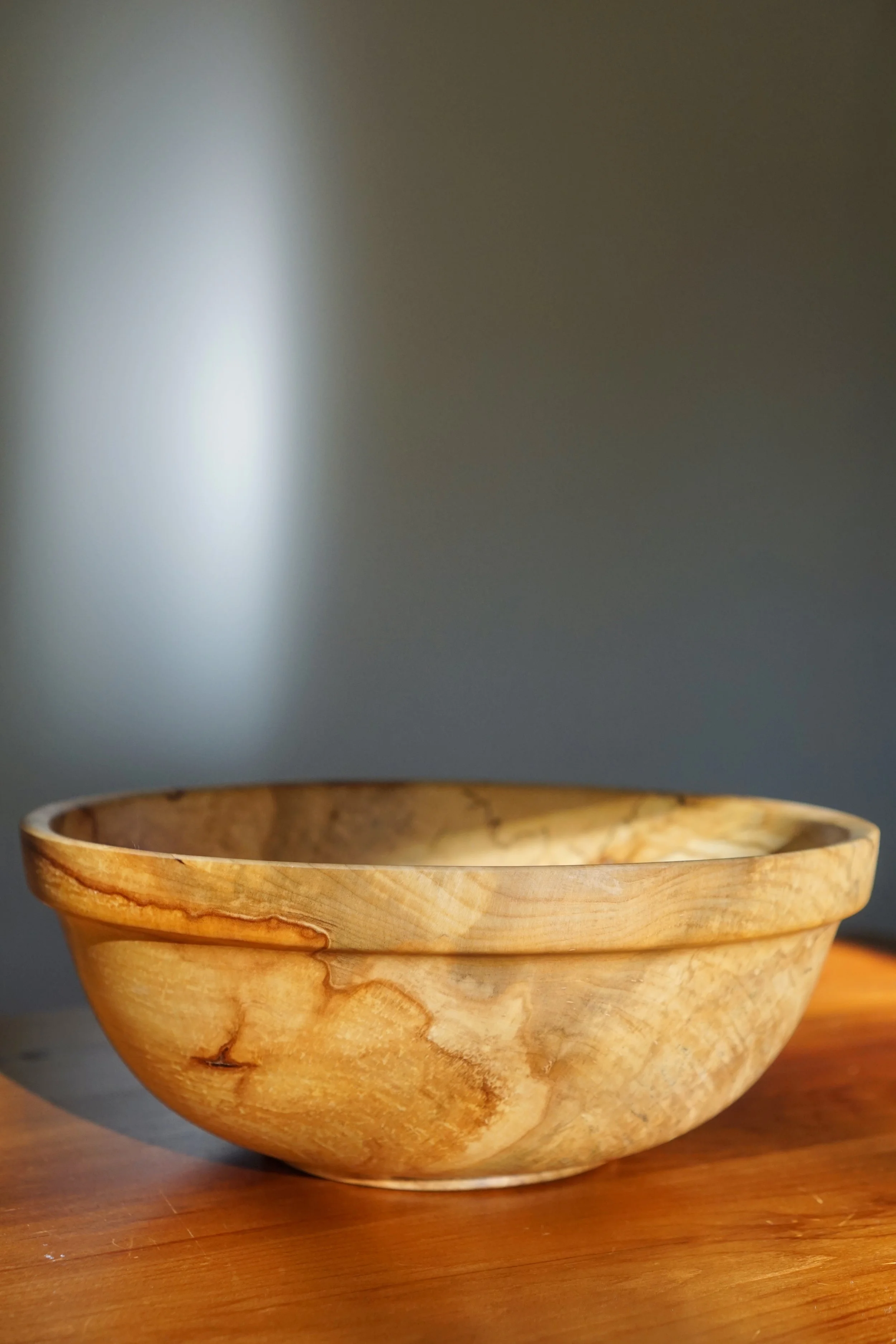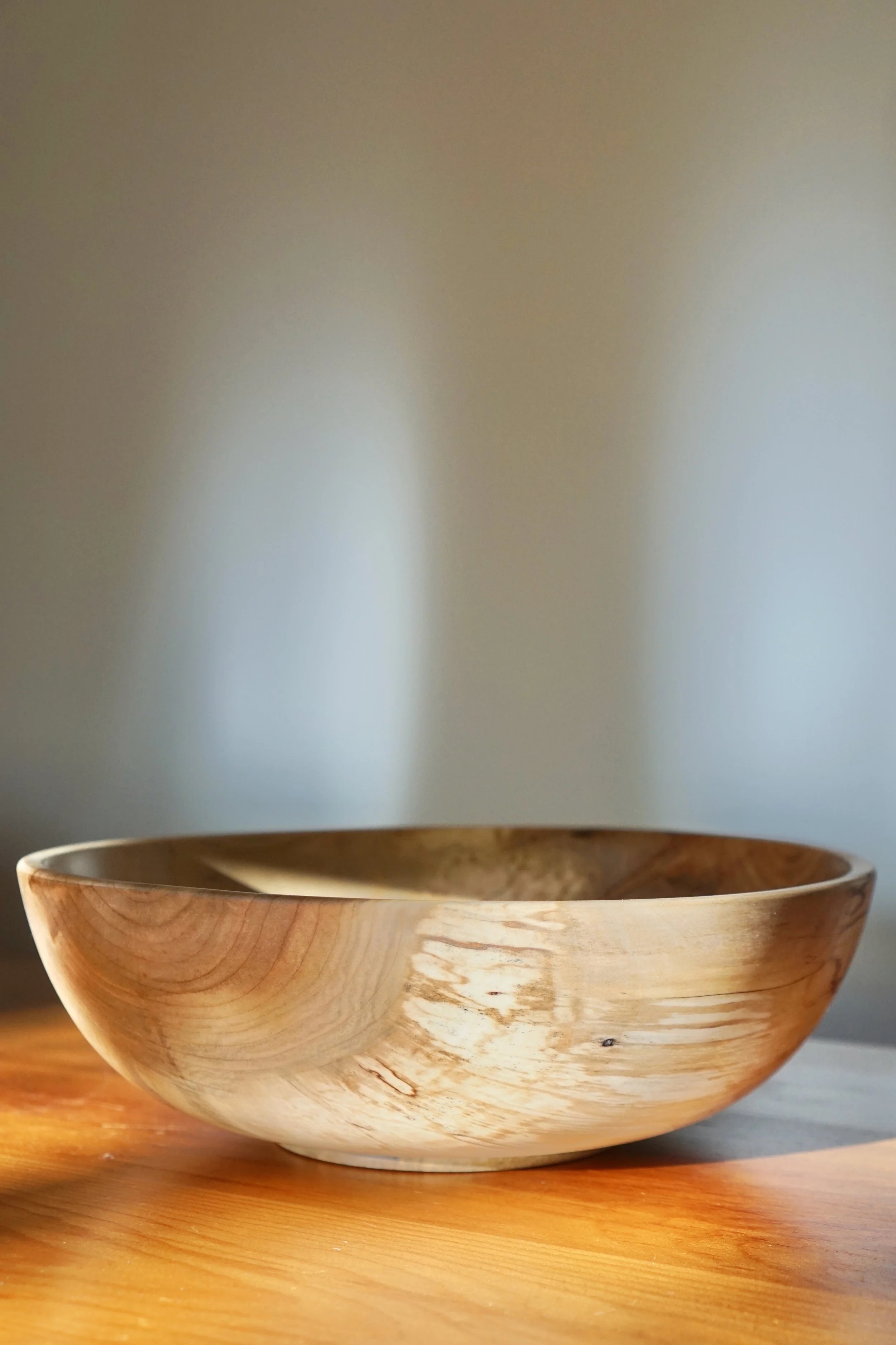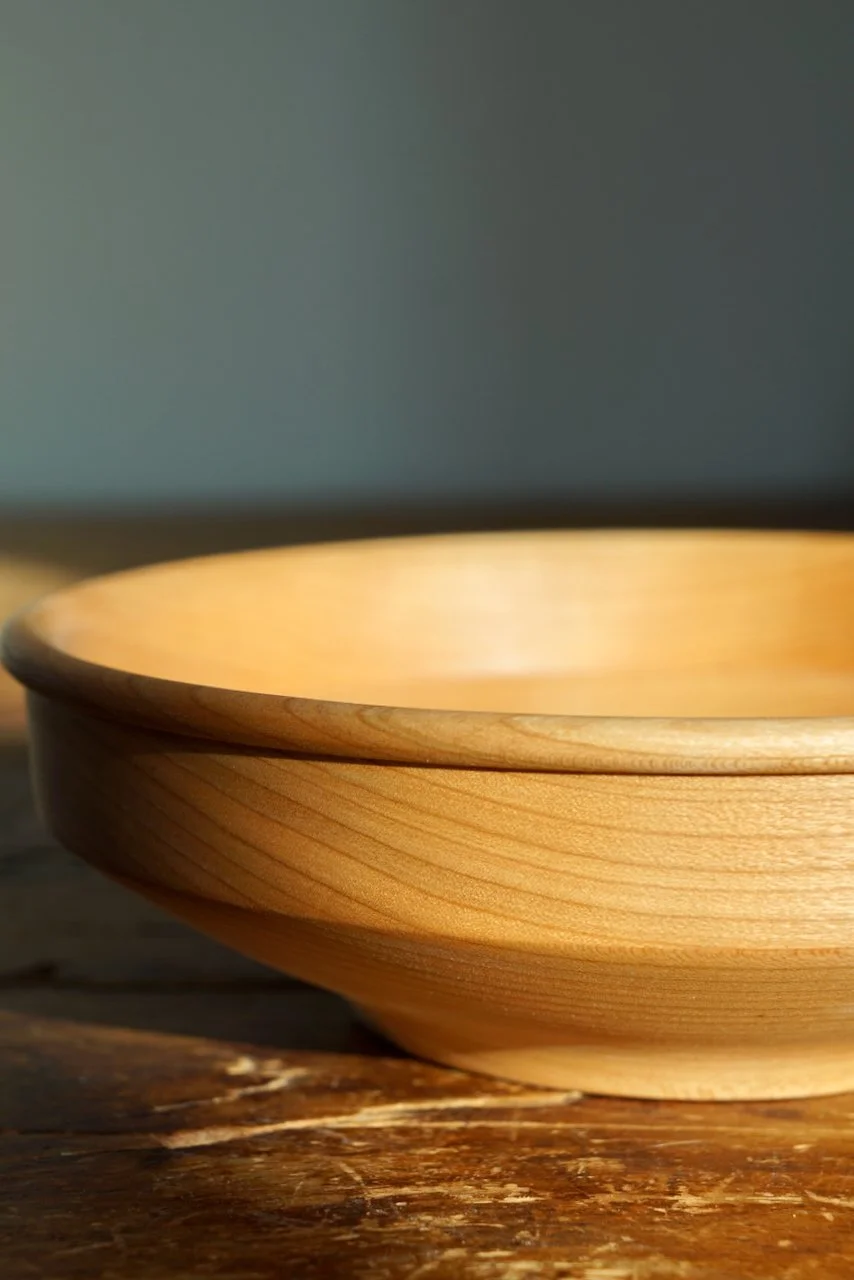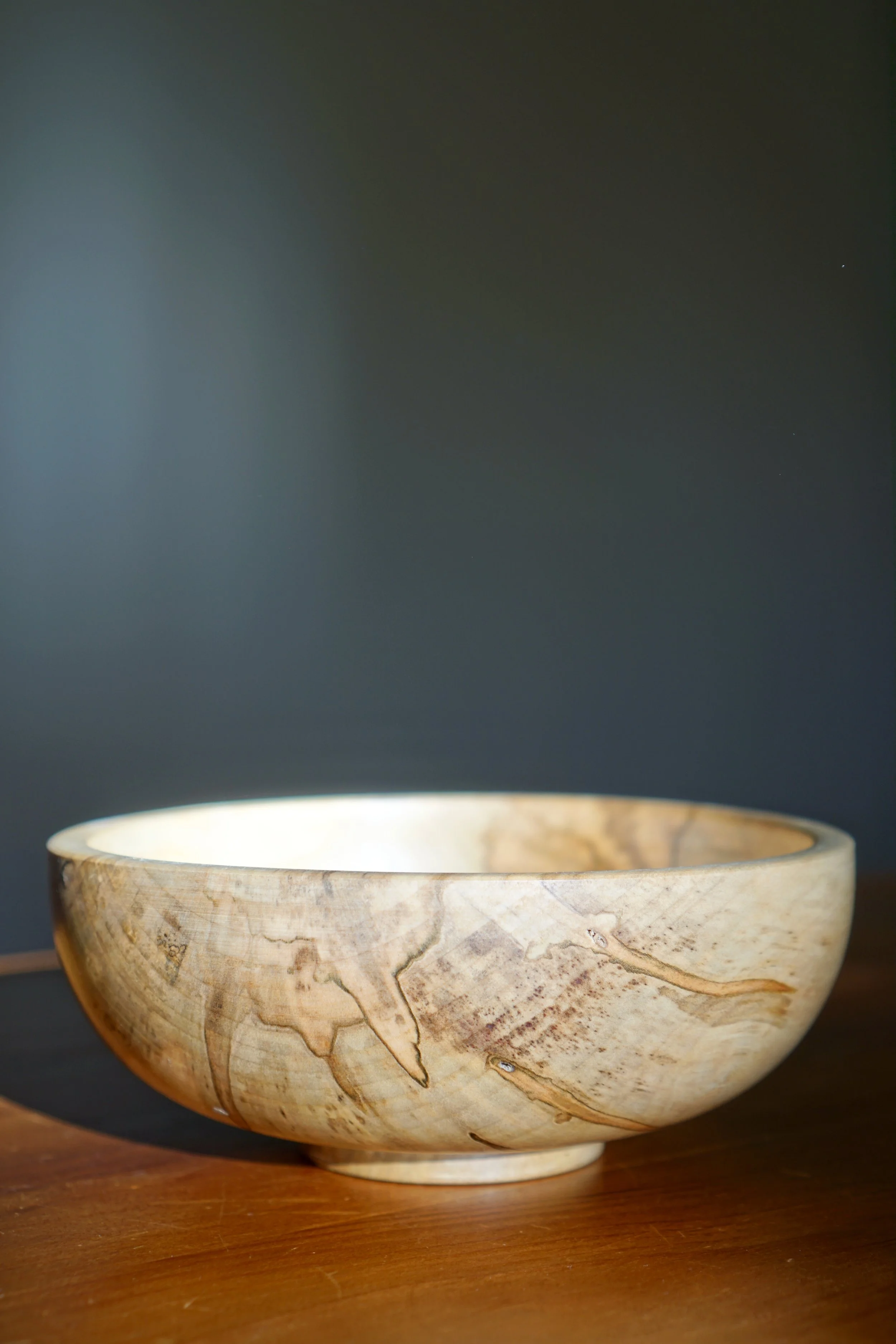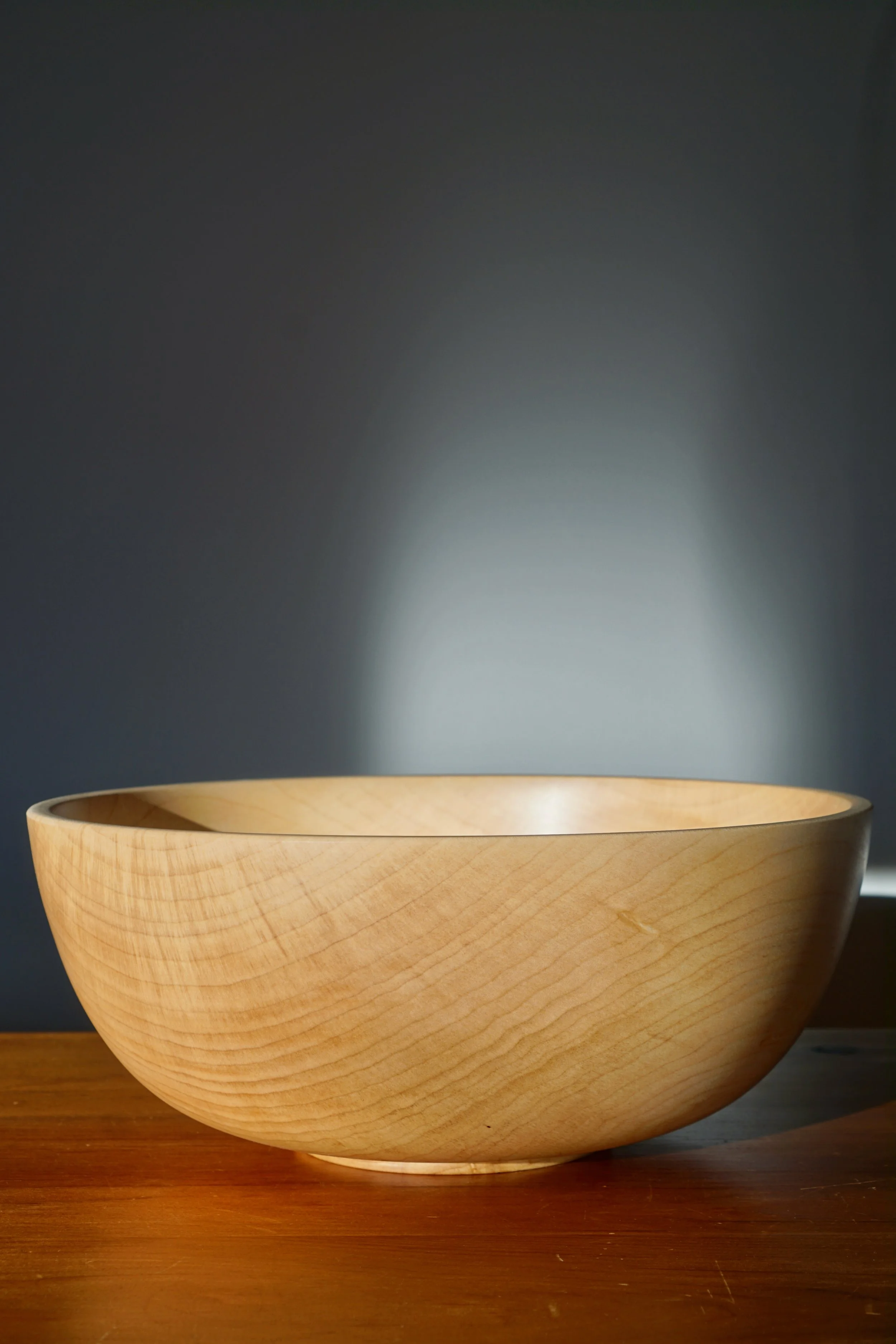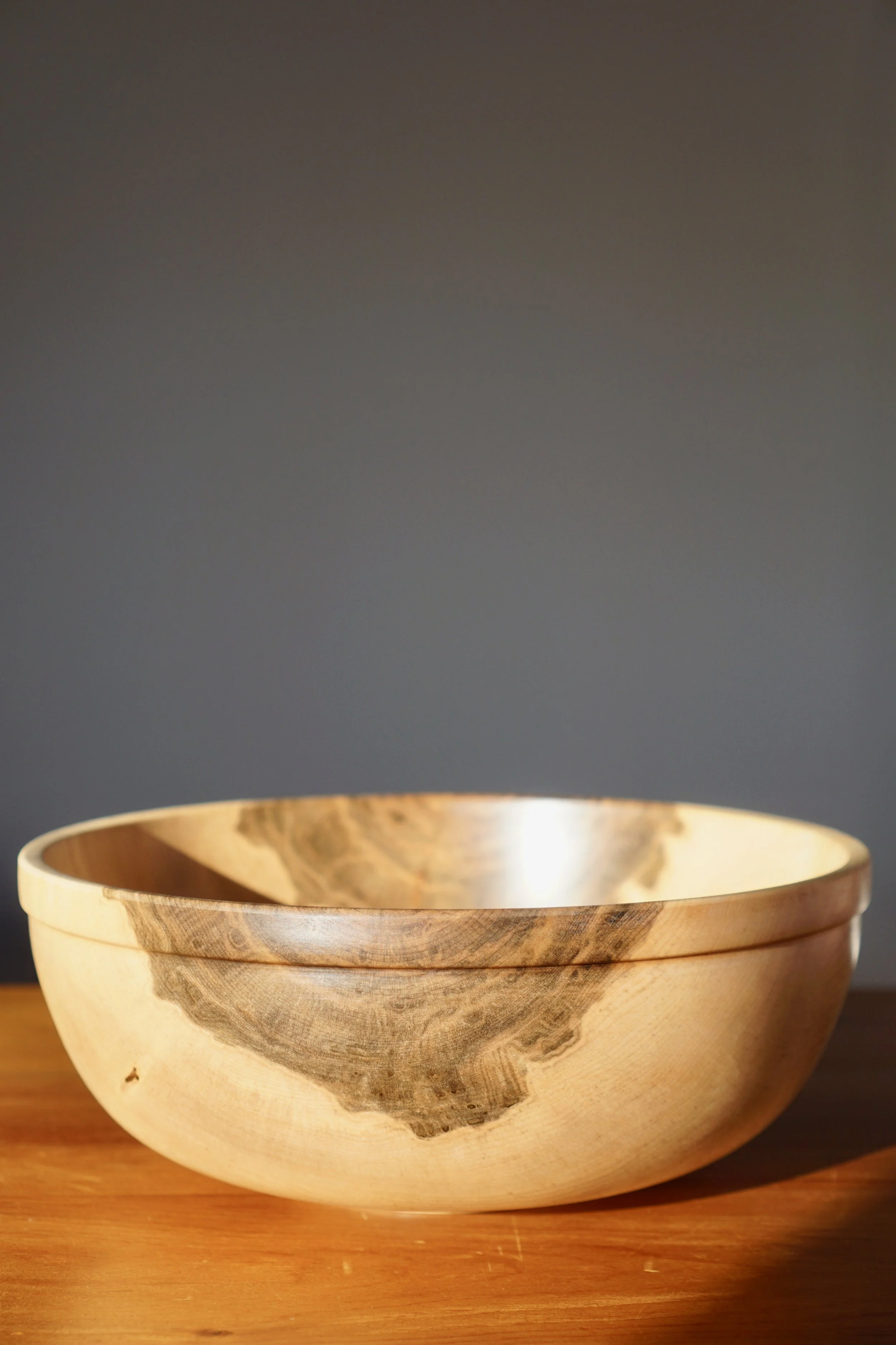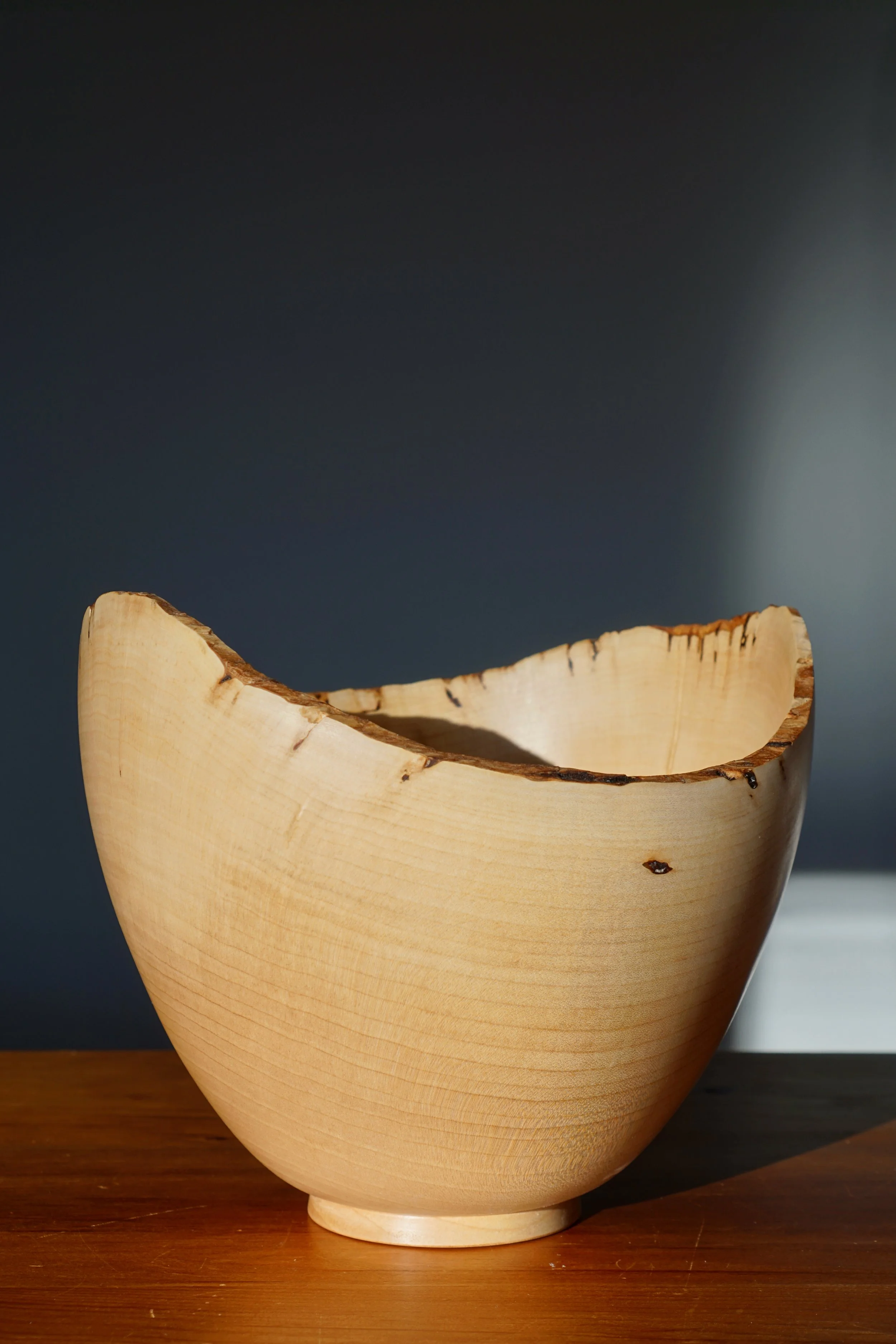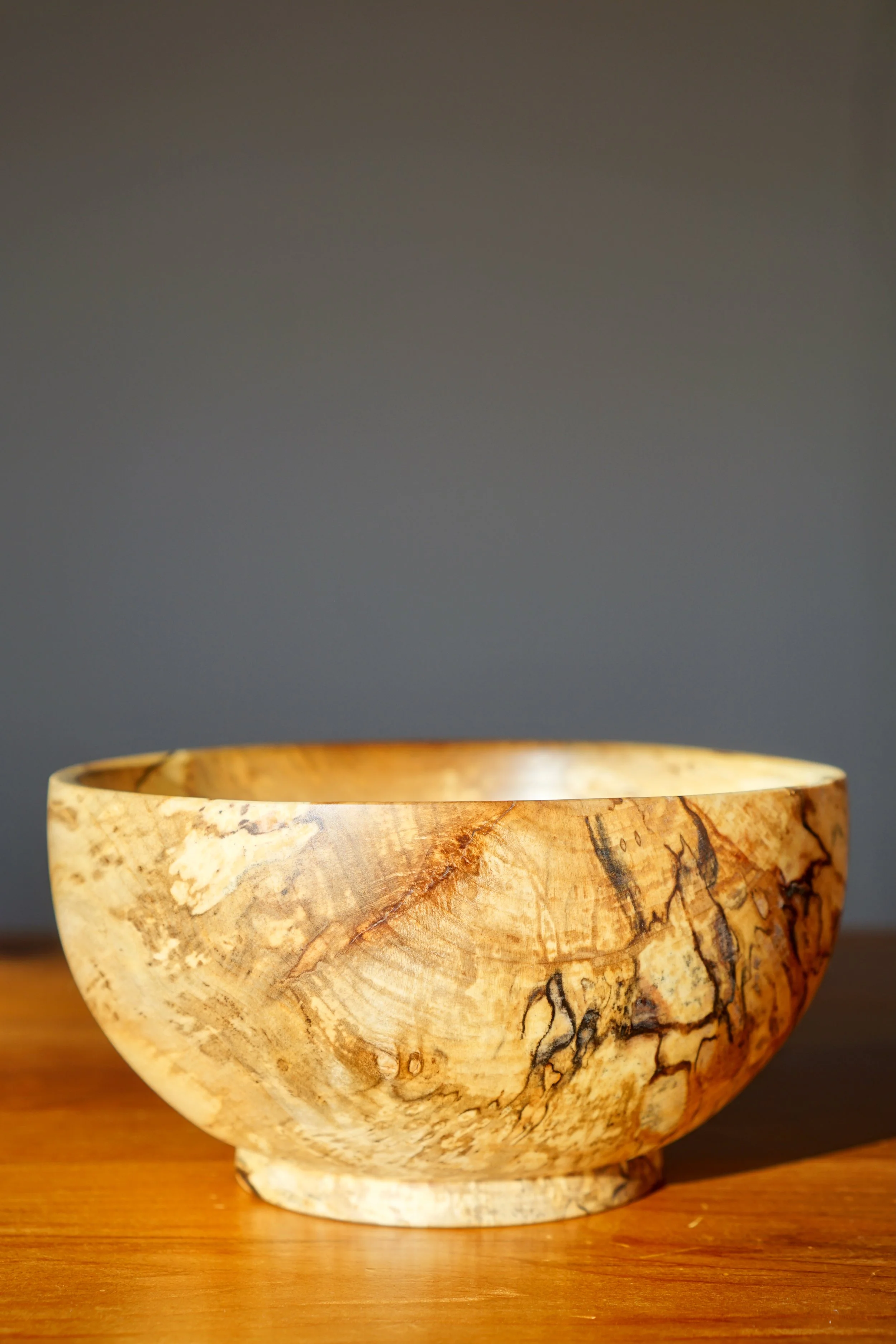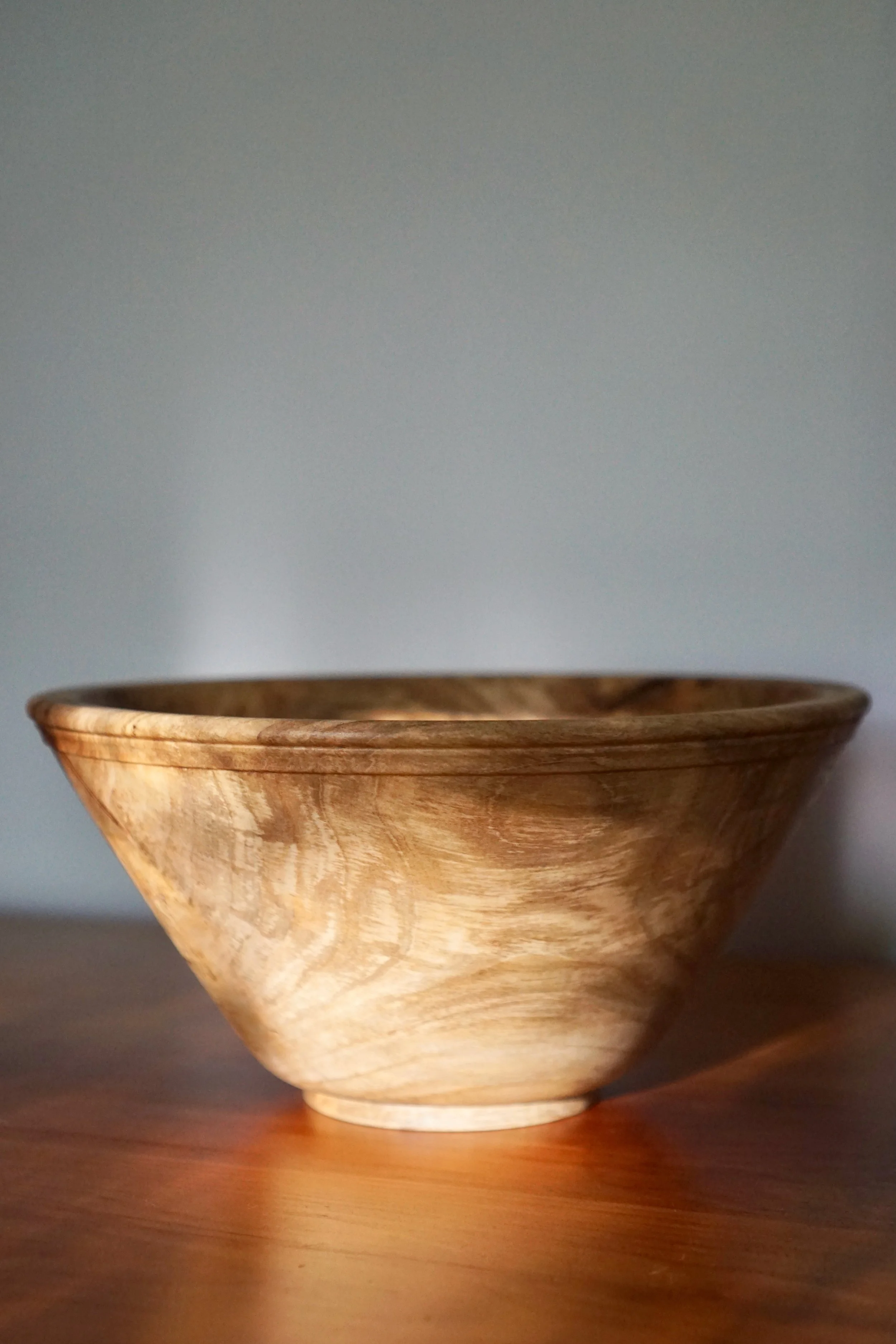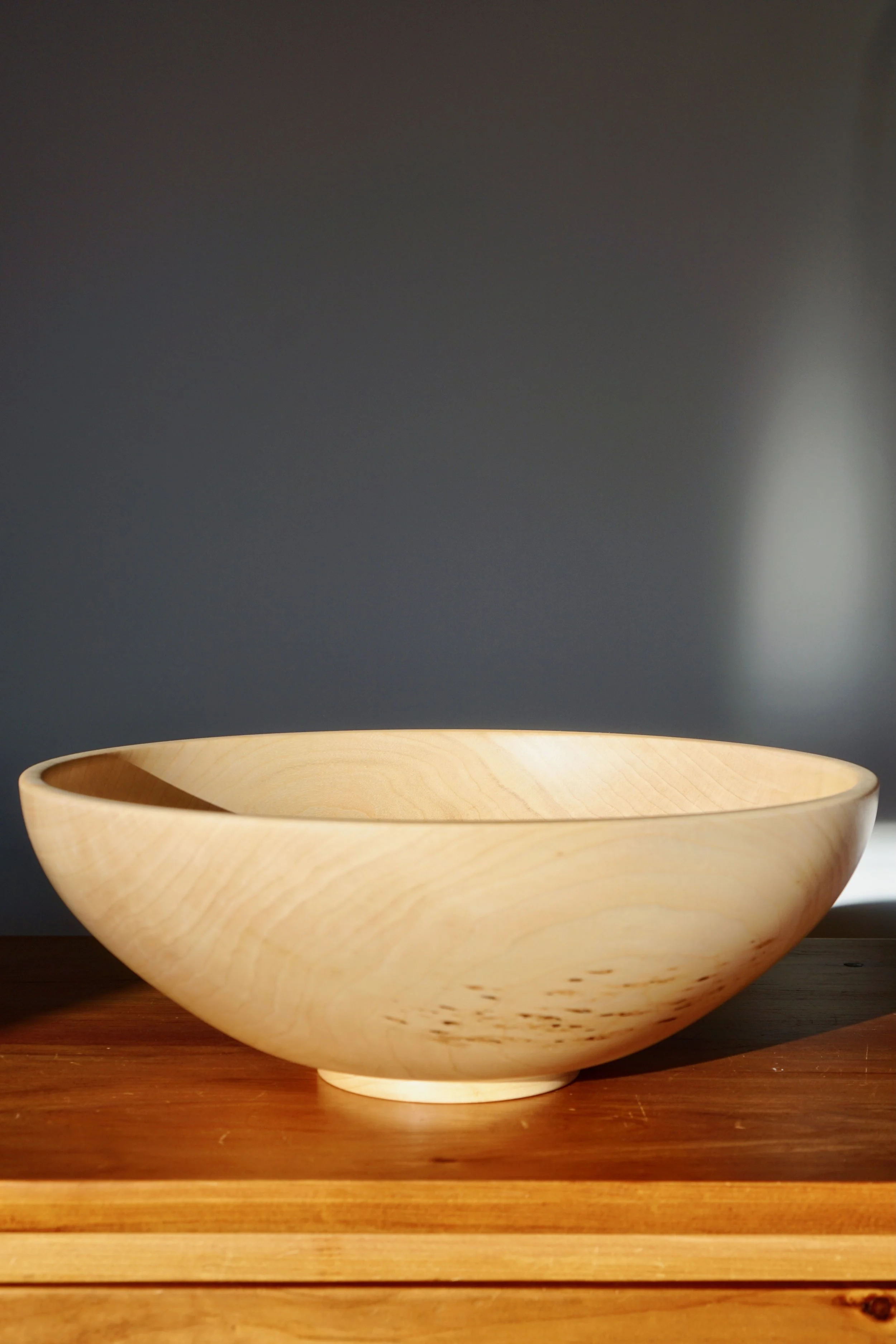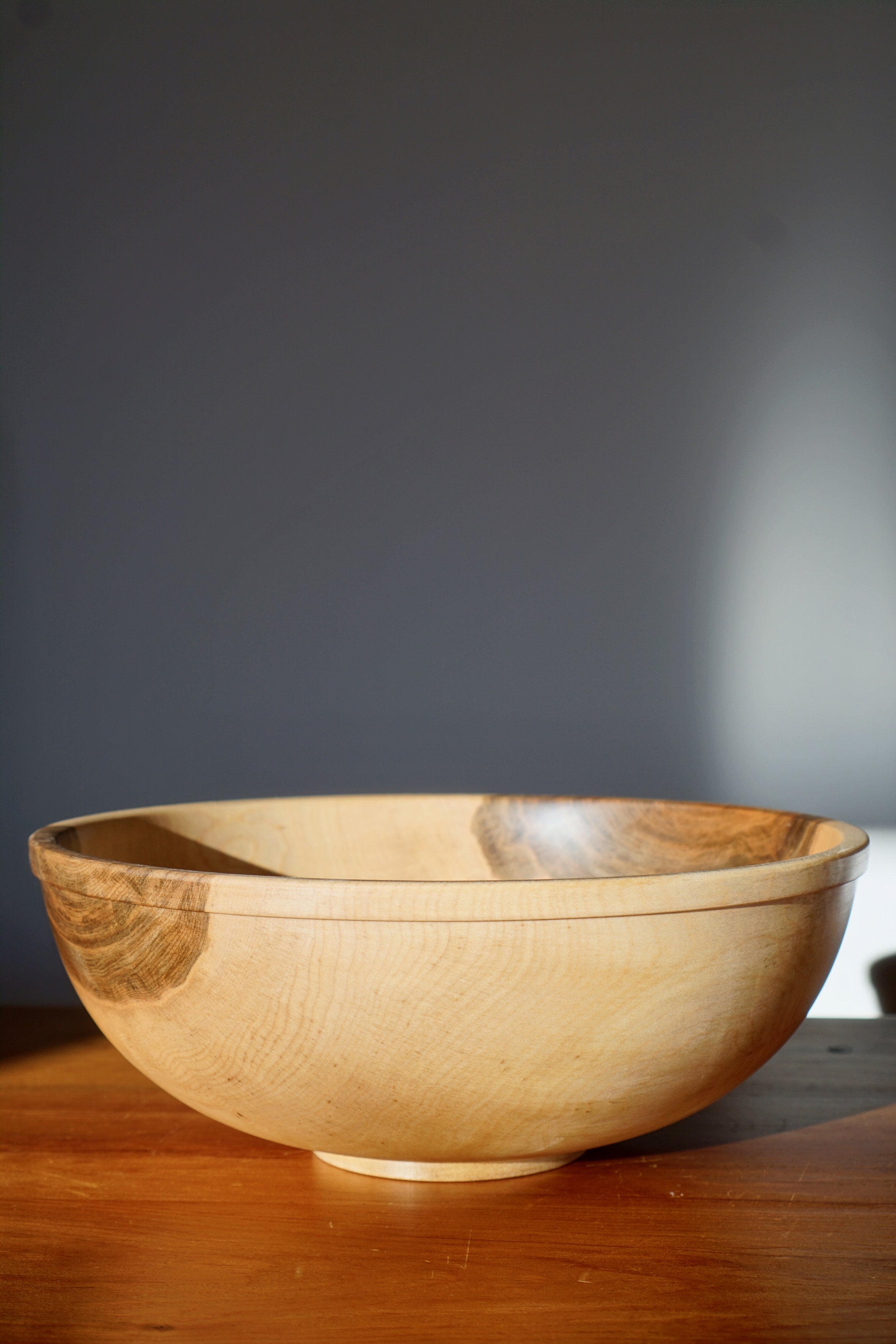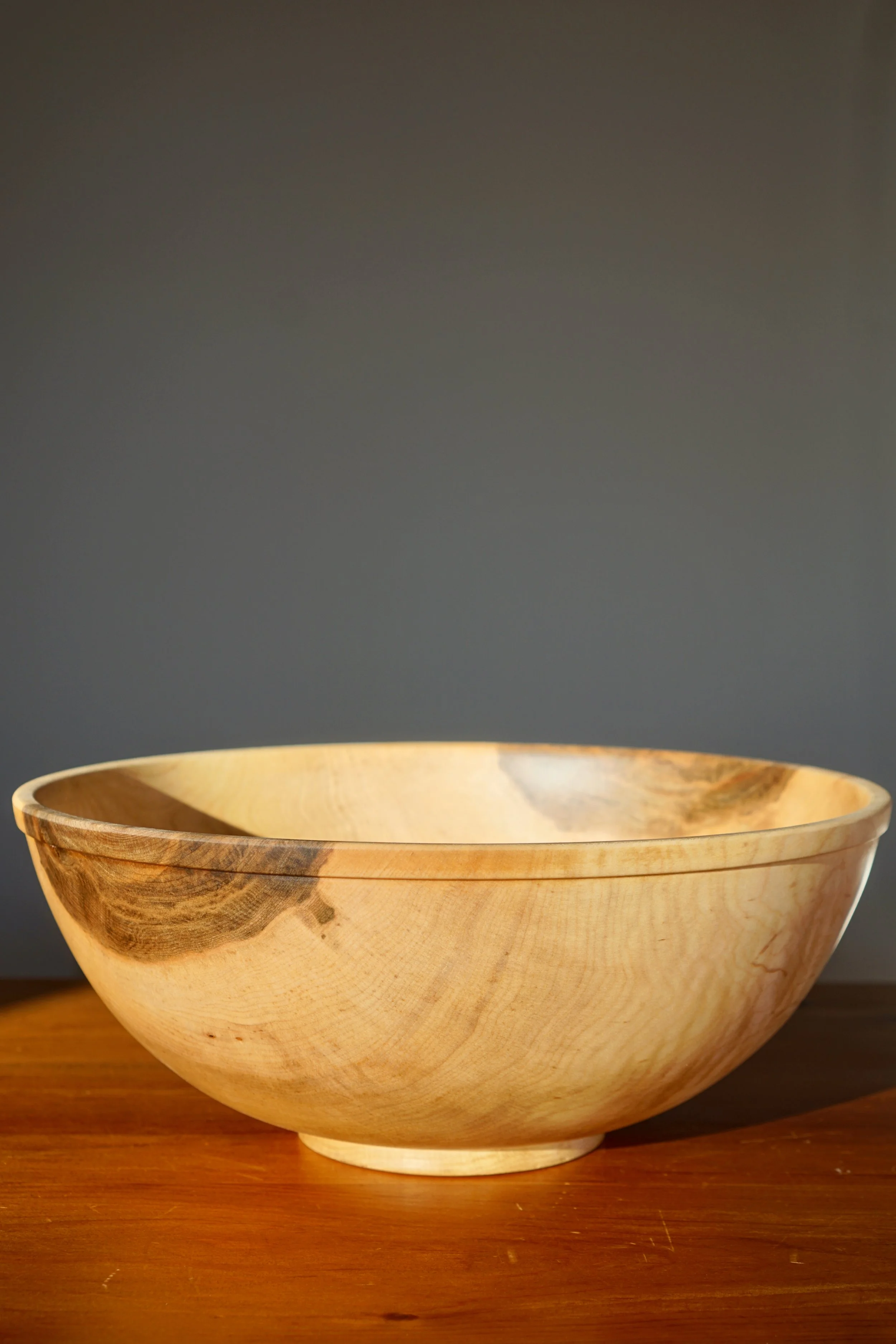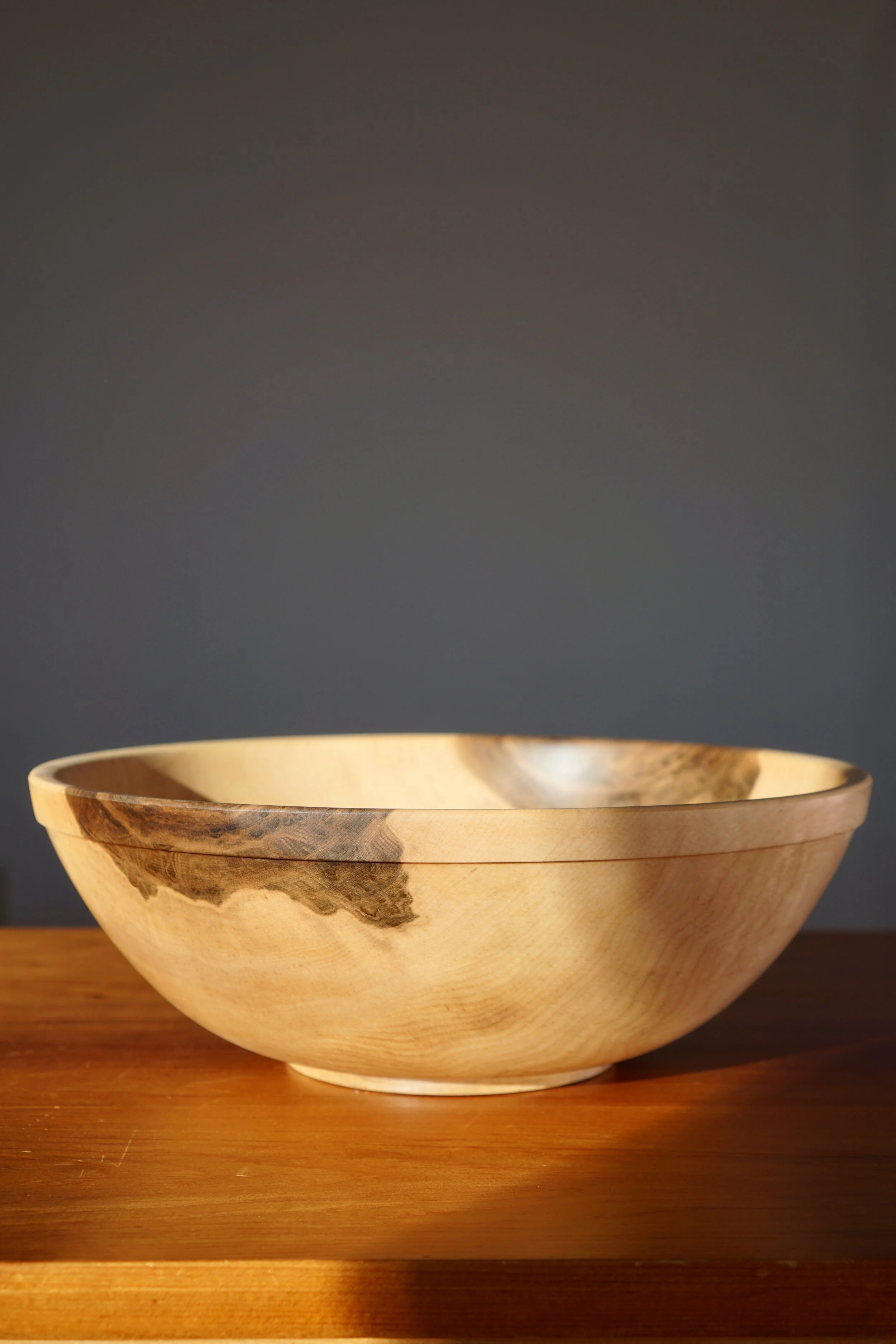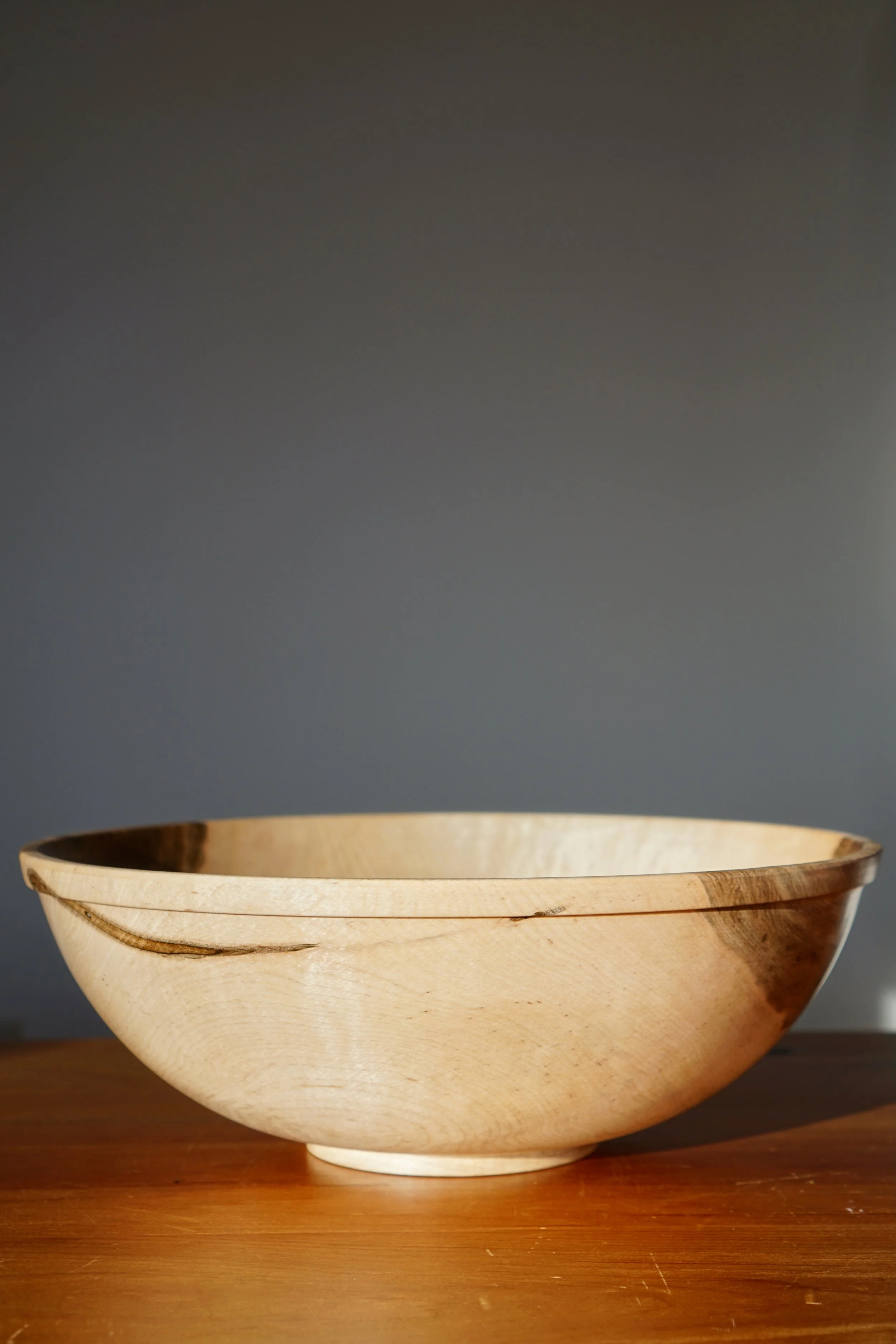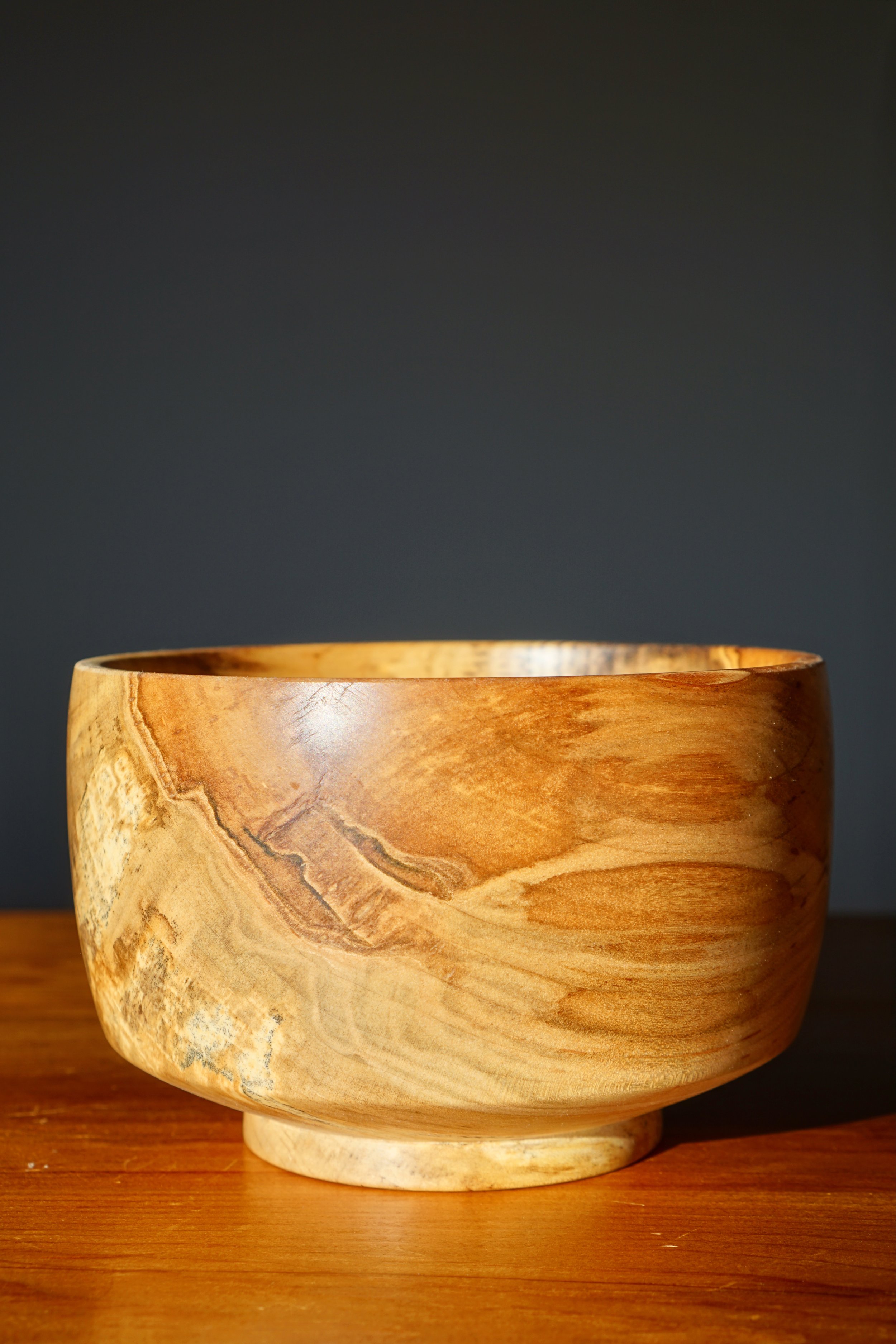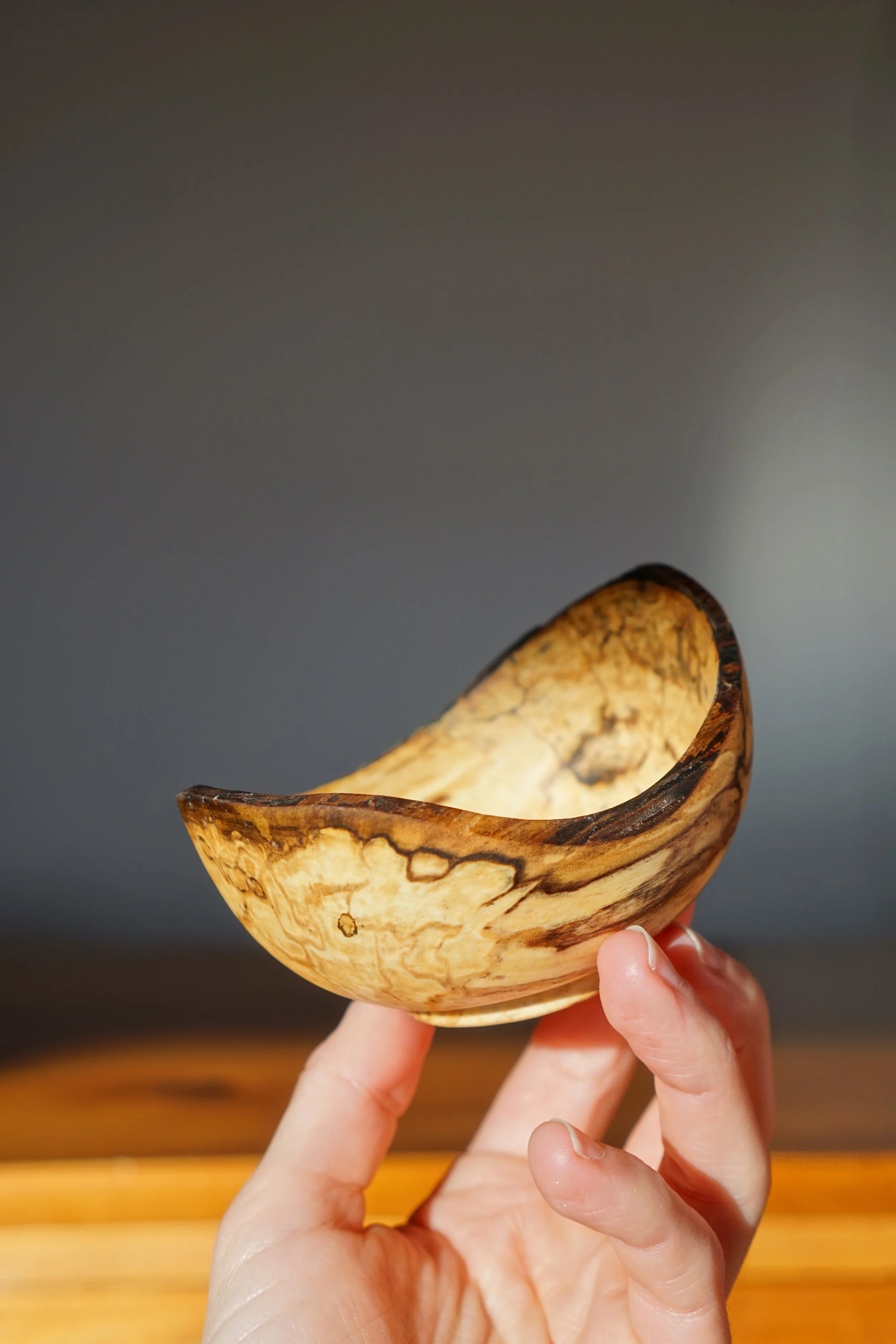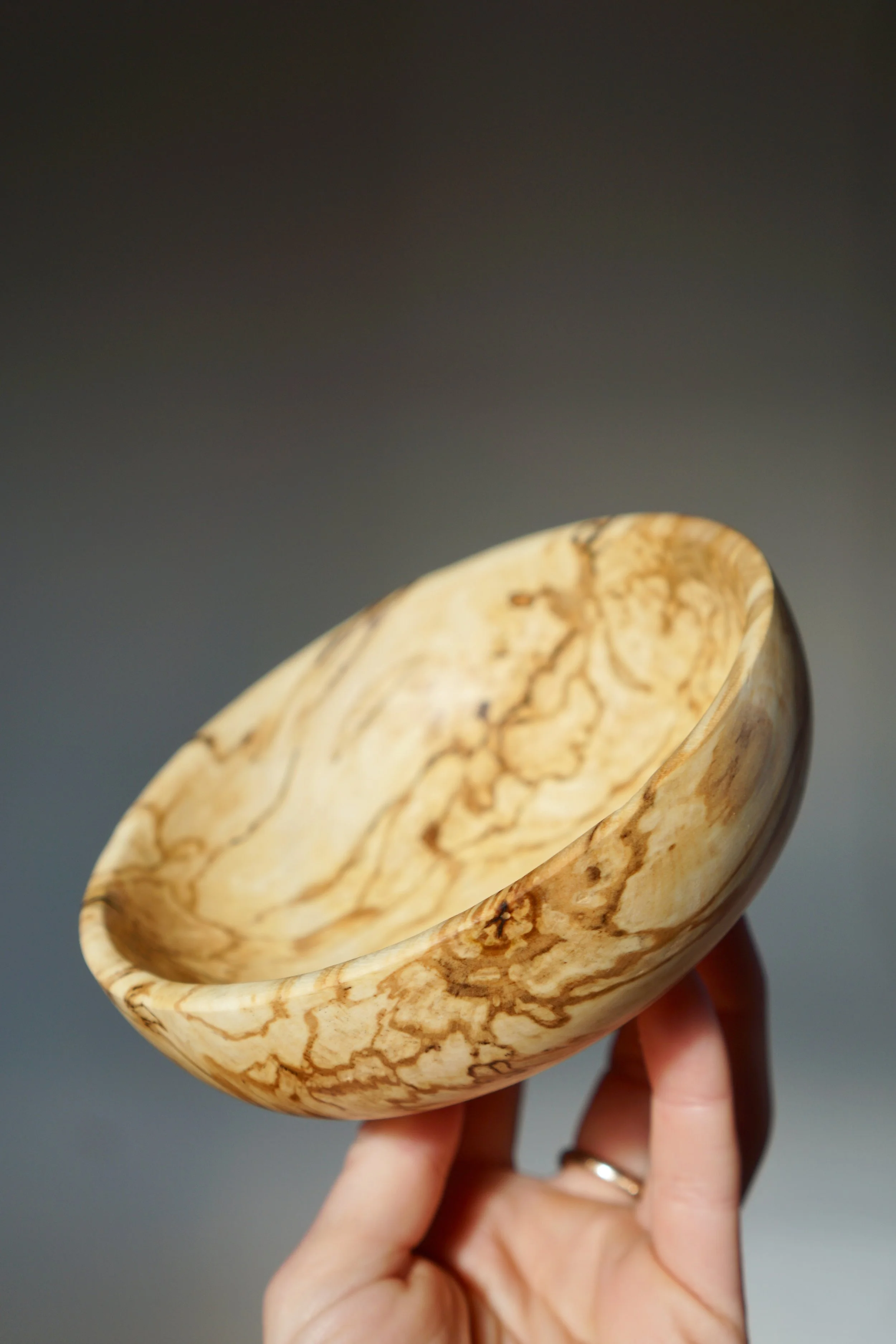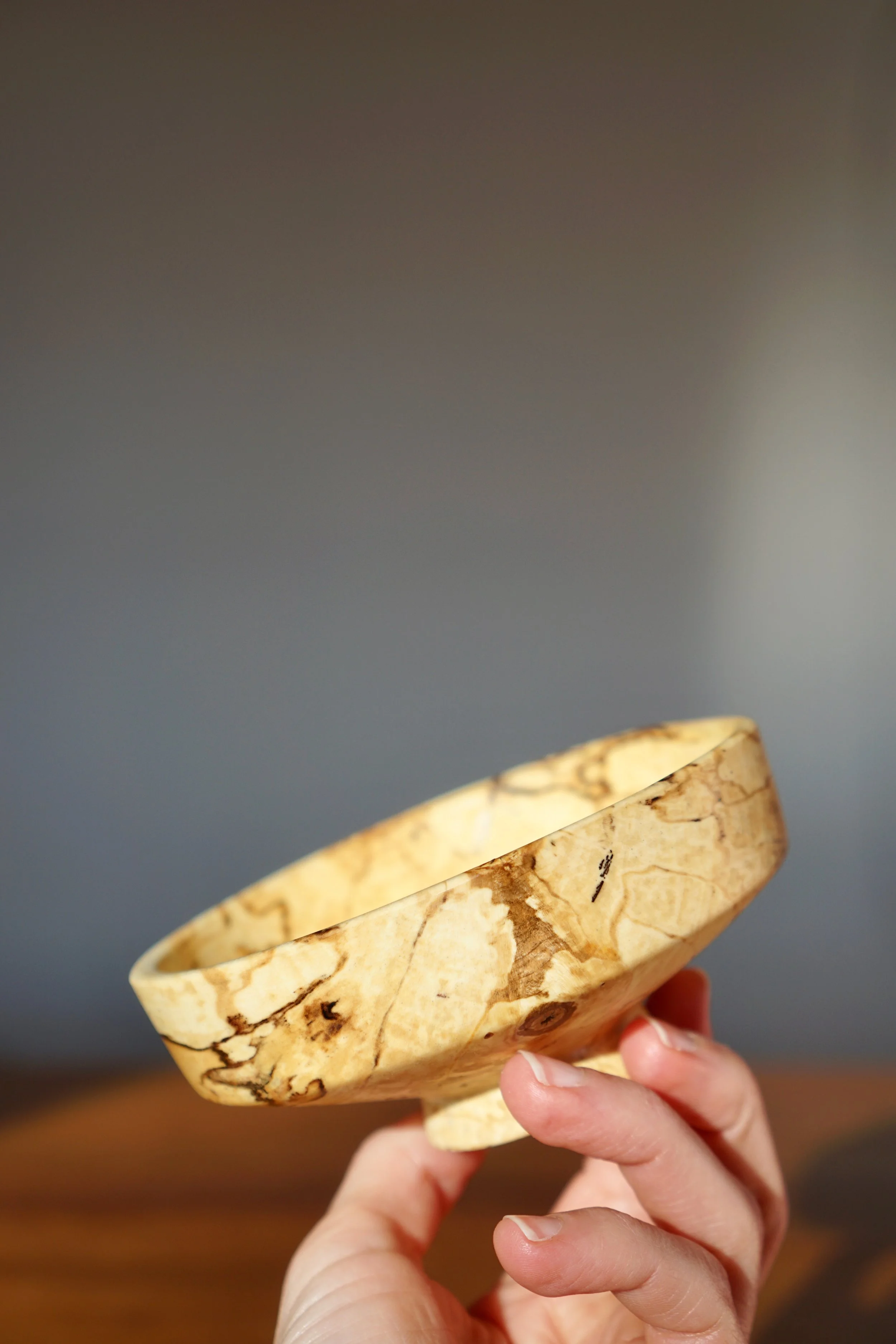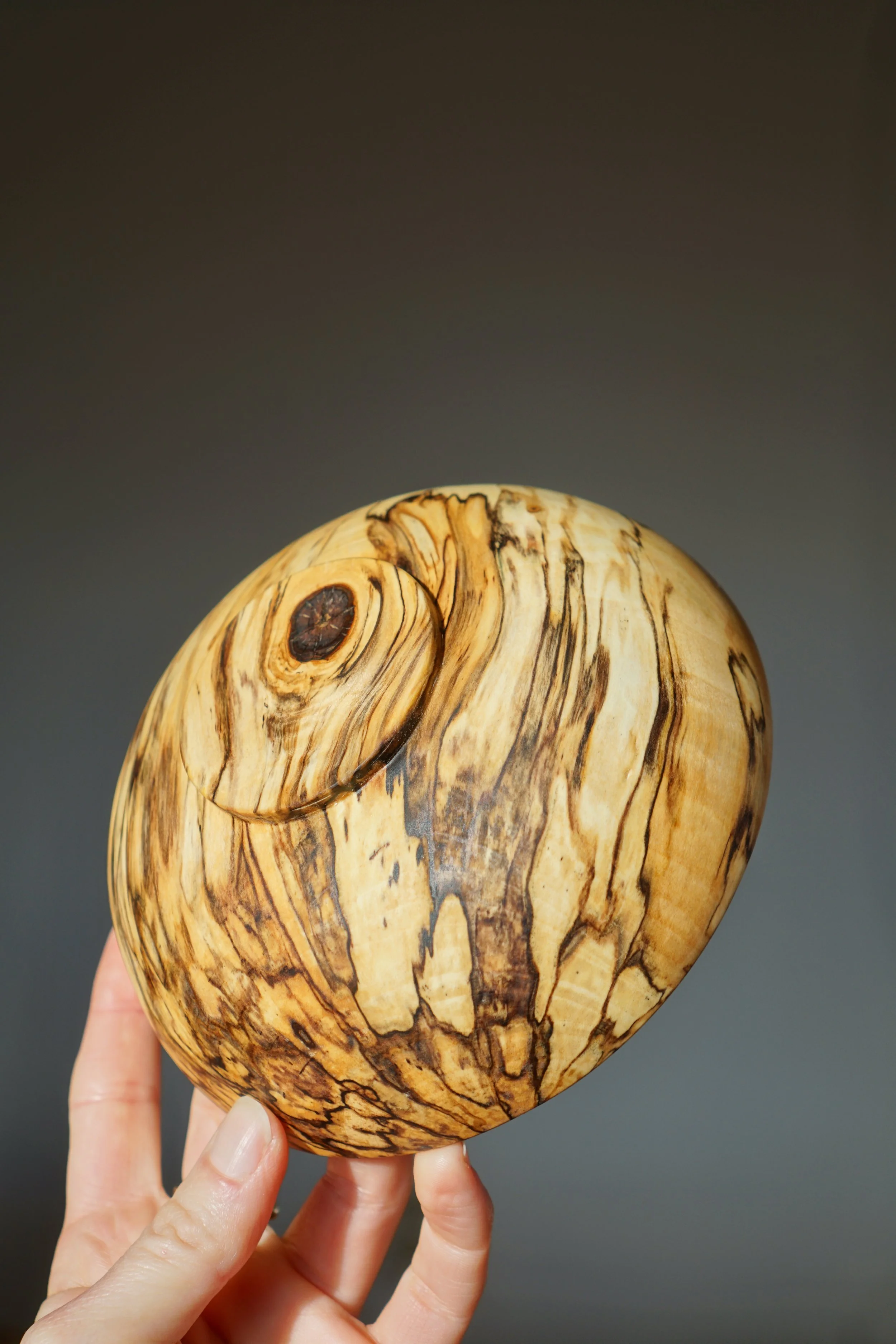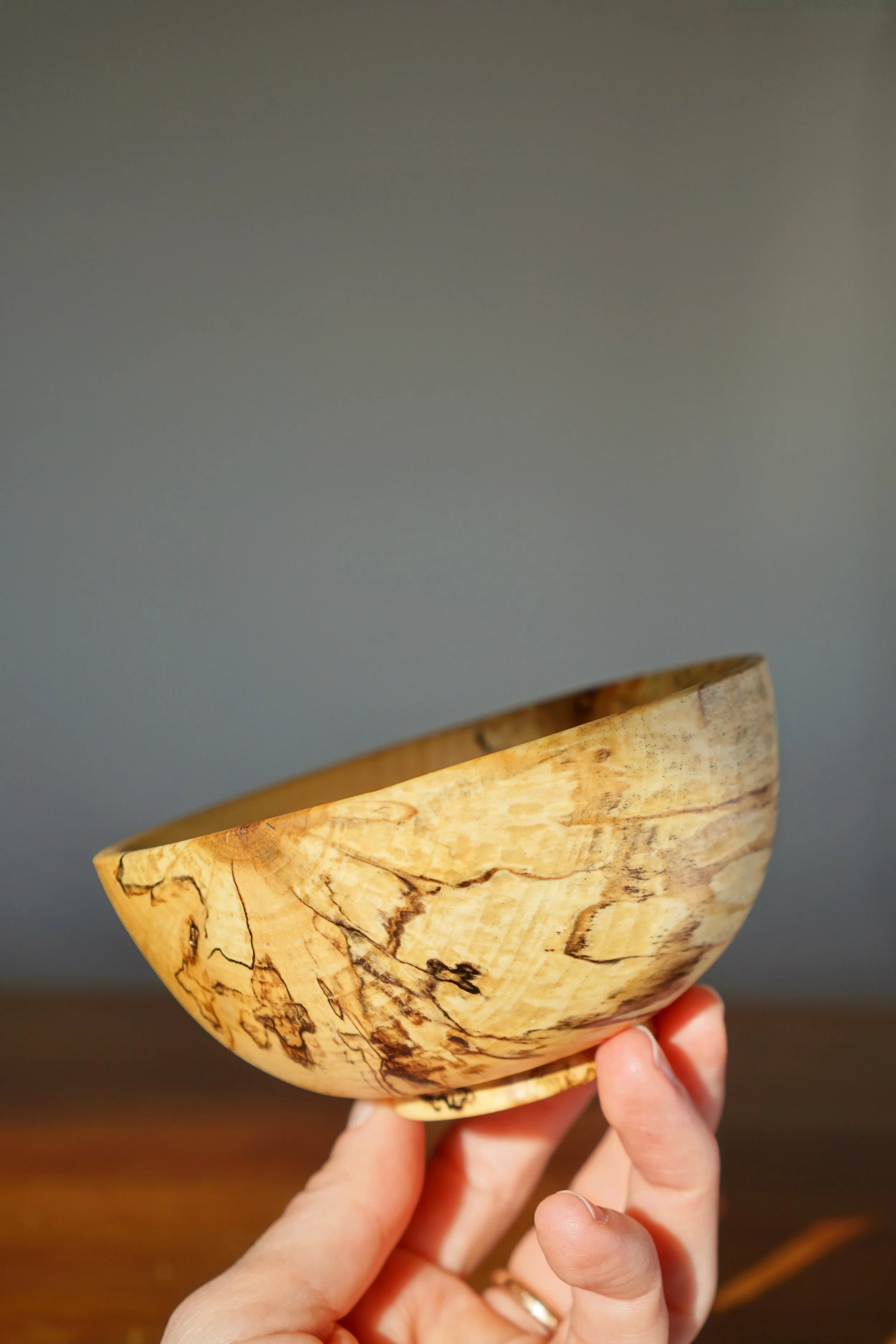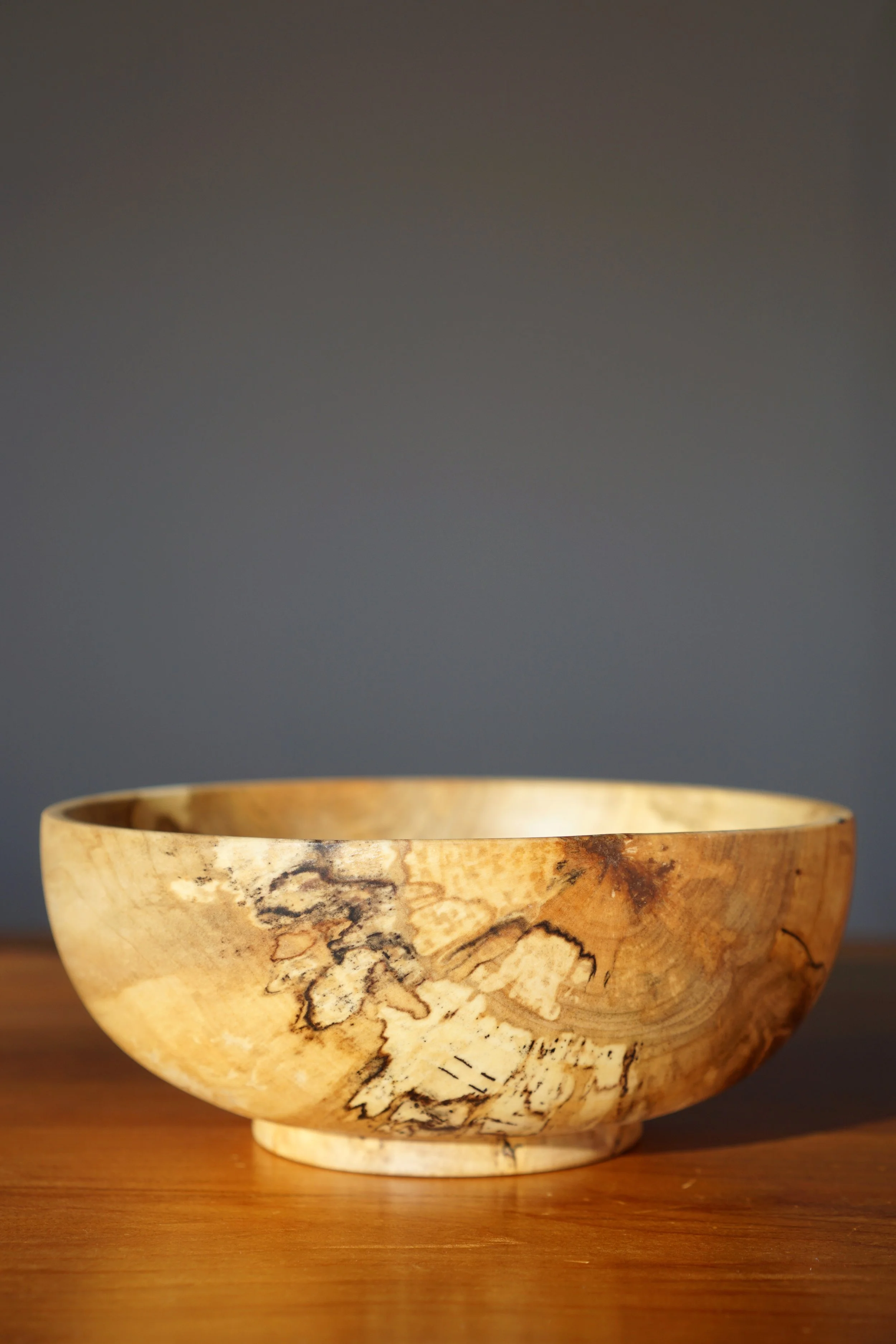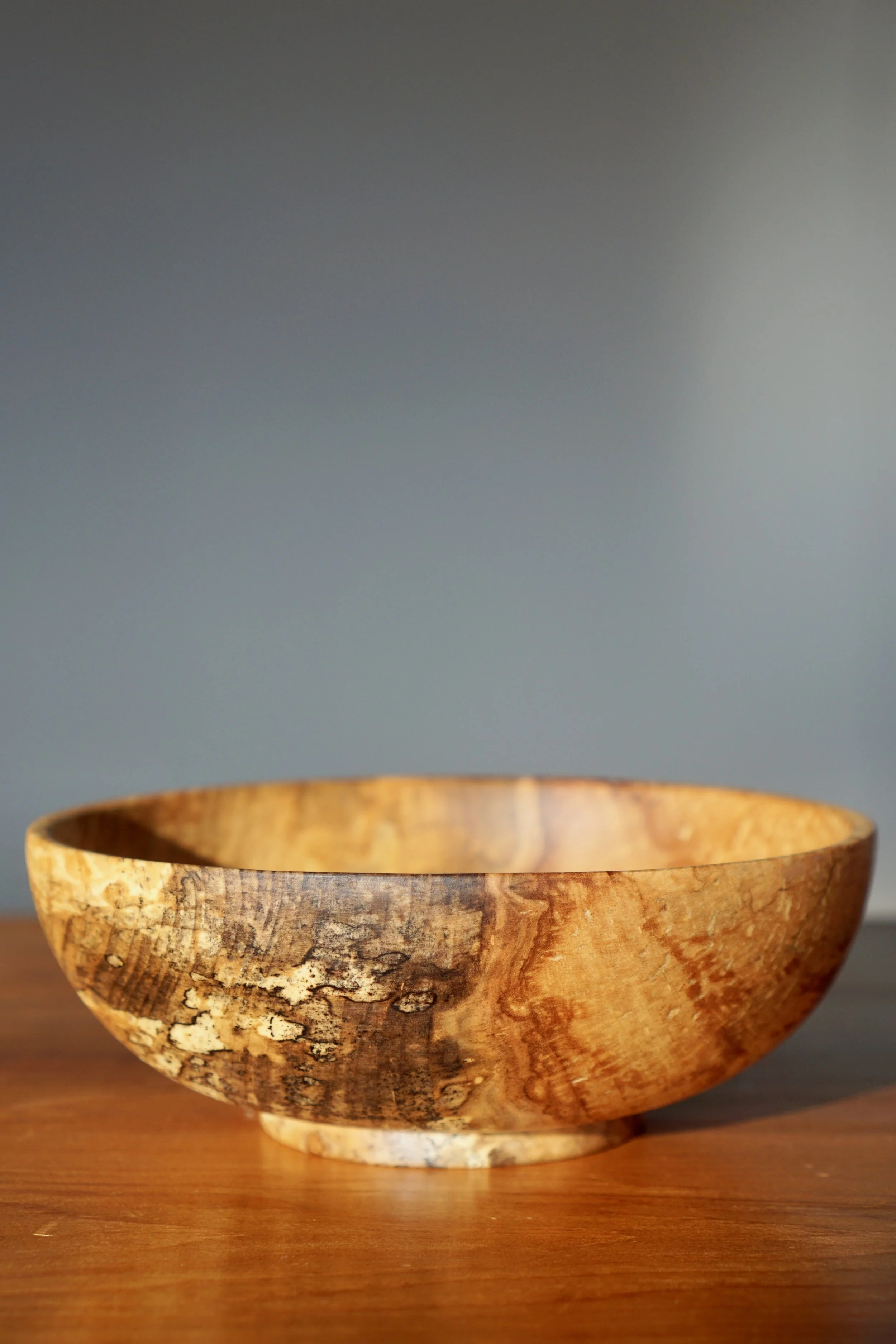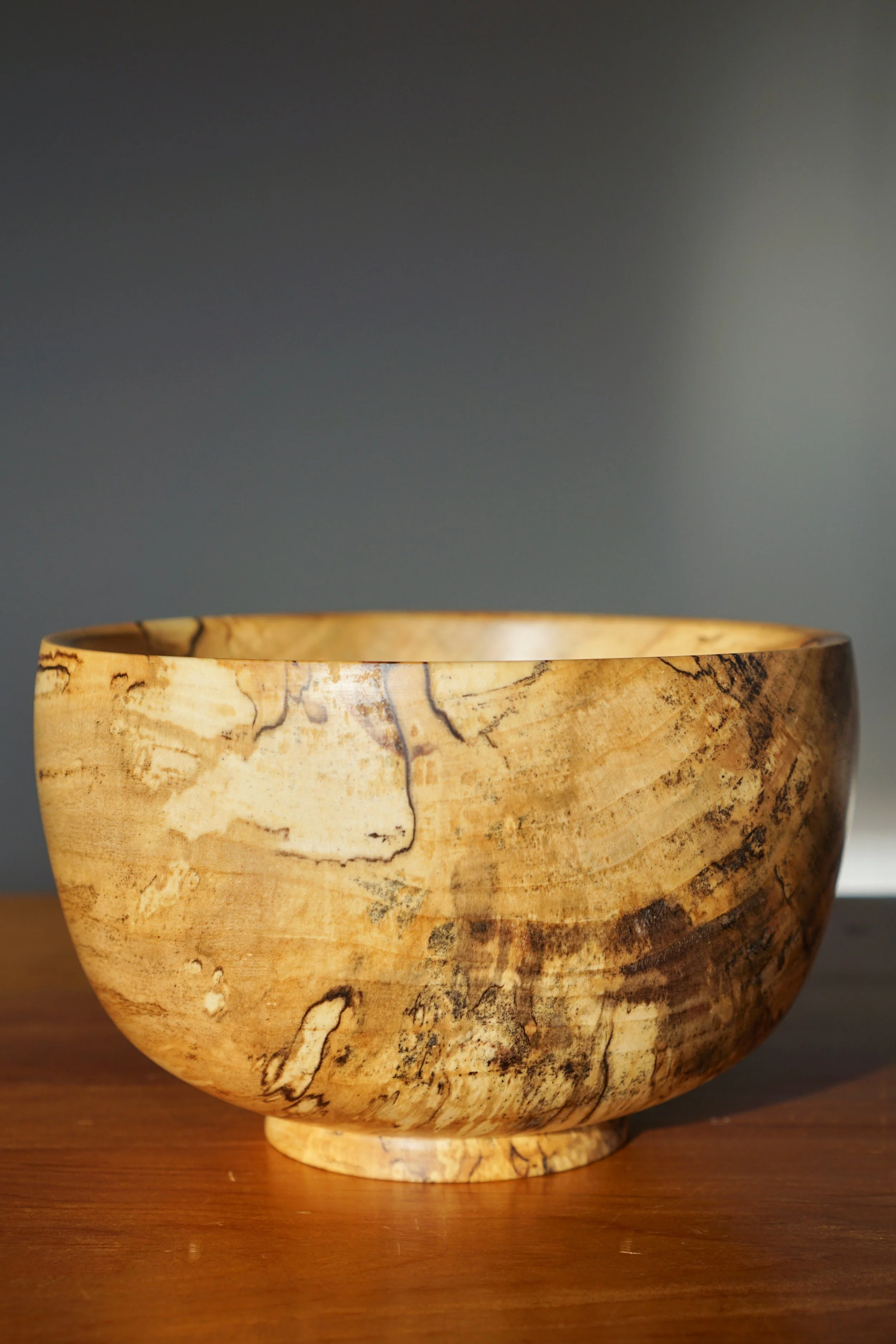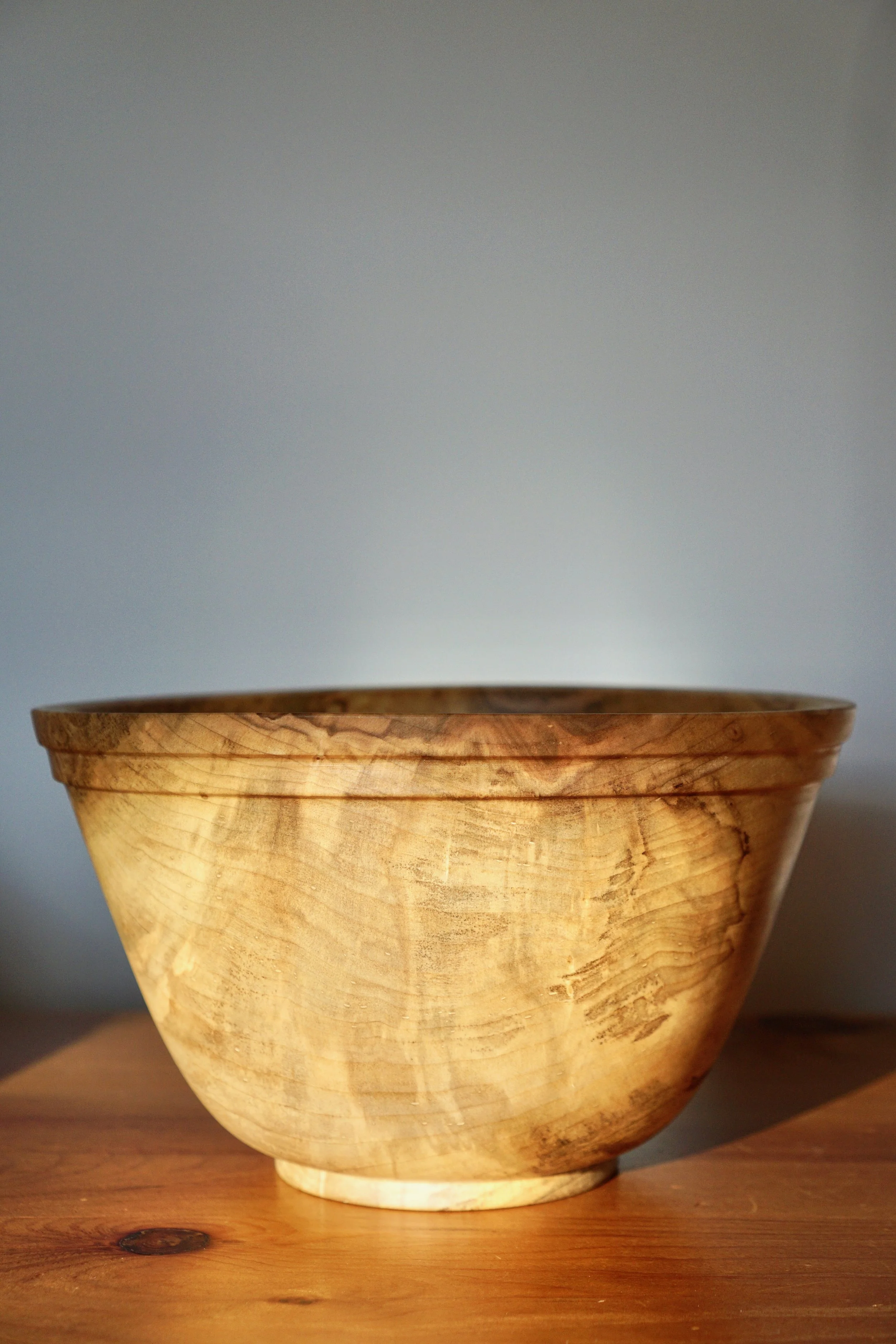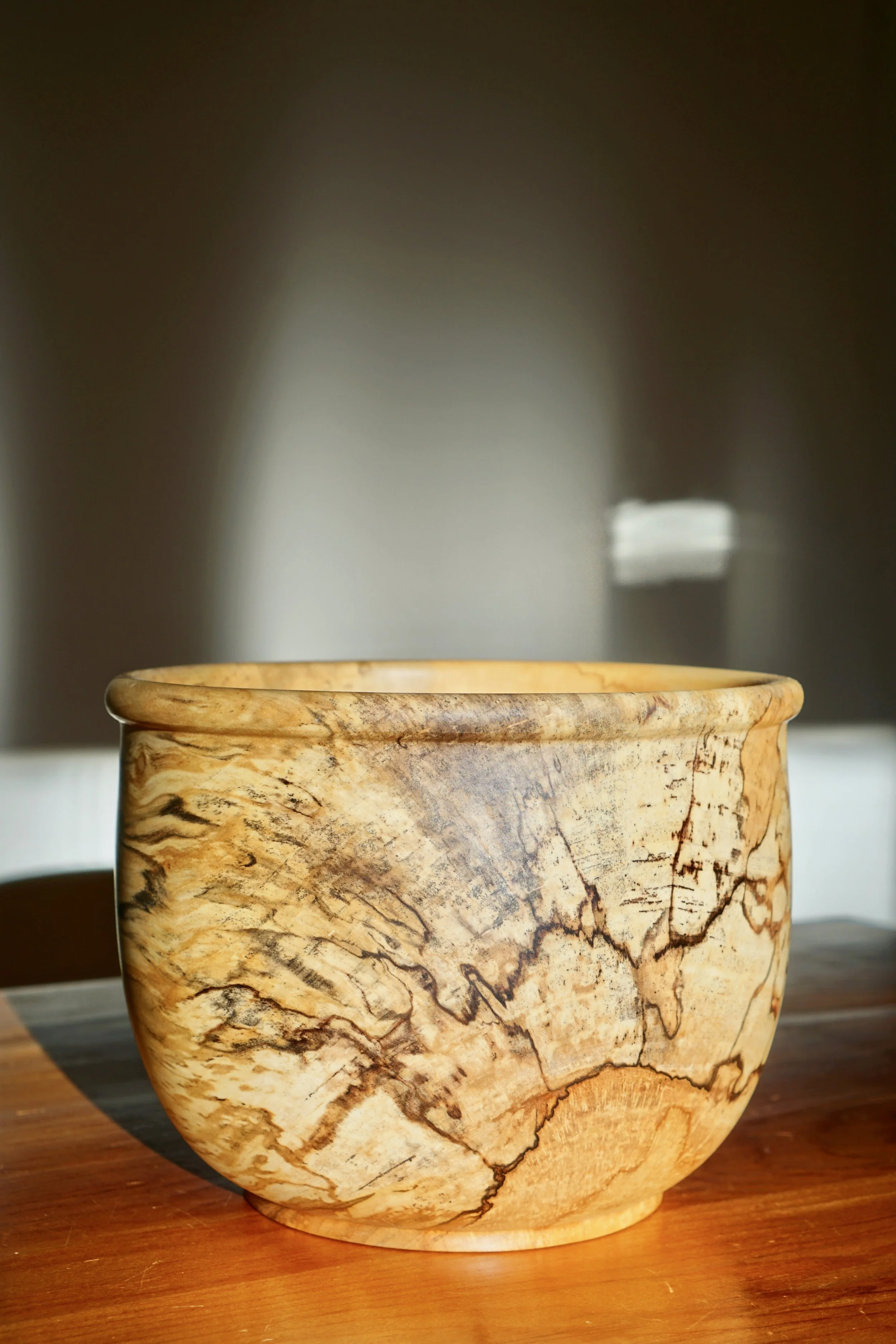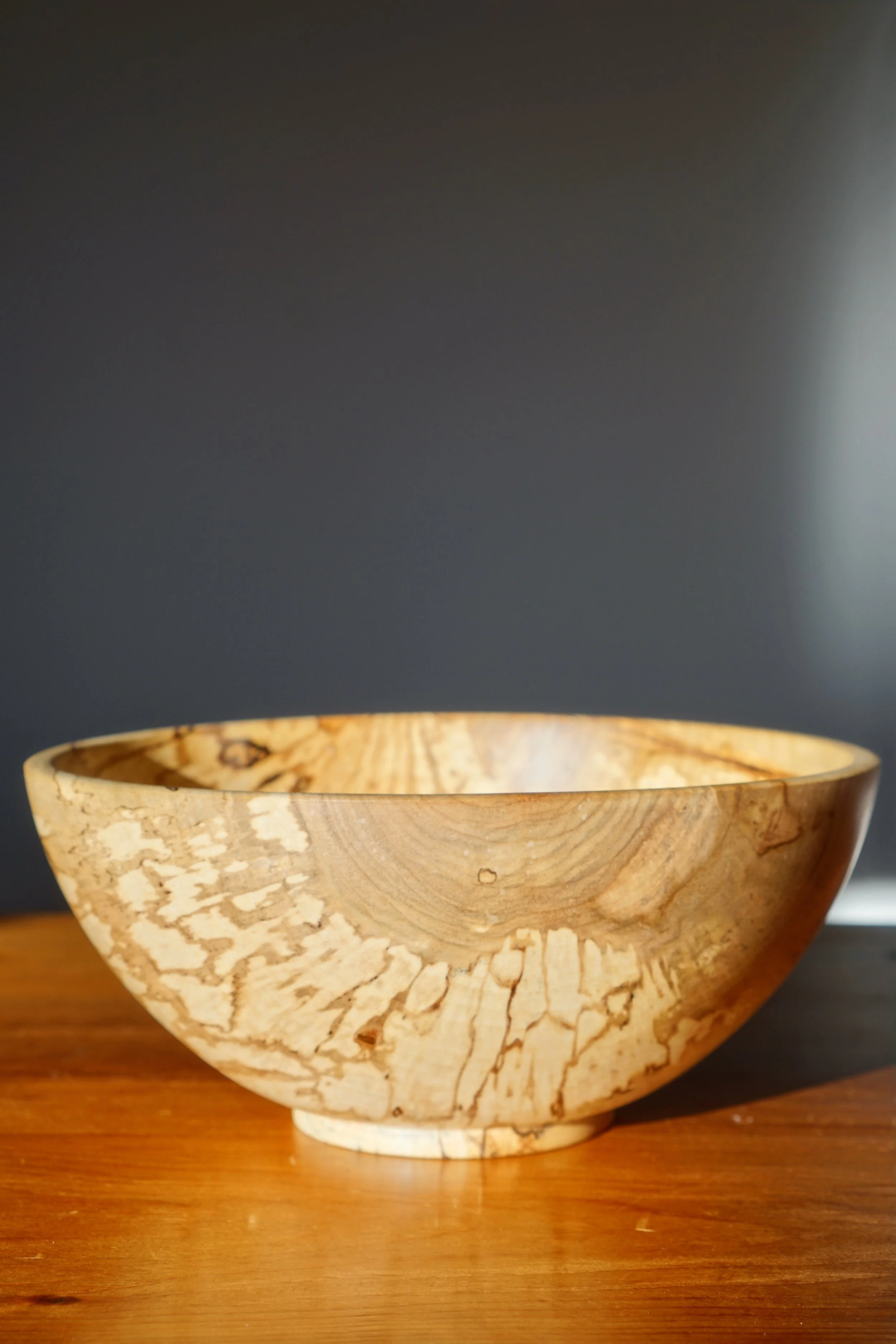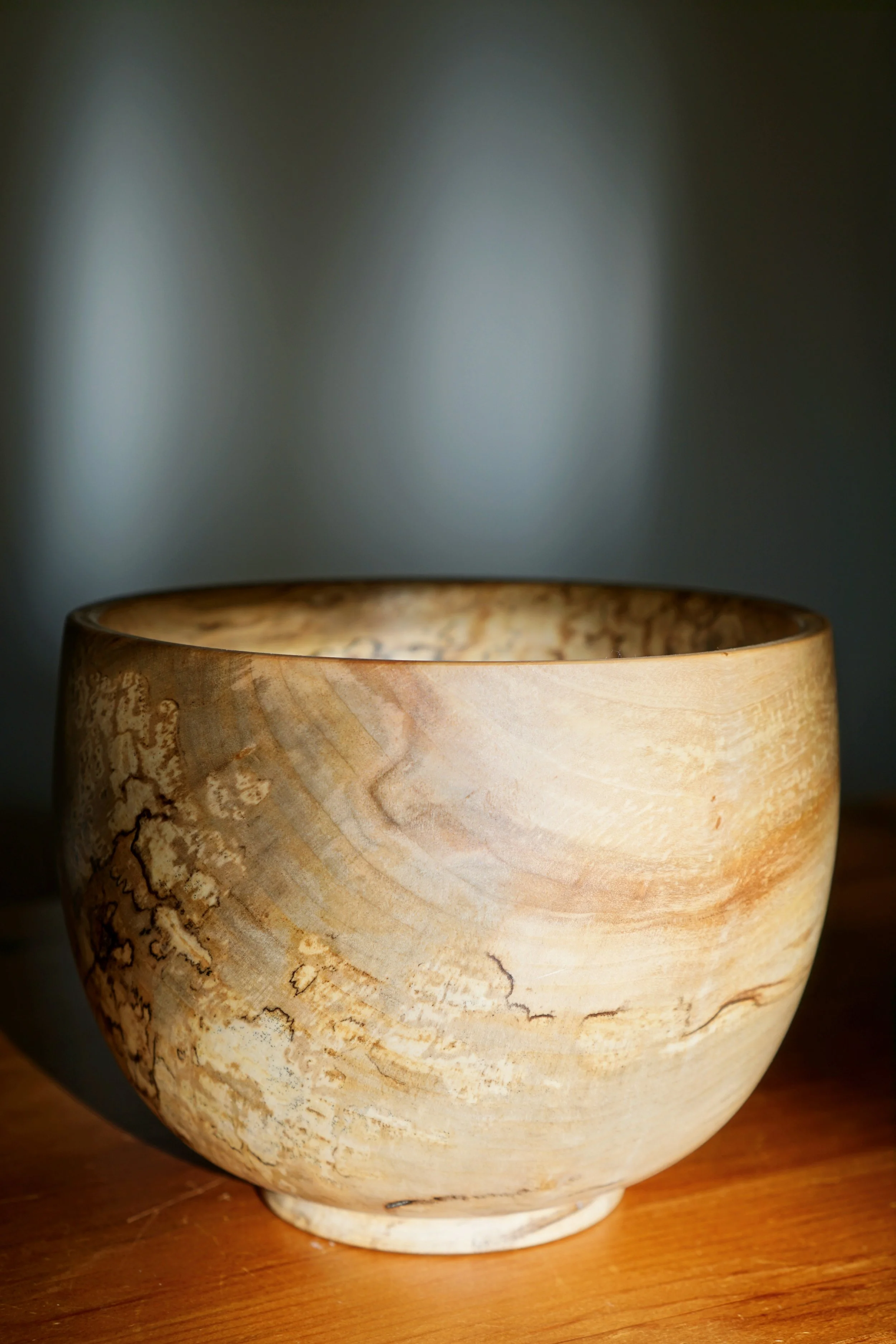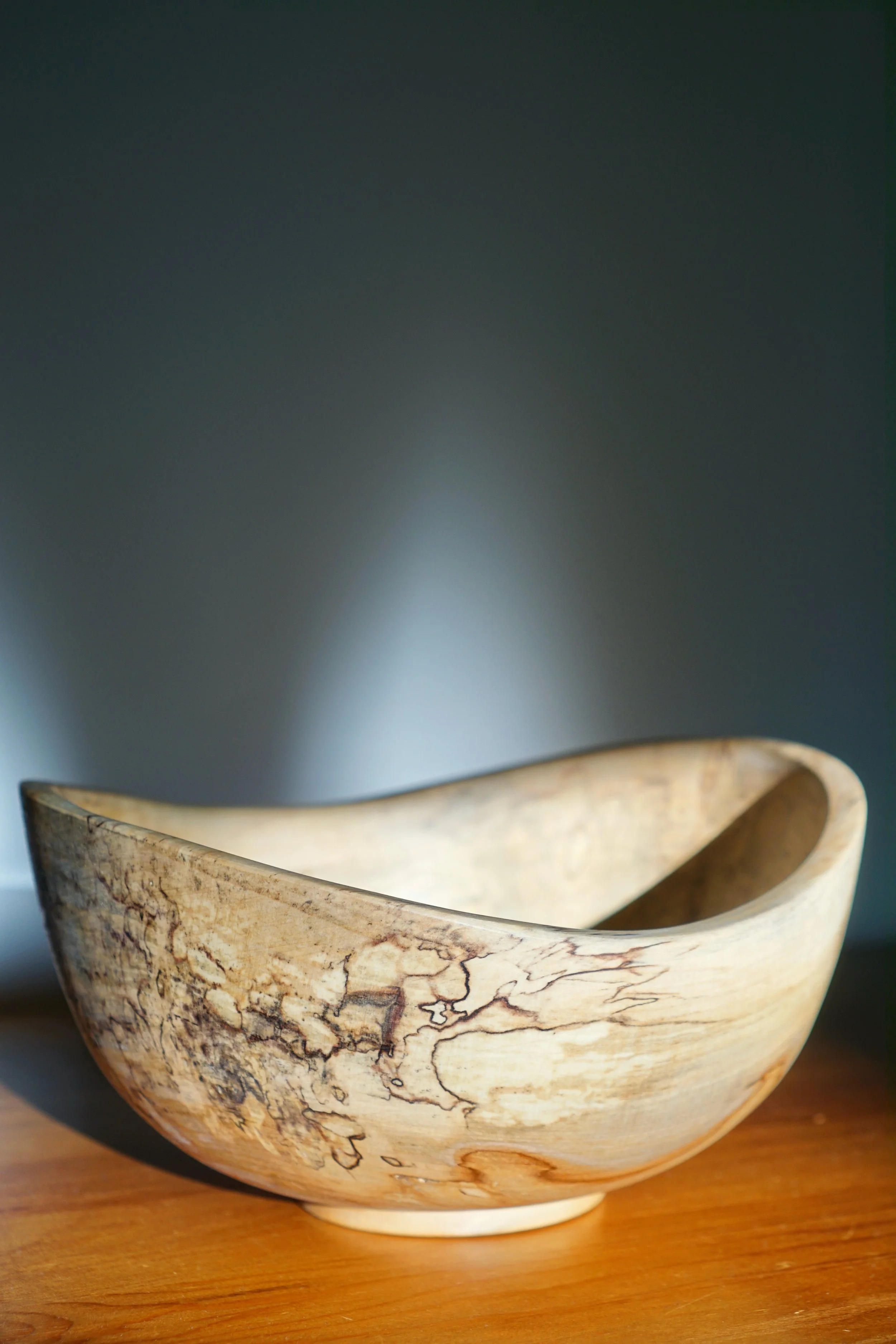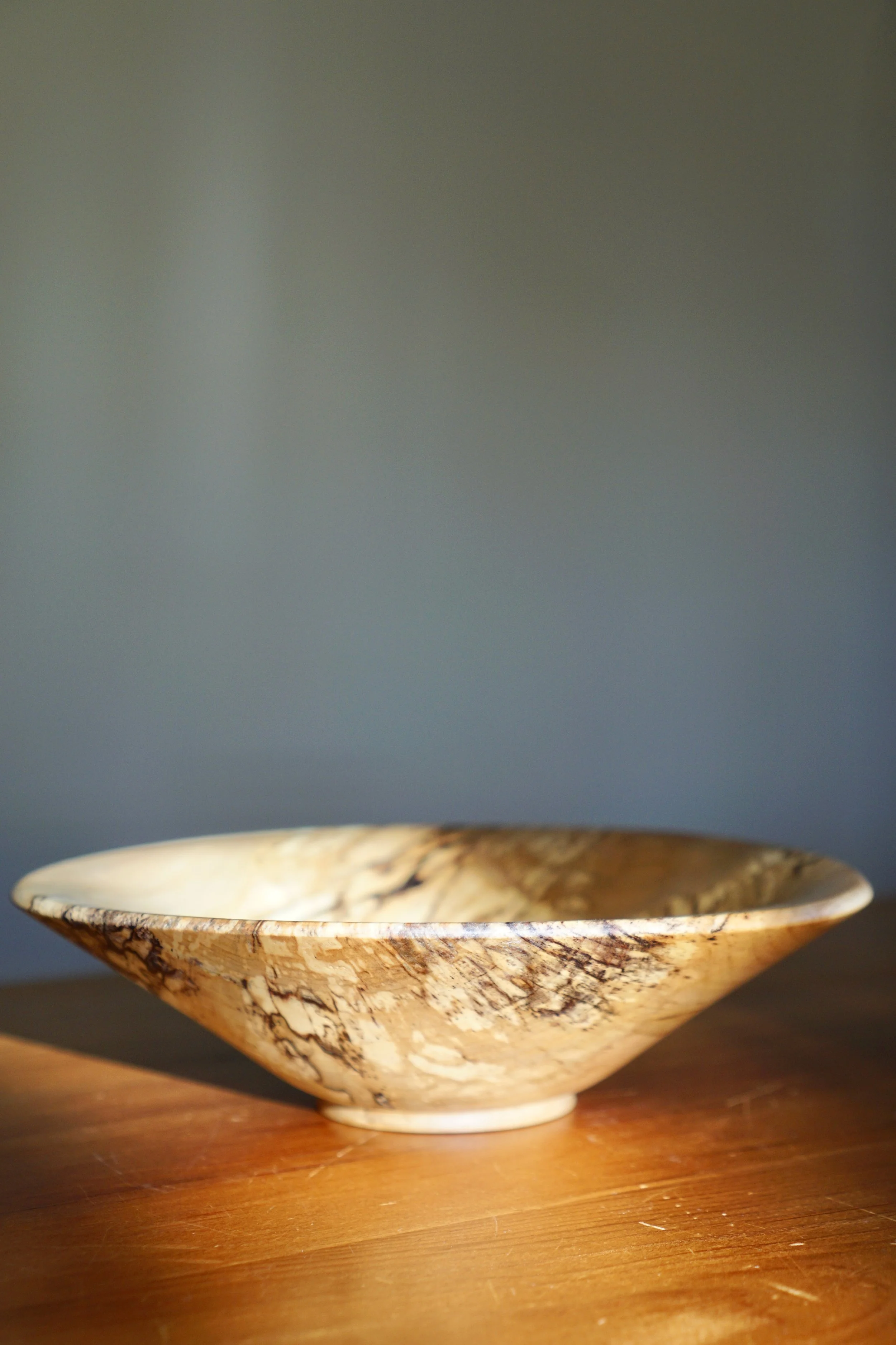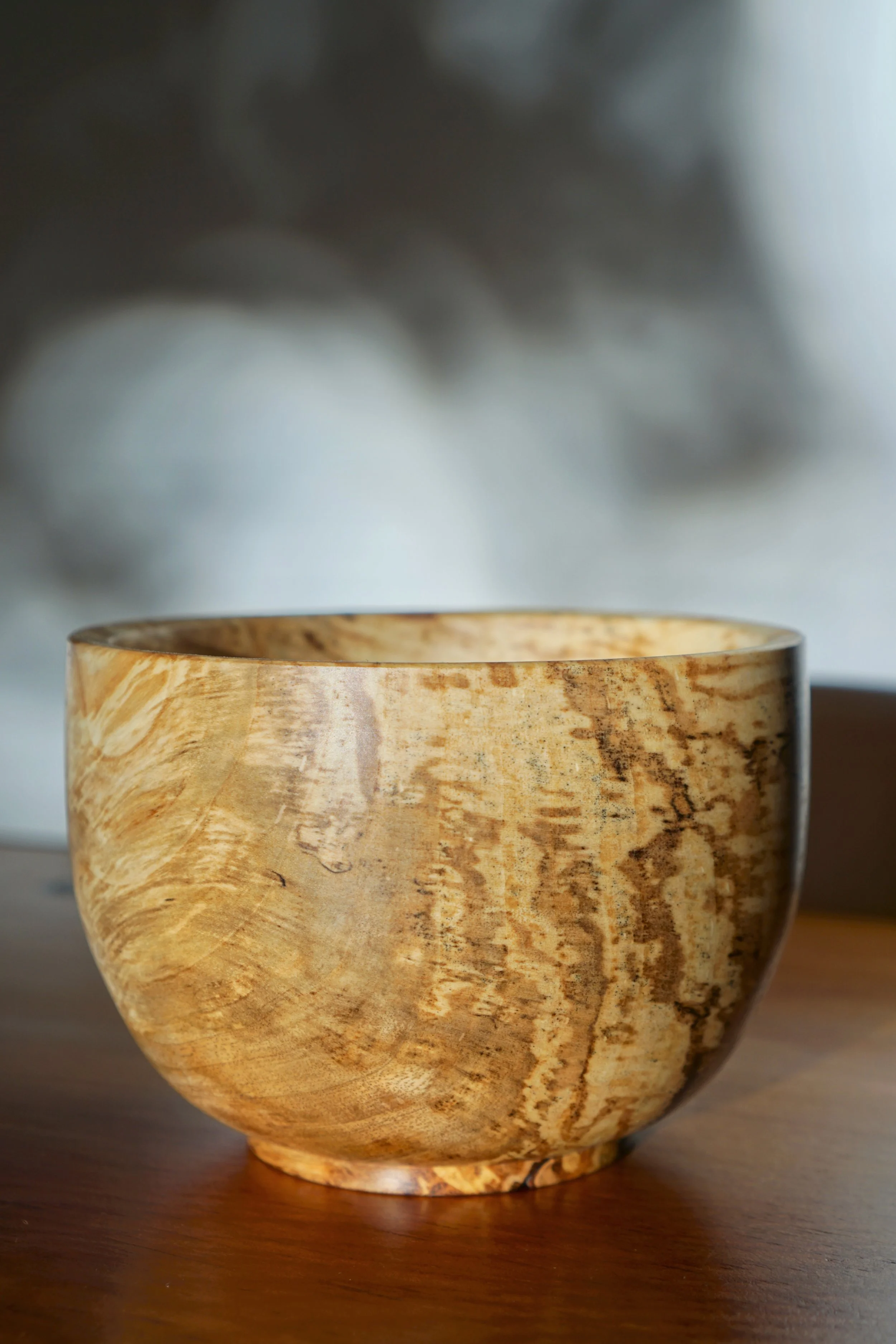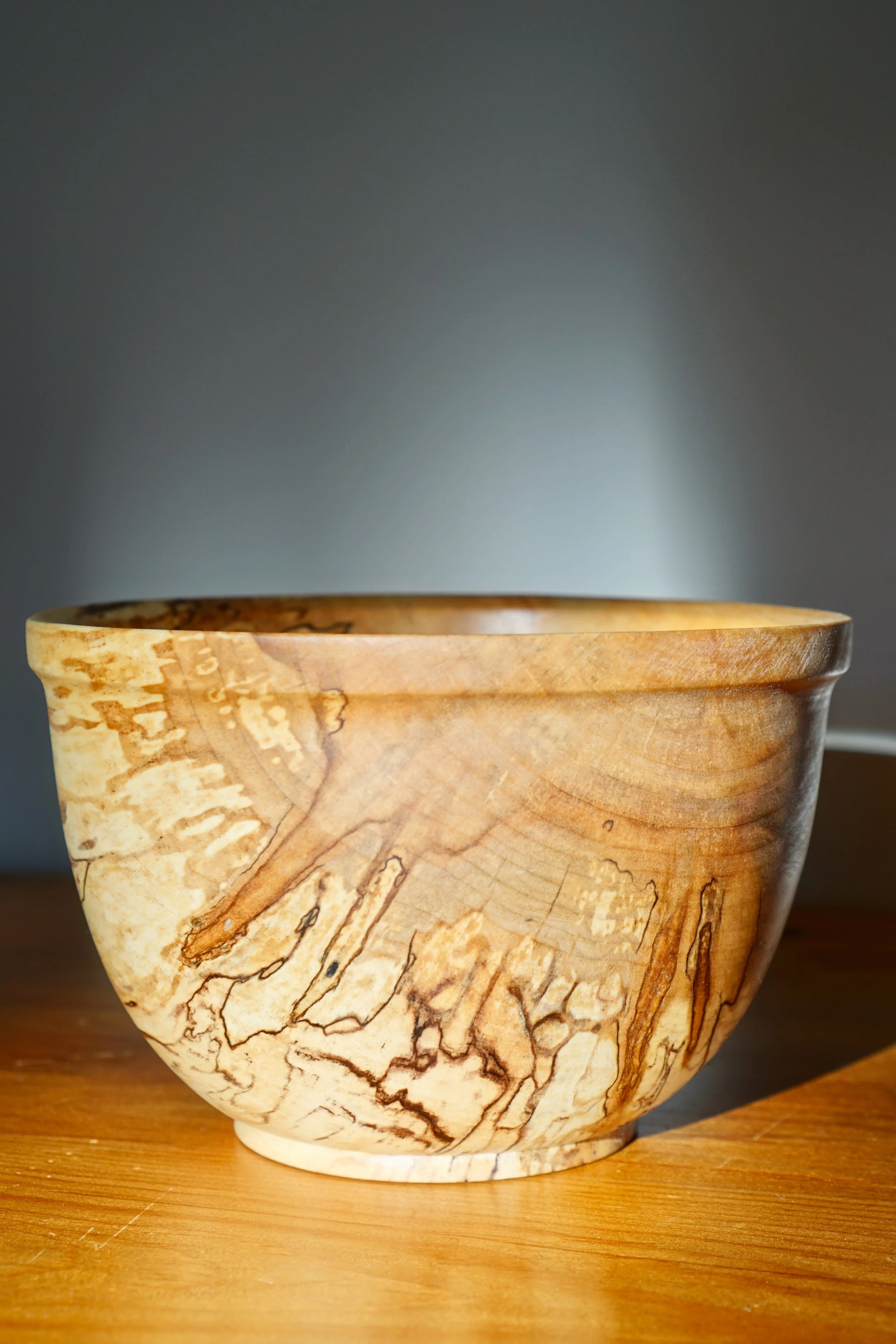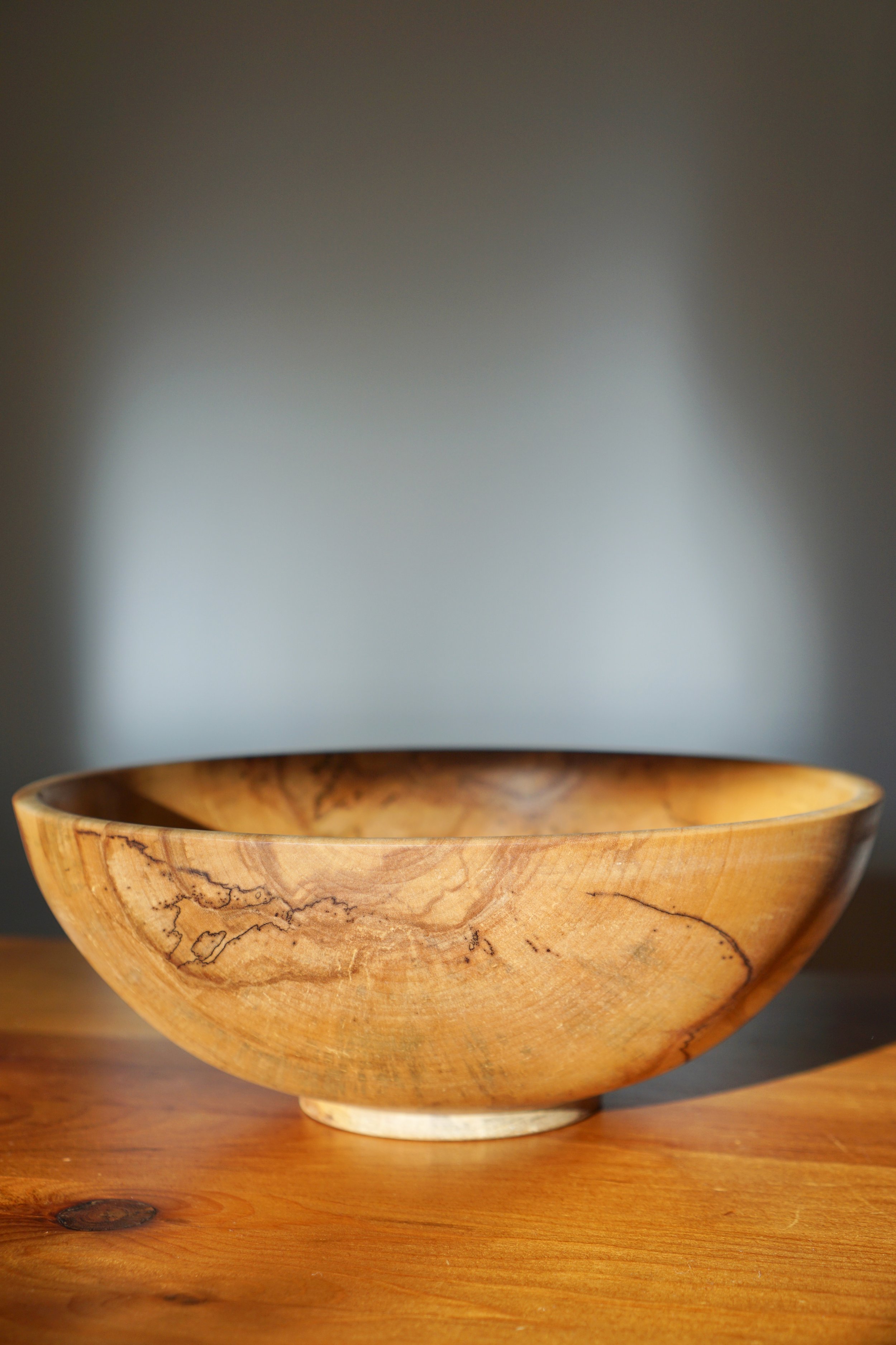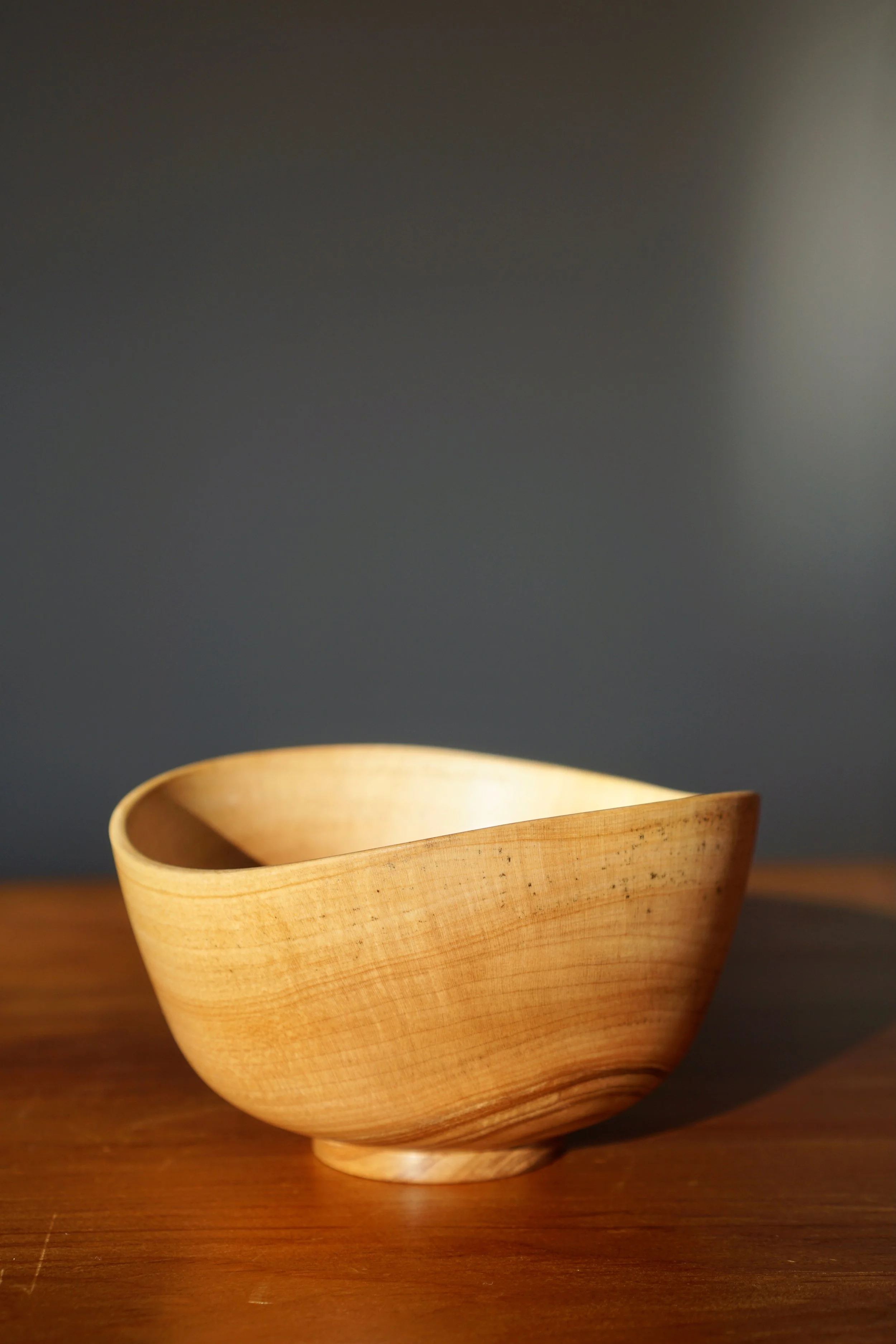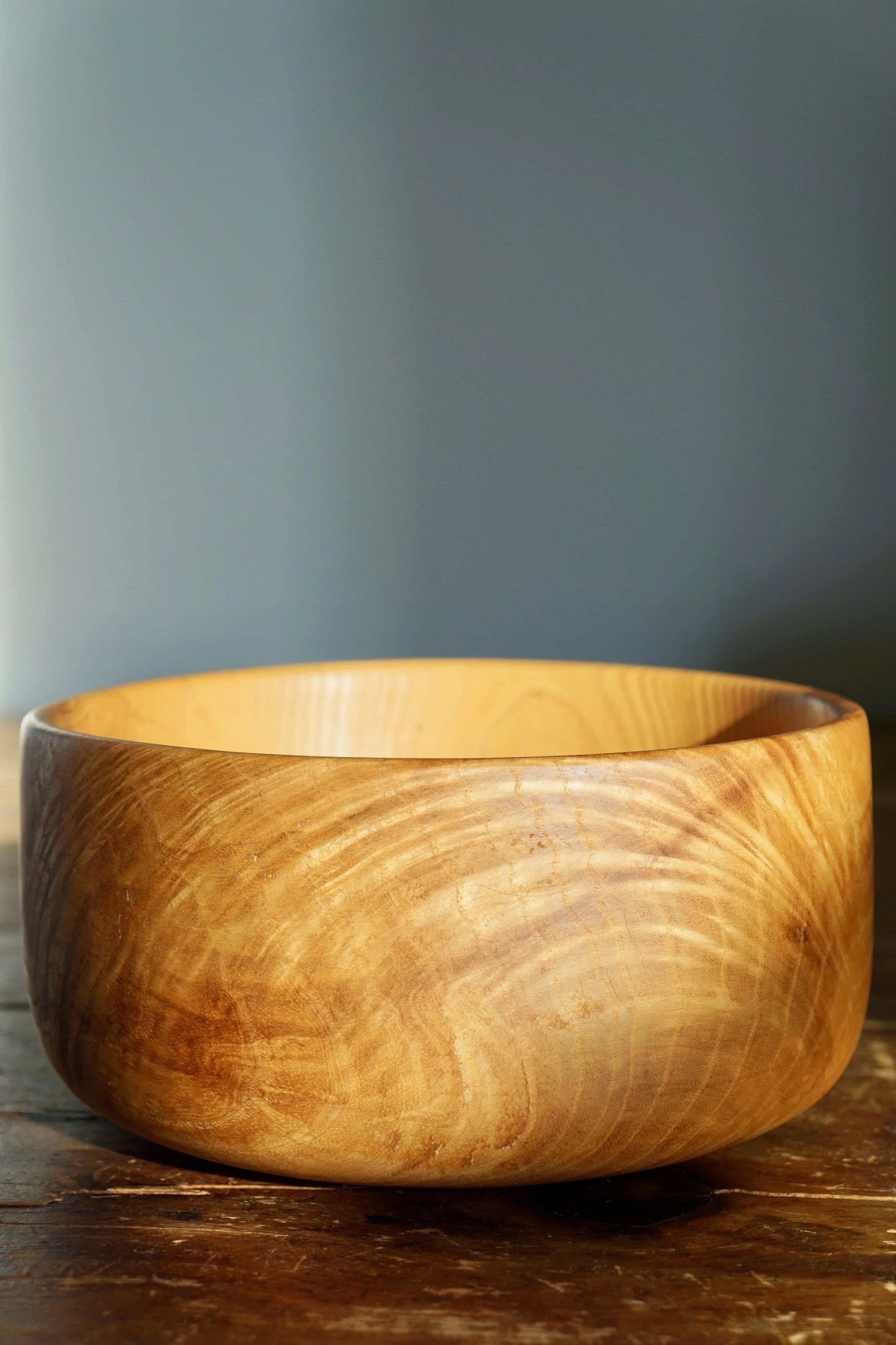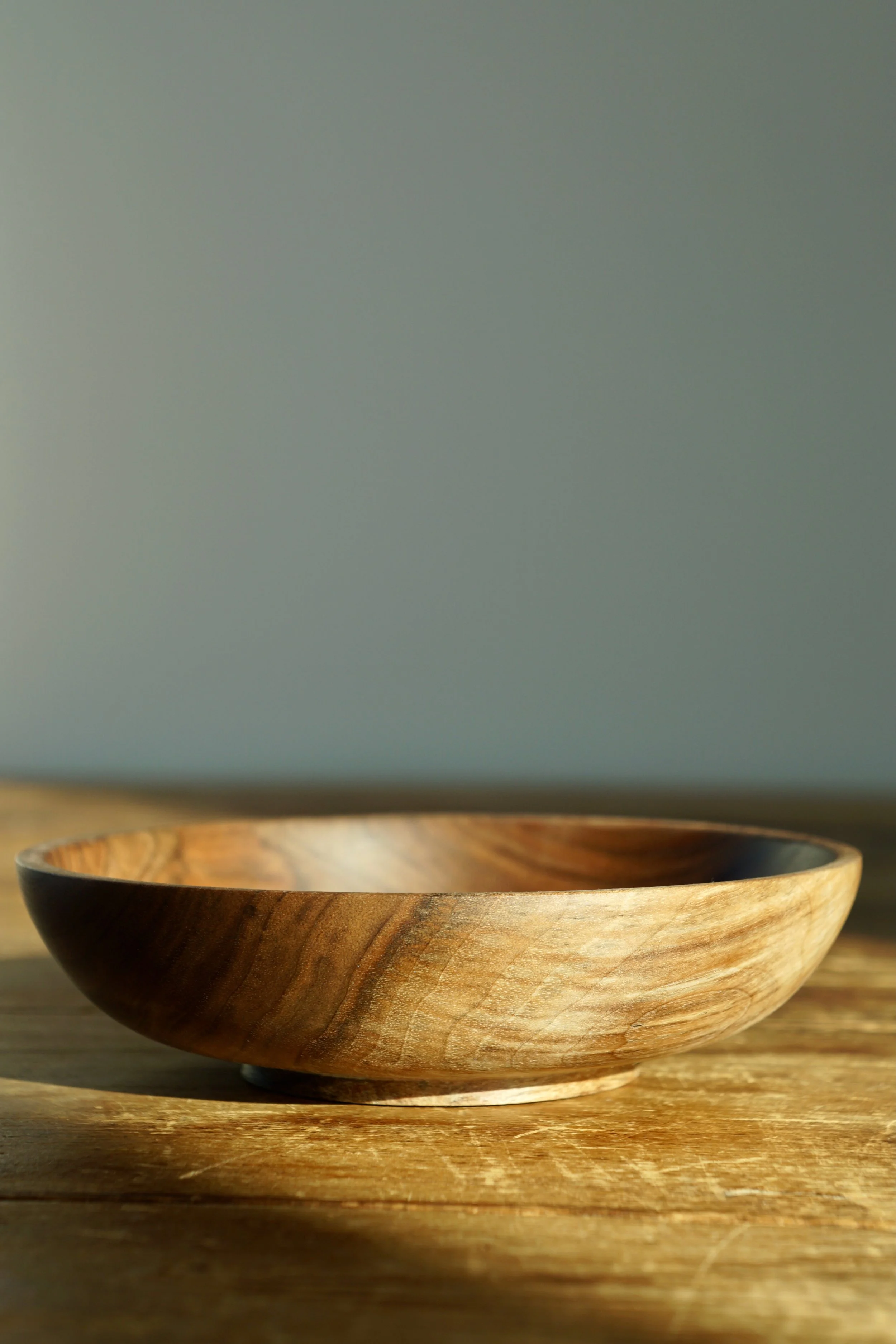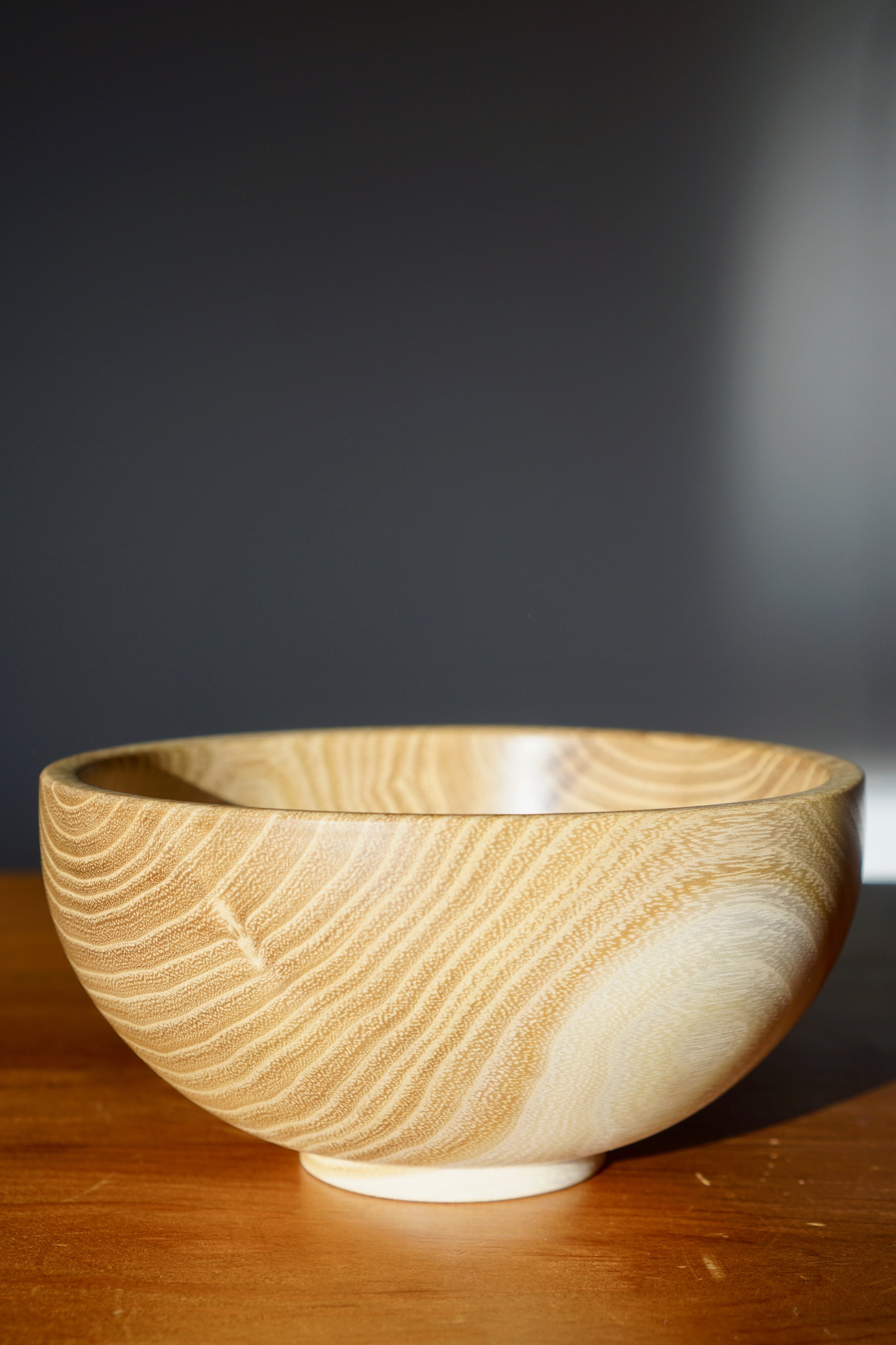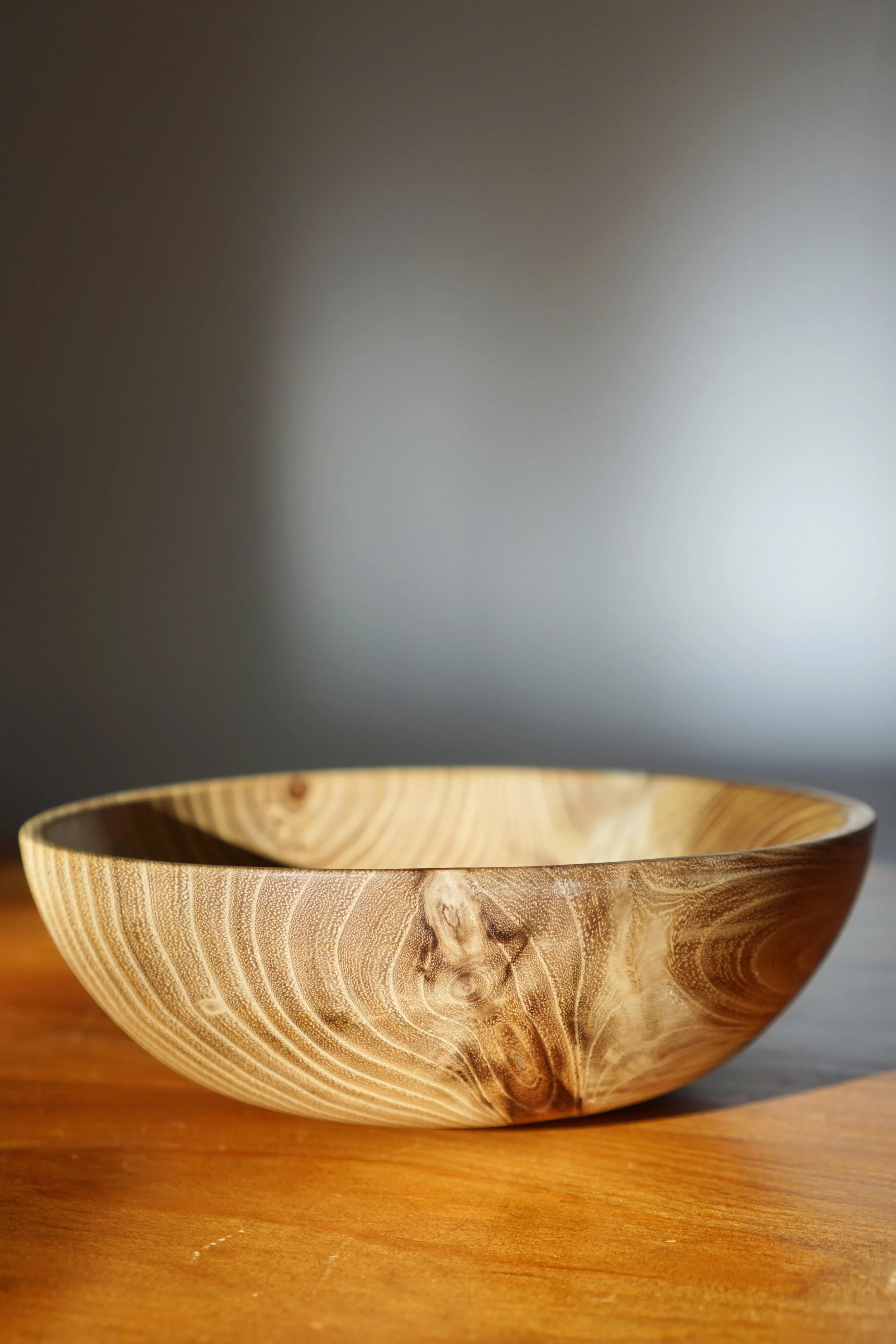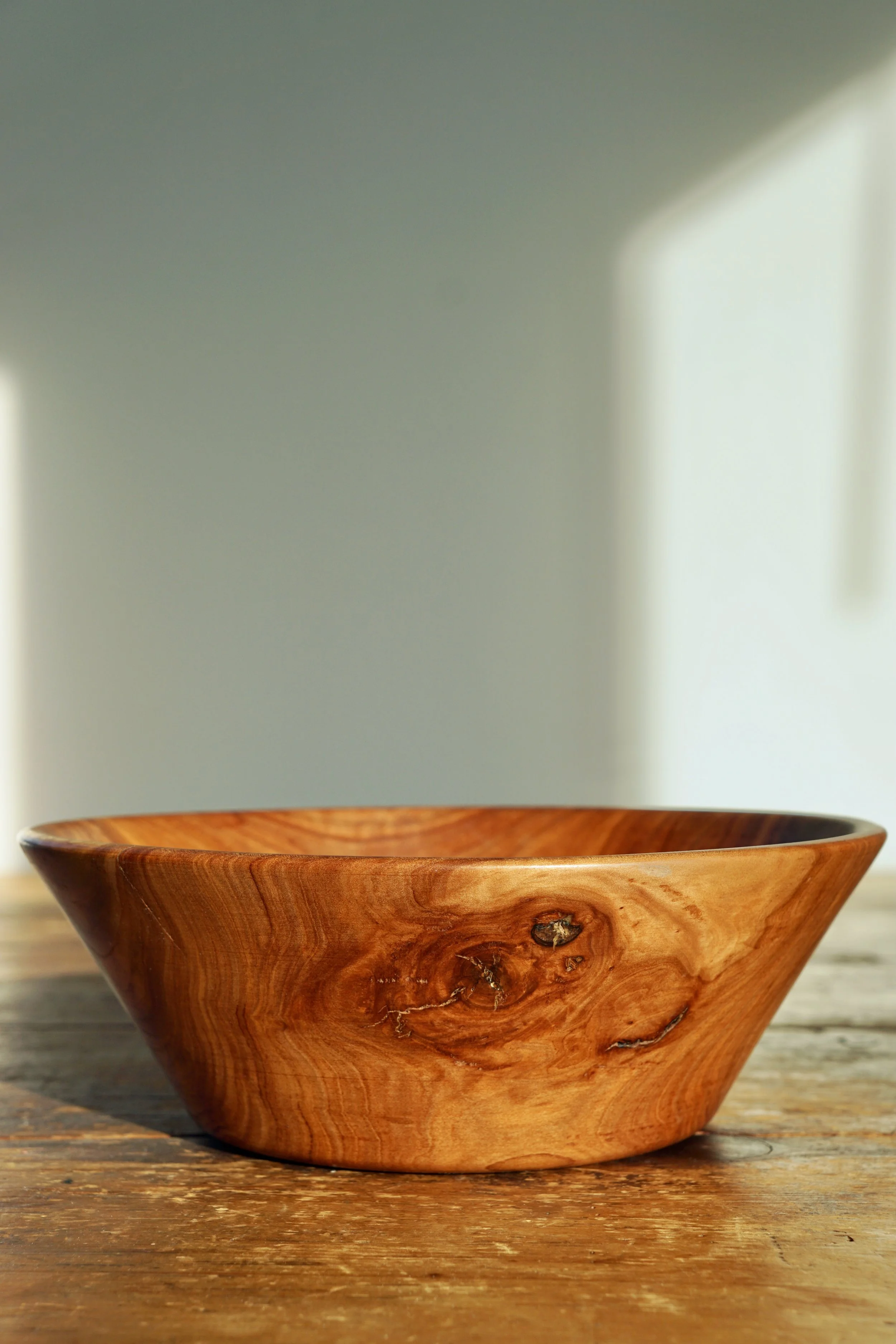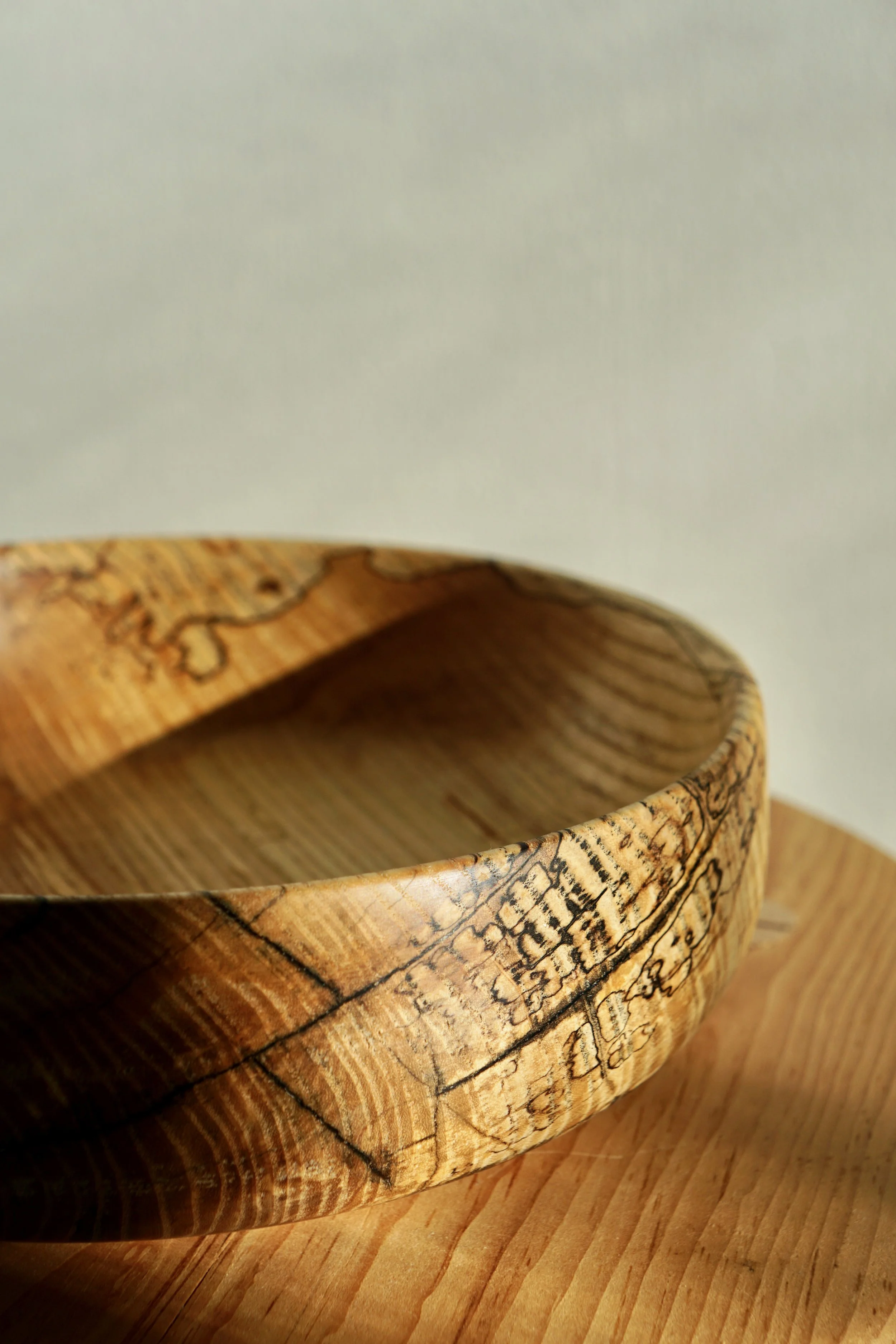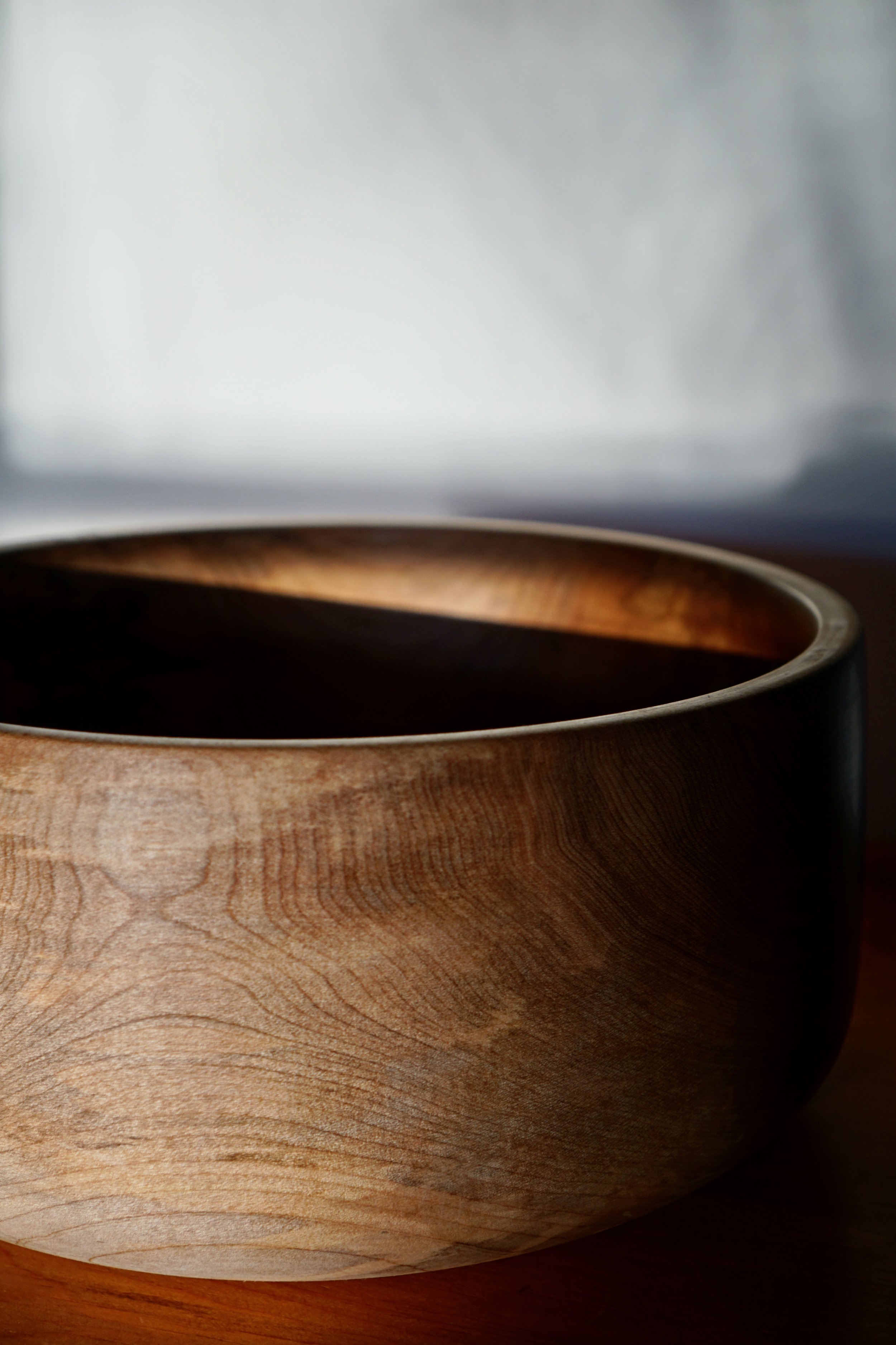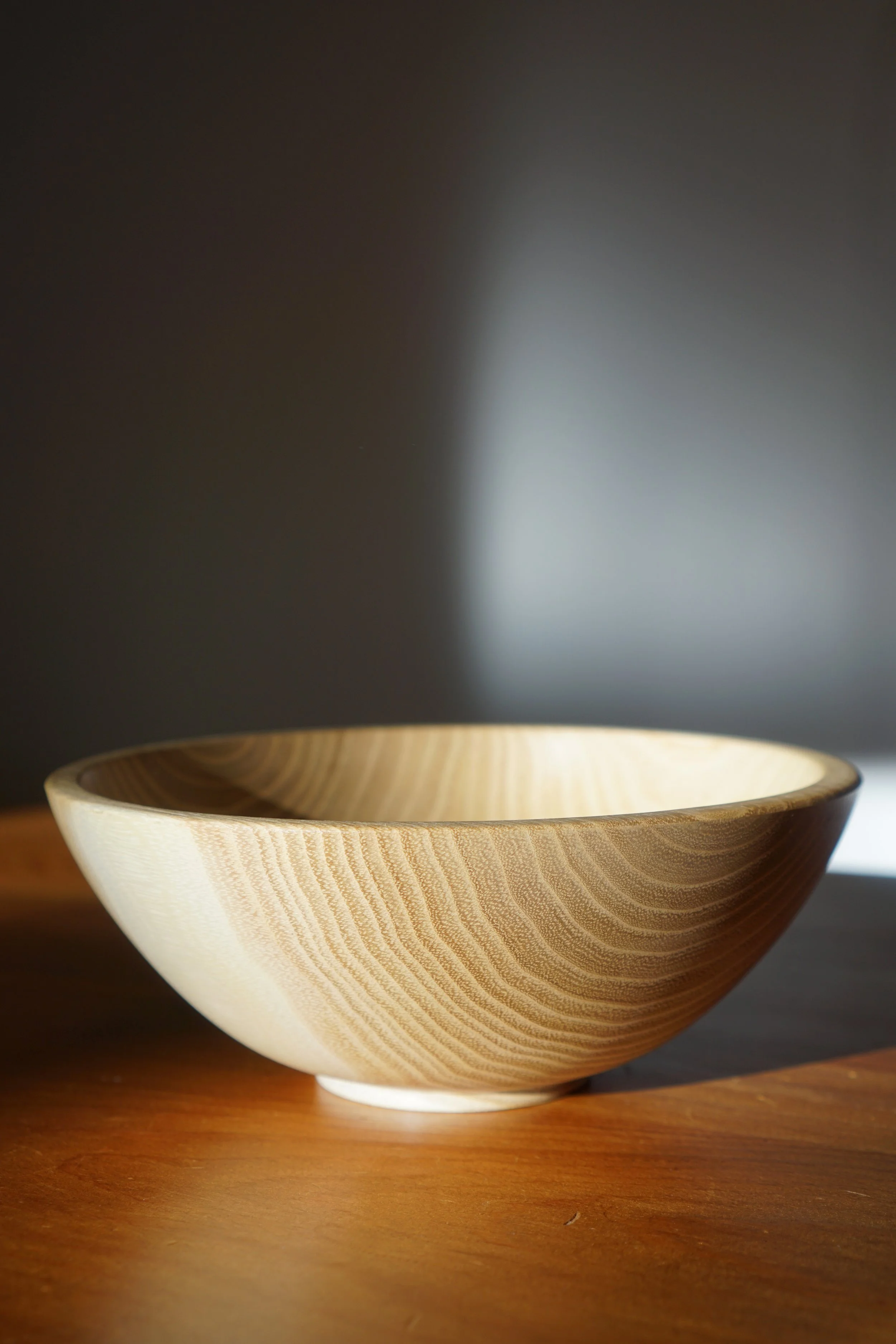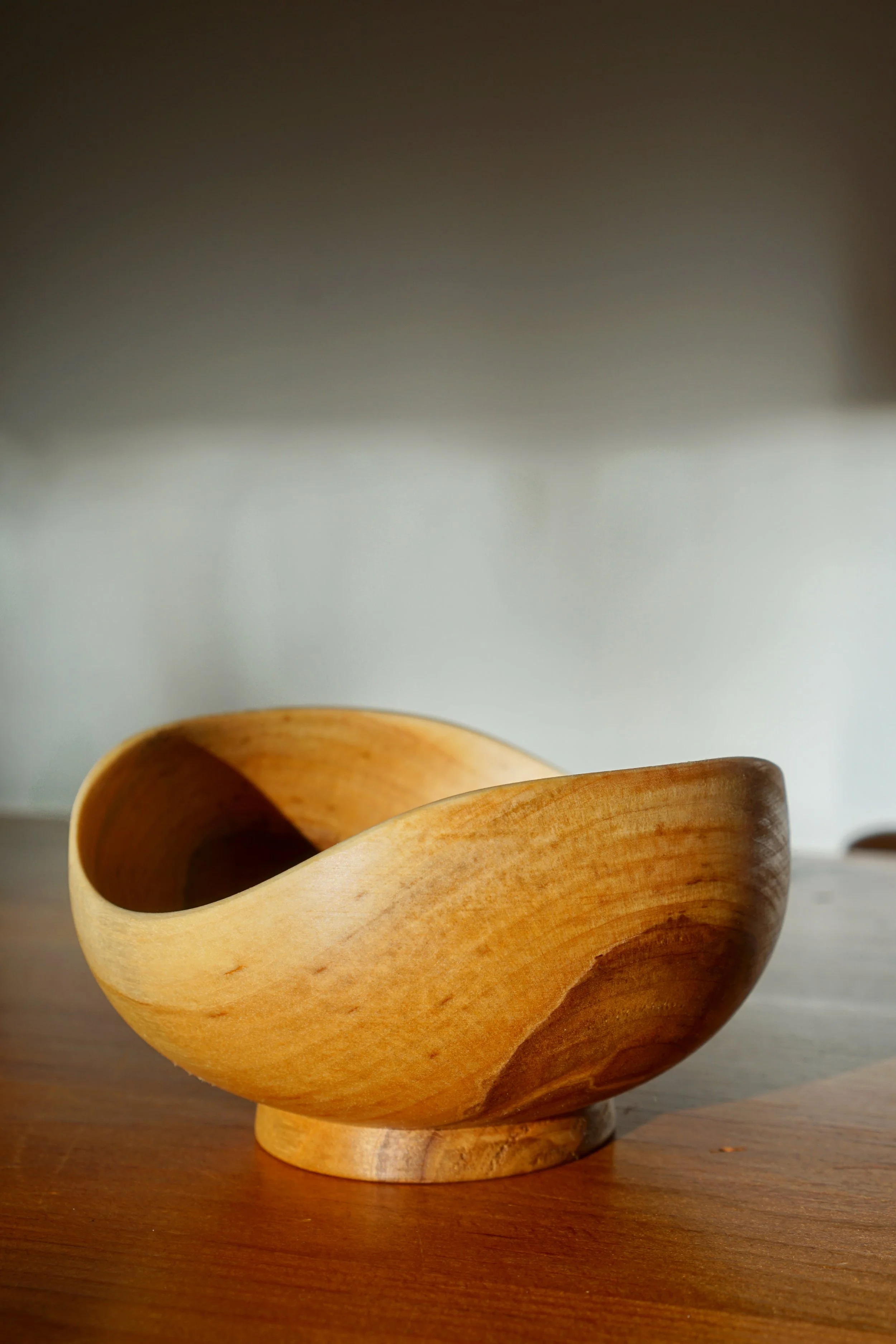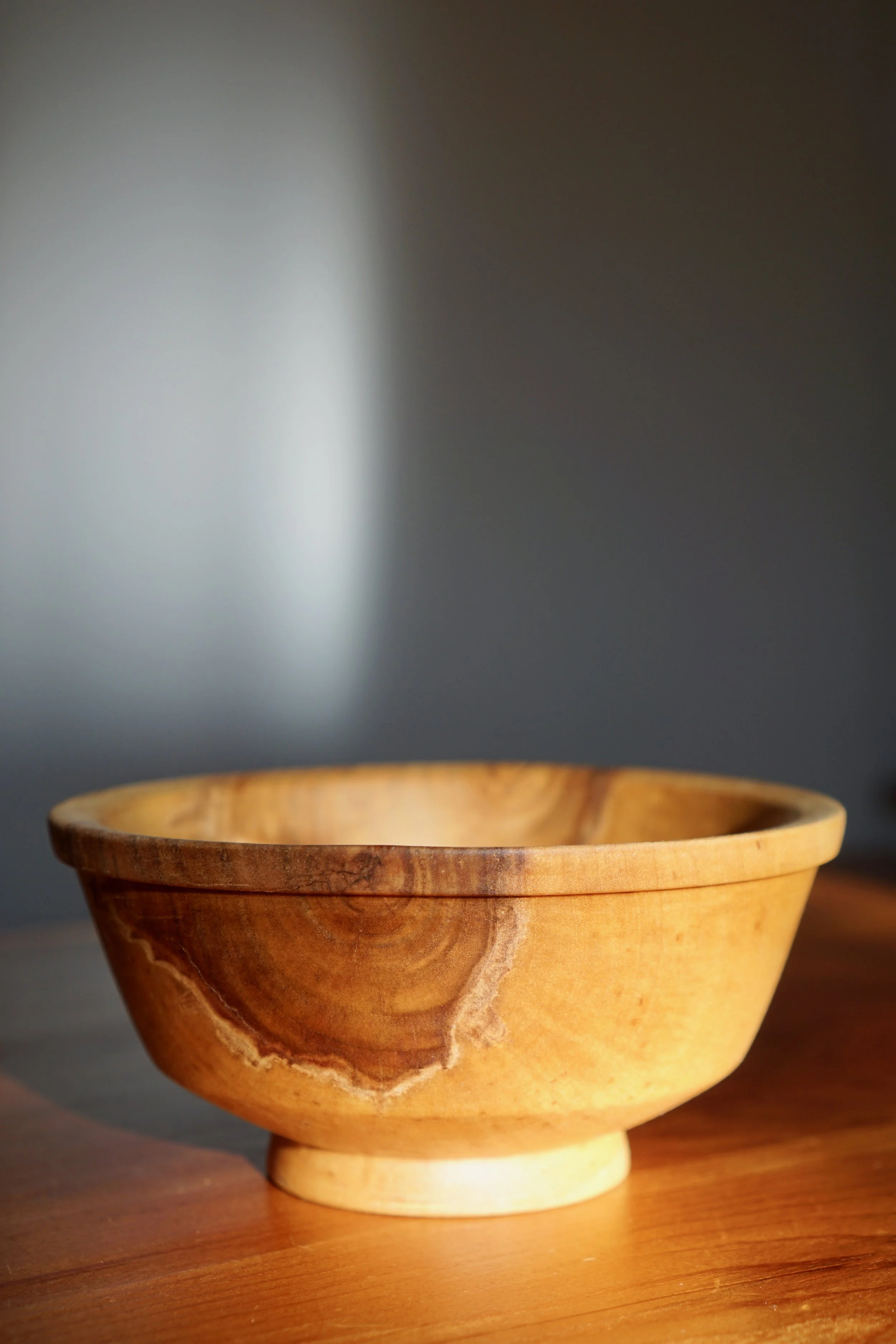All bowls are made from locally sourced Maine wood, often spalted and salvaged. The forms and finishes therefore may have blemishes, cracks, and imperfections. I like the wood itself to dictate the final forms. Finishes are food-safe linseed oil and beeswax, and can be maintained with an occasional application of an oil of your choice.
Maple
These bowls originate from an assortment of various Maples from my log pile – all are soft (Red, Silver, and Norway) acquired from various downed trees and backyard finds. Maple’s closed, straight grain make it an exceptionally durable (and very pretty) material for bowls.
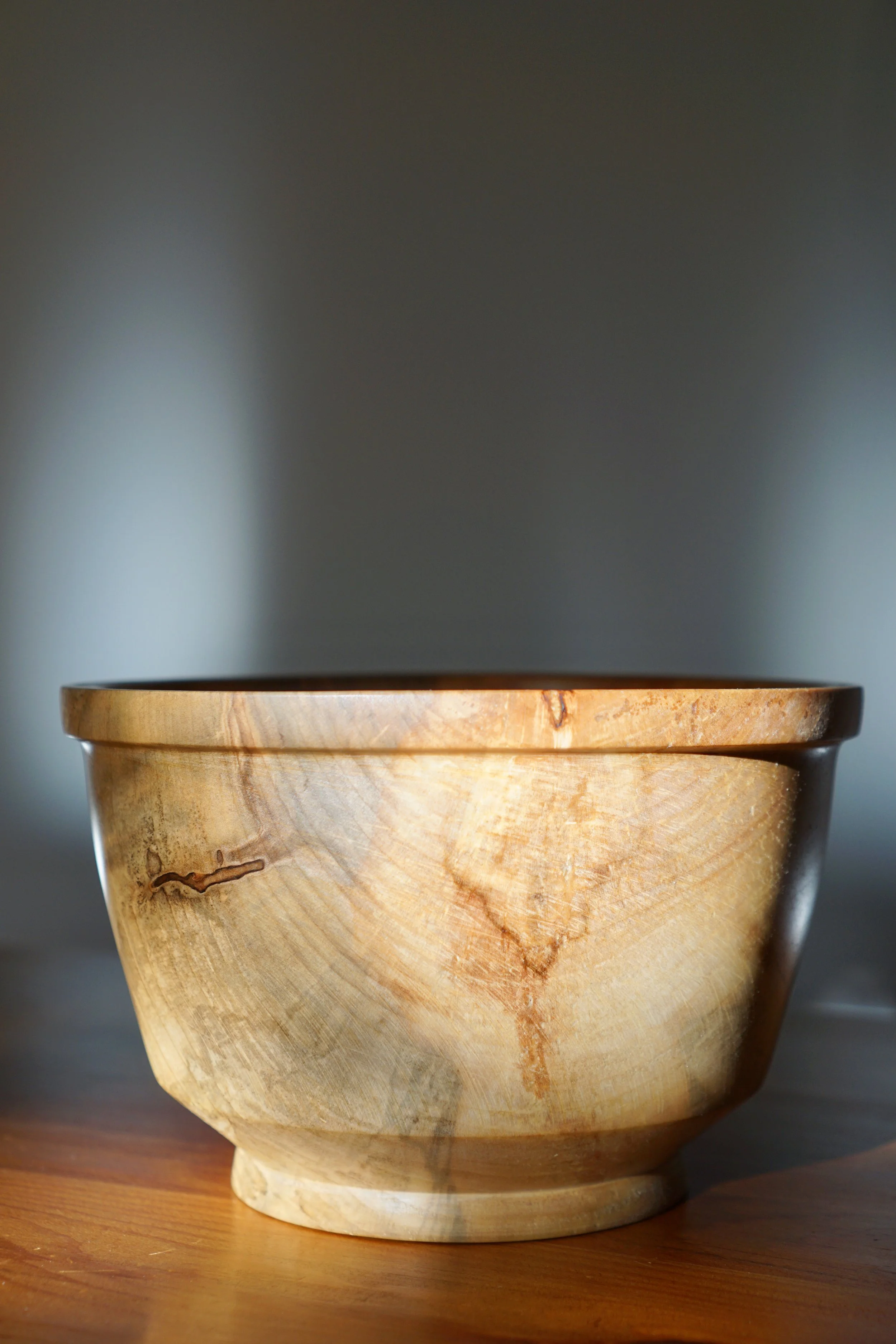
Spalted Maple
This tree came down in a storm a few years ago in a neighbor’s yard up the street. It was left decaying outside for about 4 years, so I knocked on the door and the owner was happy it was put to use. There were 3 trunks growing out of one stump! The wood turned out to be beautifully spalted, though a lot was too decayed to be usable.
Spalting is staining that occurs in the wood from the decaying process and the minerals from fungi. Insect trails leave interesting patterns and streaking… if you can catch it before it’s too soft to work, it can produce striking, one of a kind pieces. Spalting can occur in many hardwoods, though Maple seems to be the most common in Maine.
Oak
This 100 year old Oak tree was defoliated and killed by brown tailed moth caterpillars. I was enlisted to take it down, and plan to use the rest of the wood for some future woodworking projects (and for firewood this winter). Once the temperatures drop below freezing, I plan to remove the other standing dead Oak trees this winter, so my tractor doesn’t rip up the ground.
Apple
This was a very old tree in my nephew’s front yard that needed to be removed because it was bug-infested and no longer healthy enough to produce fruit. Most of the tree was decayed as it was hollow but I was able to salvage some of the trunk.
Apple wood is very dense hardwood with beautiful color contrasts between the heartwood (dark) and sapwood (light). I used branch wood for these (since the trunk was hollowed out) so most of these bowls are on the smaller side, with a few live-edge pieces.
Sold out
Ambrosia Maple
This 140 year old Sugar Maple was knocked over in a thunderstorm in Cumberland, Maine. As an arborist, I was called to clean up the tree since it was blocking the home’s driveway. We used the branches for firewood but salvaged the trunk. Hopefully there are some nice surprises ahead with this log but you never know until you get it on the lathe and see what it holds.
Ambrosia maple is a hardwood known for the unique patterns left by the boring of ambrosia beetles when they inhabit the wood and lay their eggs. You can spot ambrosia by the straight black boring lines. They’re most prevalent in Sugar Maples but can affect any Maple variety.
Sold out
Locust
Since I was a kid, I observed a linden tree in a neighbor’s yard that was gigantic – a 7’ wide stump. When I noticed one day that it had disappeared, I stopped to talk to the owner; loggers had taken it down (it’s too soft for bowls anyways) but left a pile of Norway Maple and Locust. Locust trees grow in little groves of 5-6 because they drop their seeds and propagate right around themselves. This wood is extremely dense and durable, and was historically used for fence posts or to make pegs for timber frames since it doesn’t rot. The pieces I found were pretty small logs, but have a uniquely pale to greenish-yellow color.
Sold out
Walnut
As an arborist, I was asked to prune this 80 year old Walnut tree and took an 8” diameter branch off that was blocking sunlight to the owner’s garden. I was fortunate to be able to bring home this wood, even if just one branch.
Walnut is prized by woodworkers for its rich dark color and workability, but is relatively rare in Maine in large specimens; it’s mostly planted for shade & ornamental trees. Walnut wood darkens with age and sunlight exposure, and has a reputation of durability yet is relatively soft for a hardwood.
Sold out
